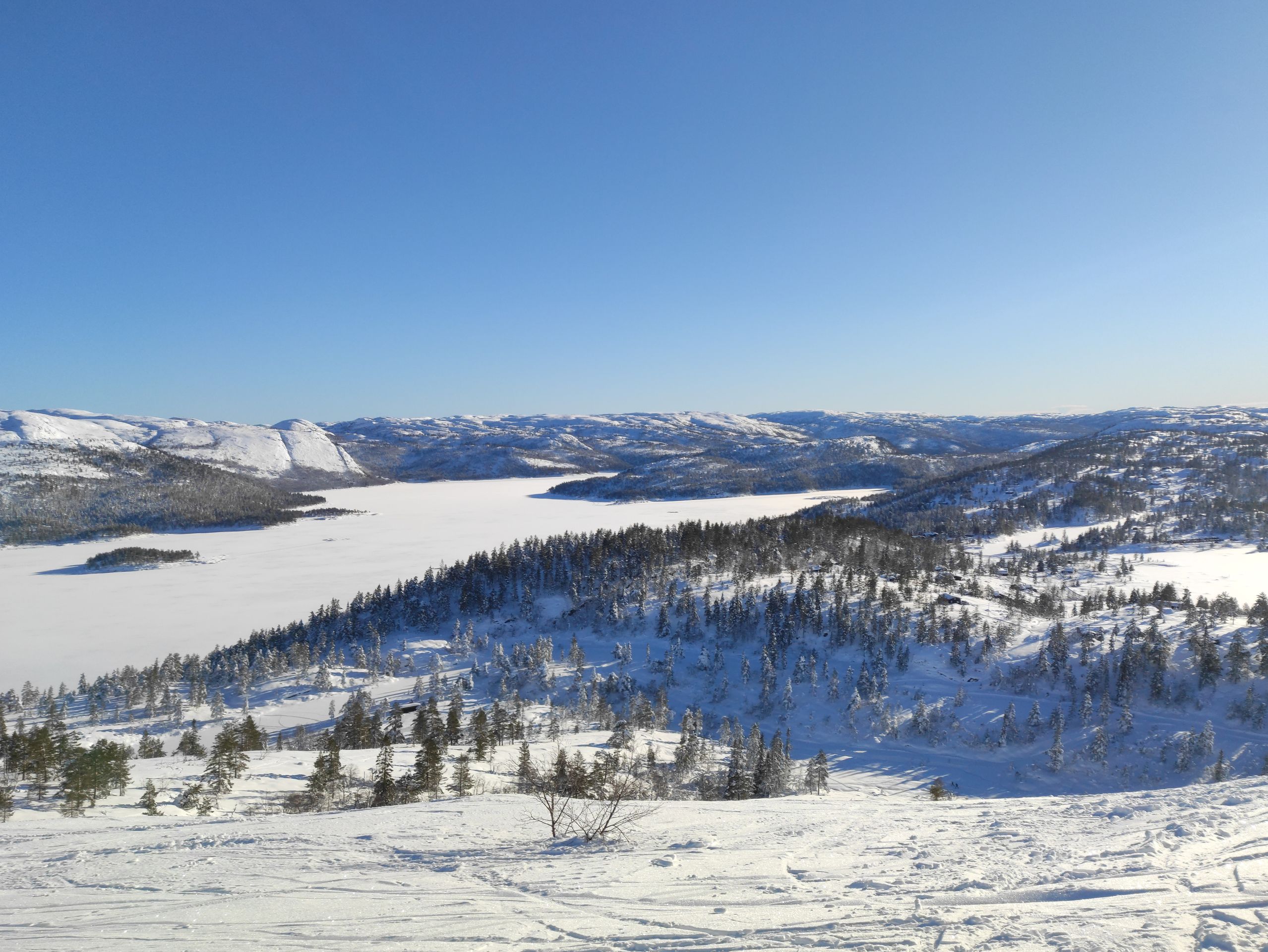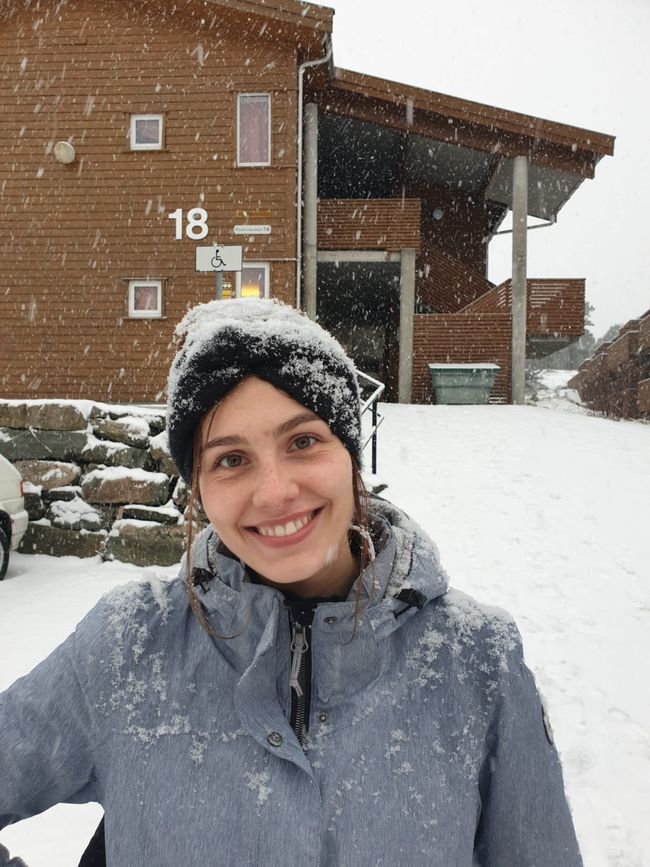Trip to Northern Norway Part 3: Sightseeing and Surfing
Julkaistu: 10.04.2021
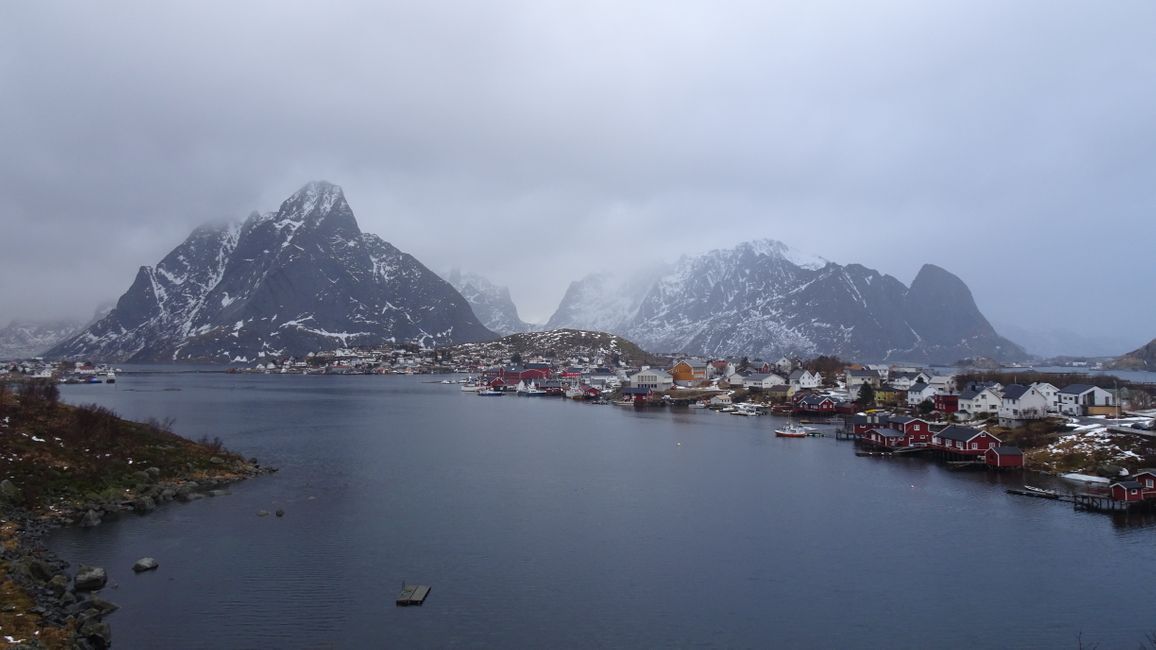
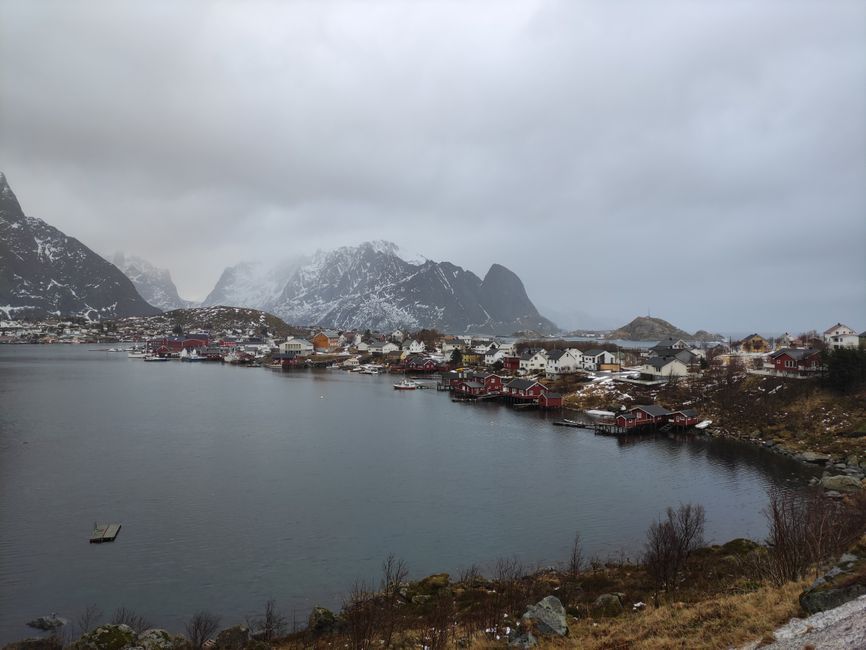
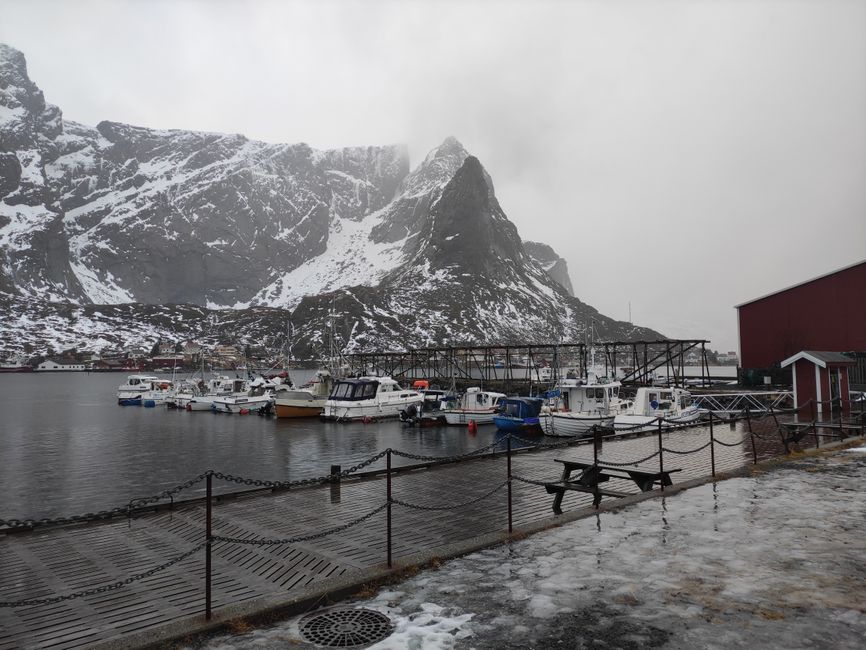
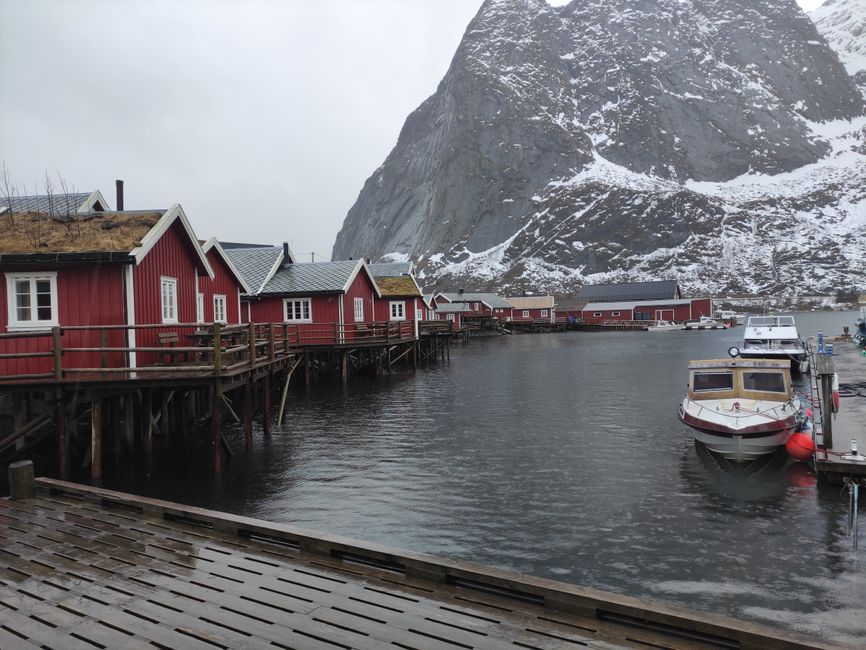
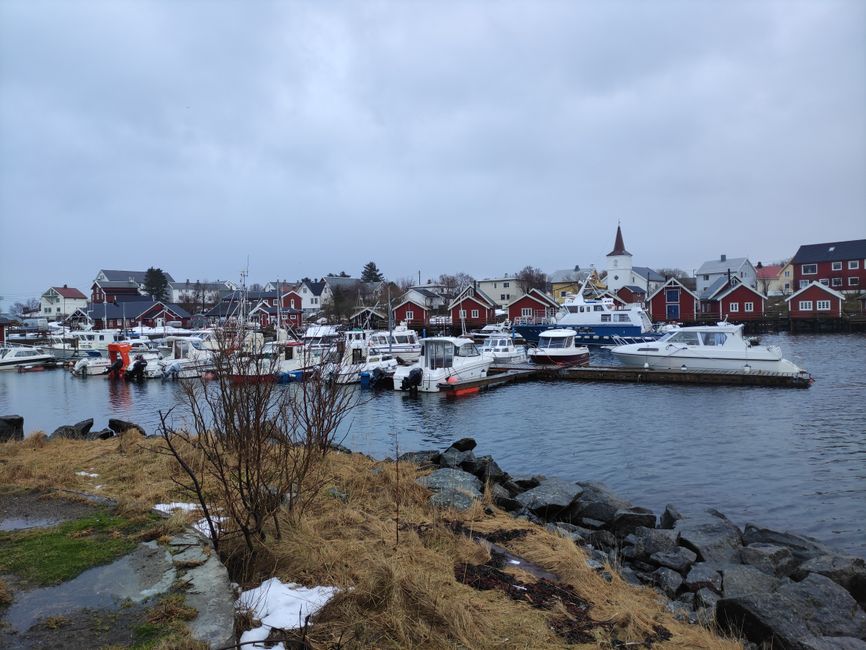
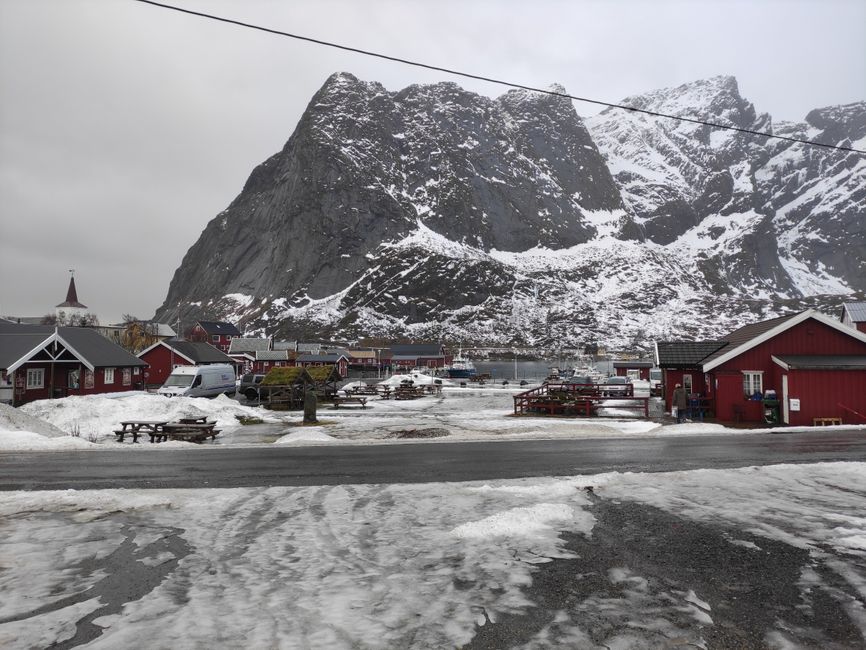
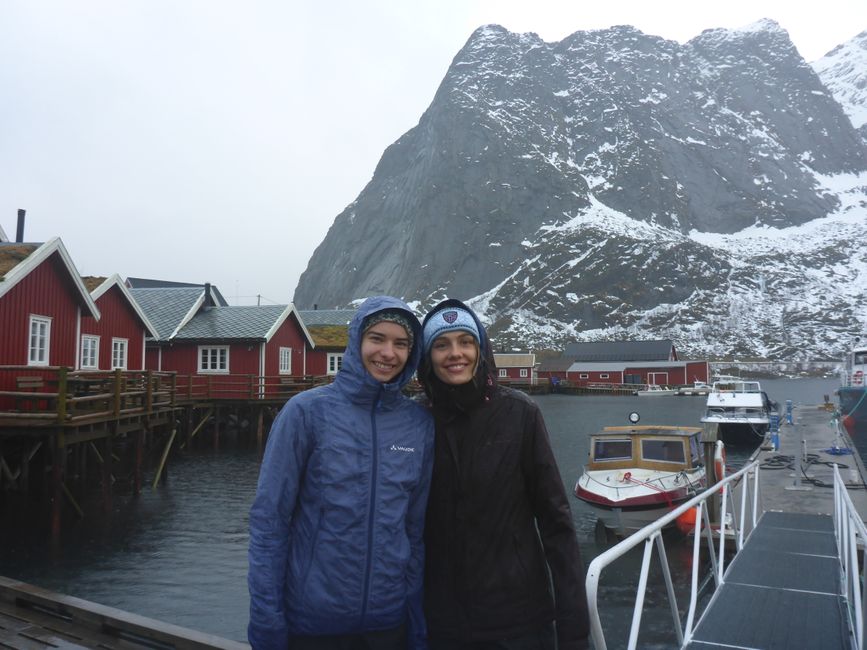
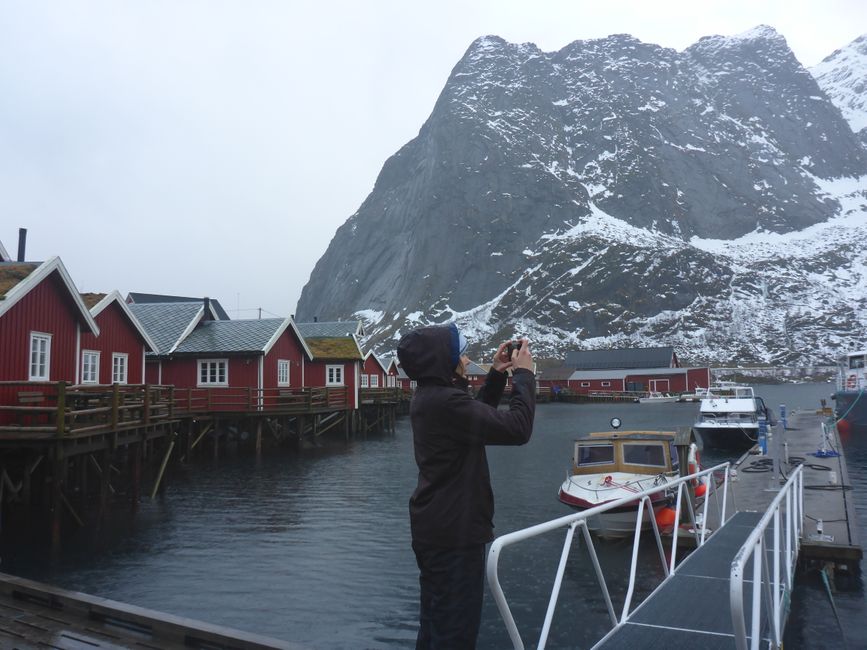
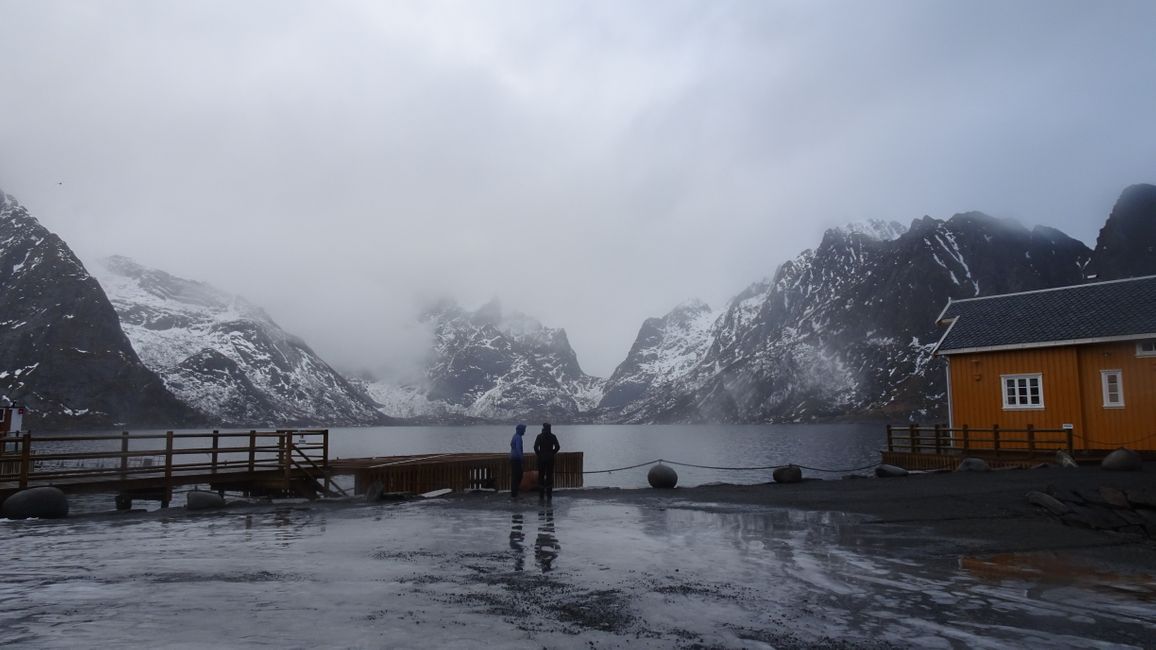
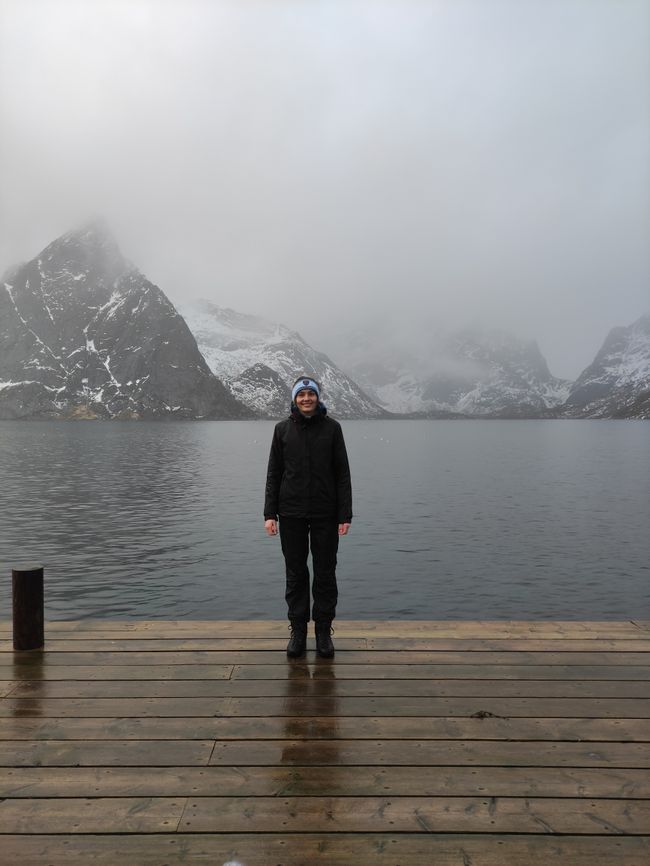
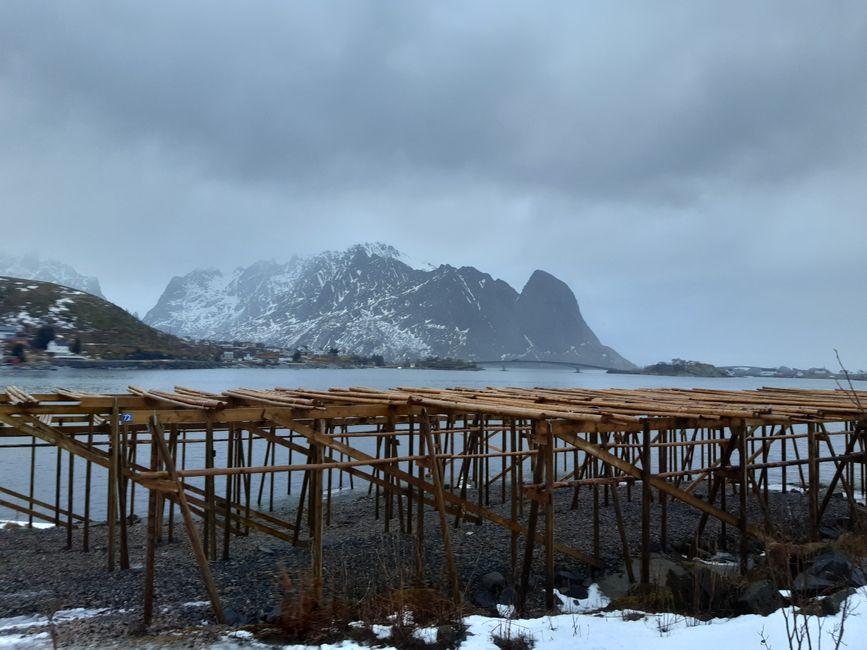
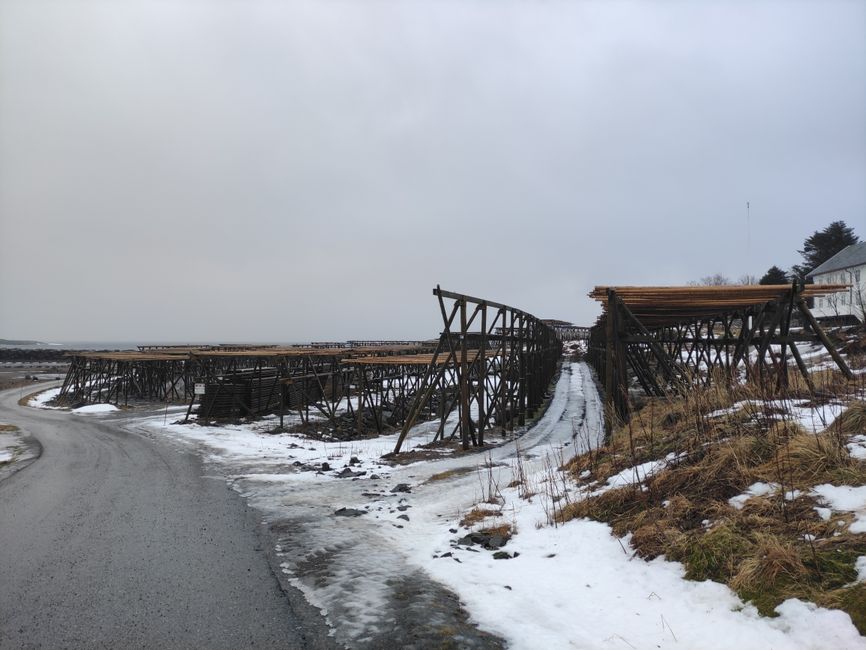
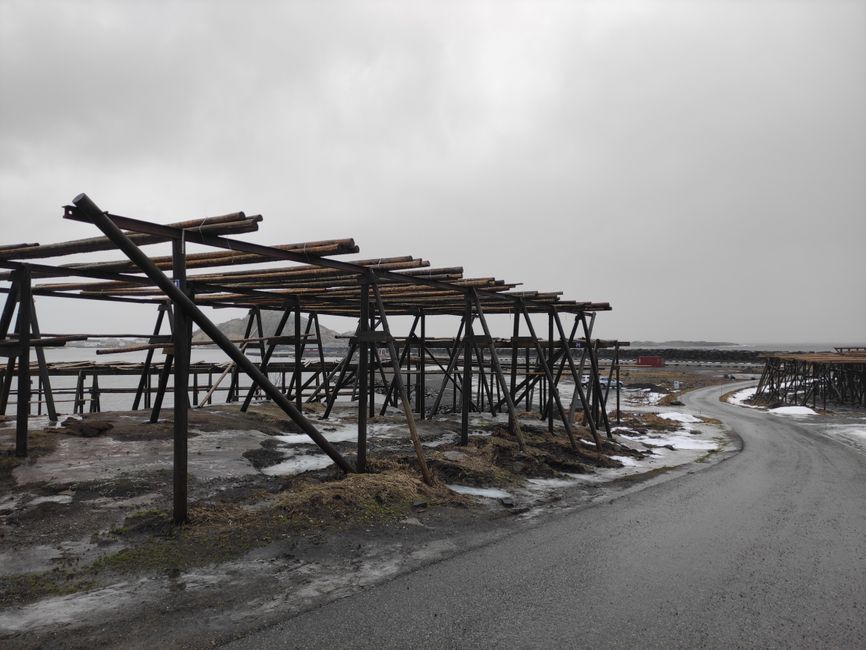
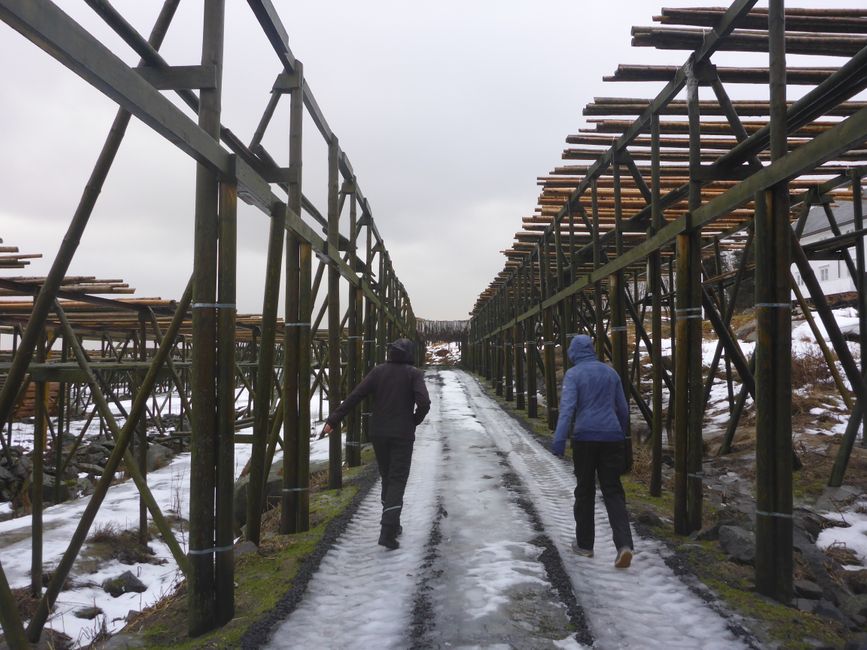
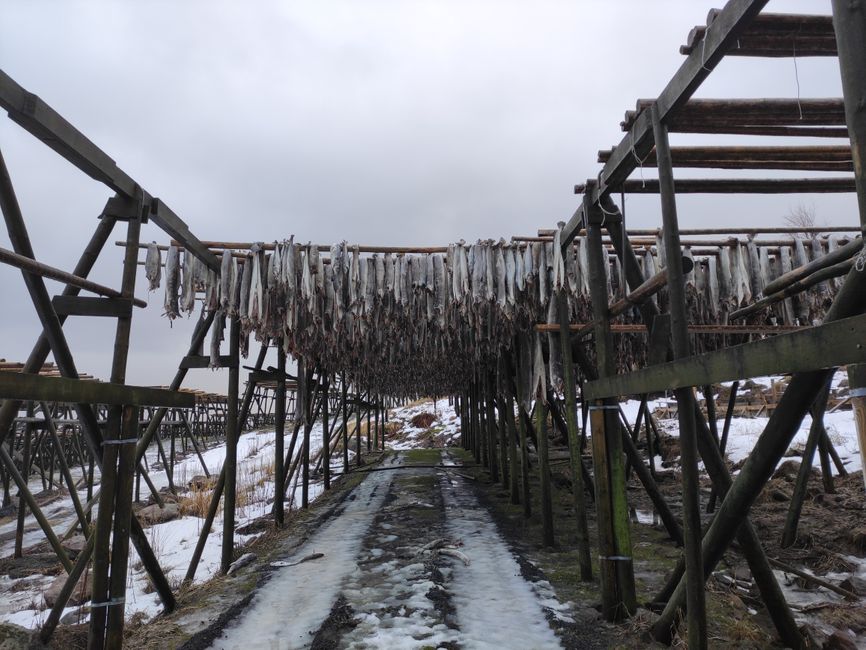
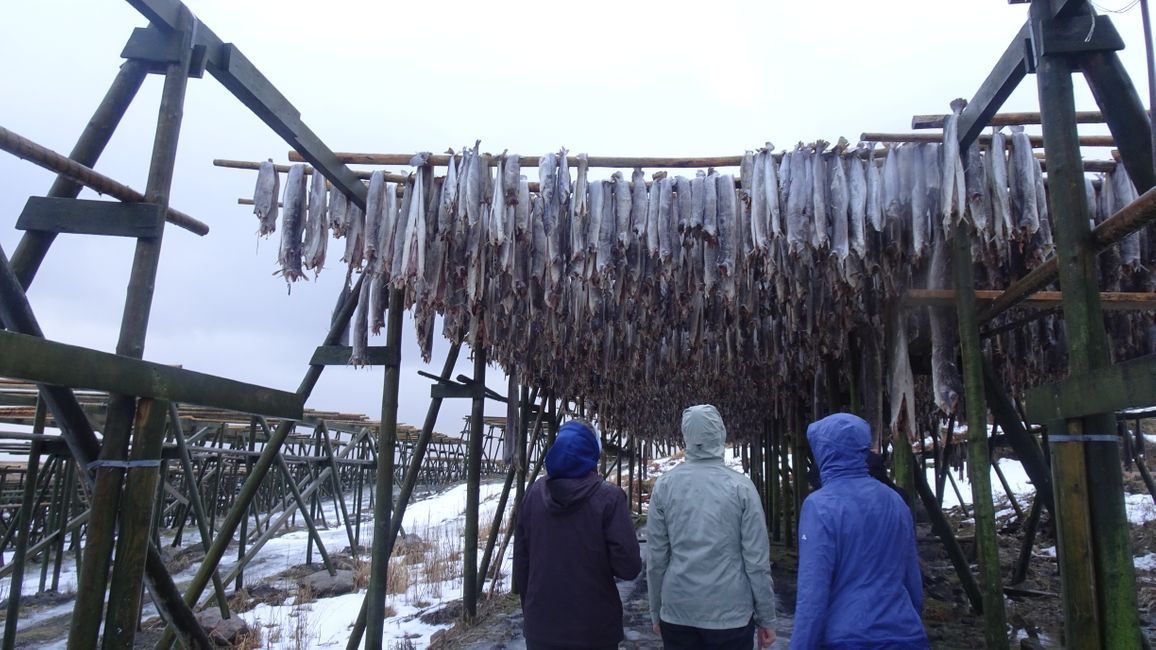
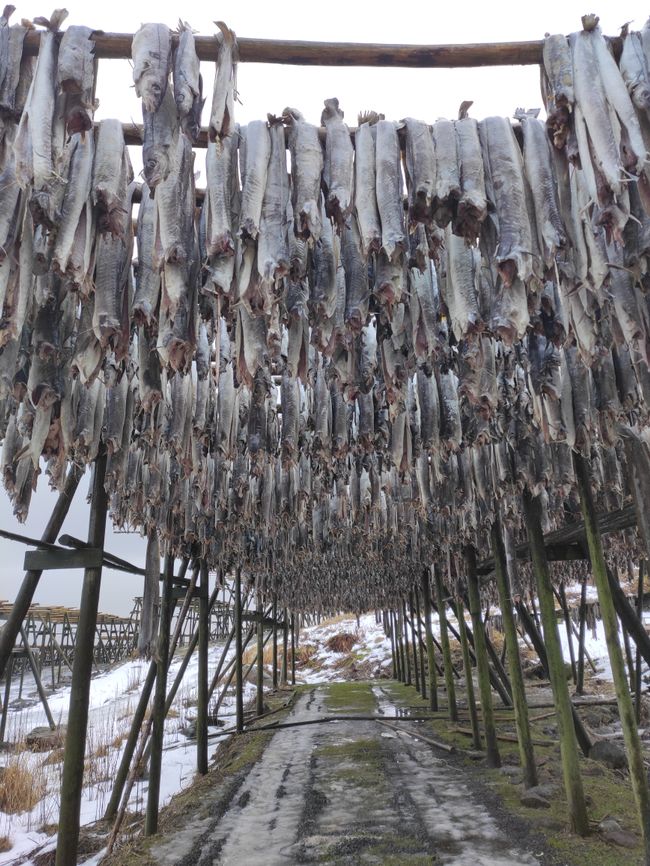
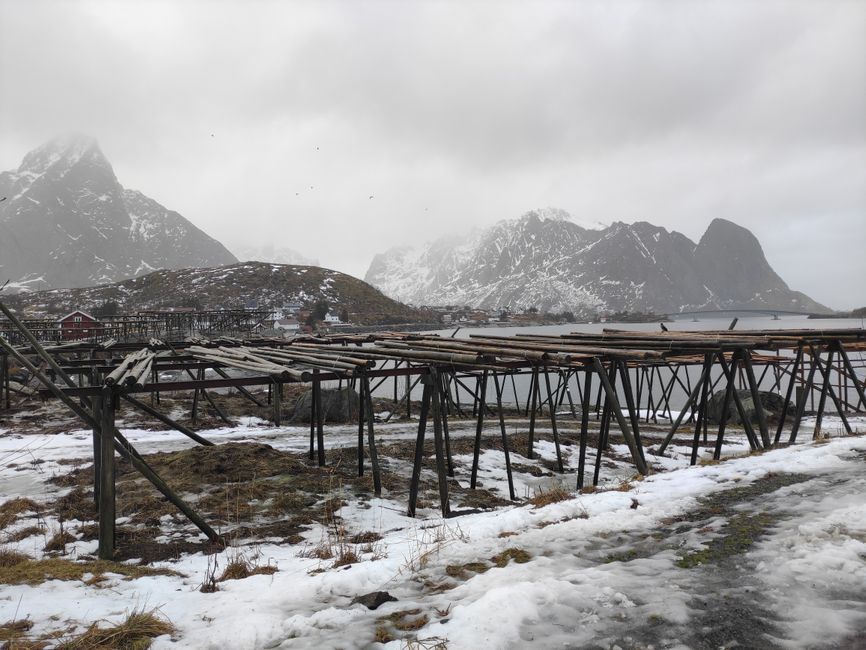
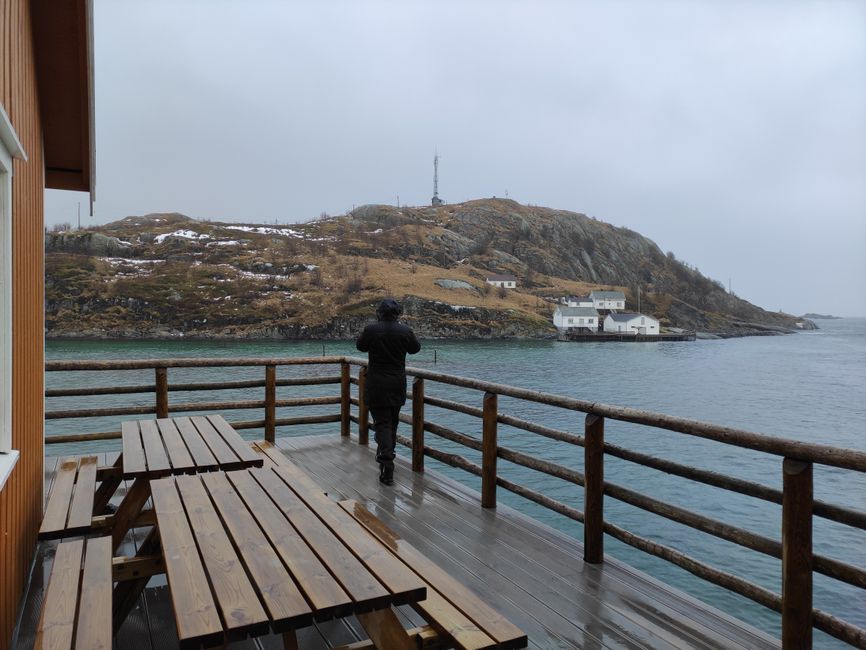
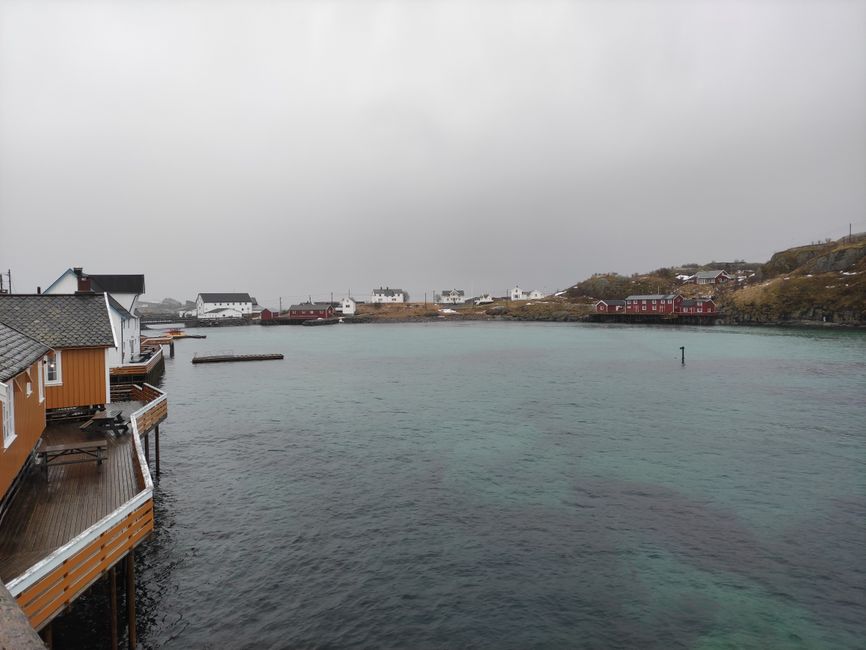
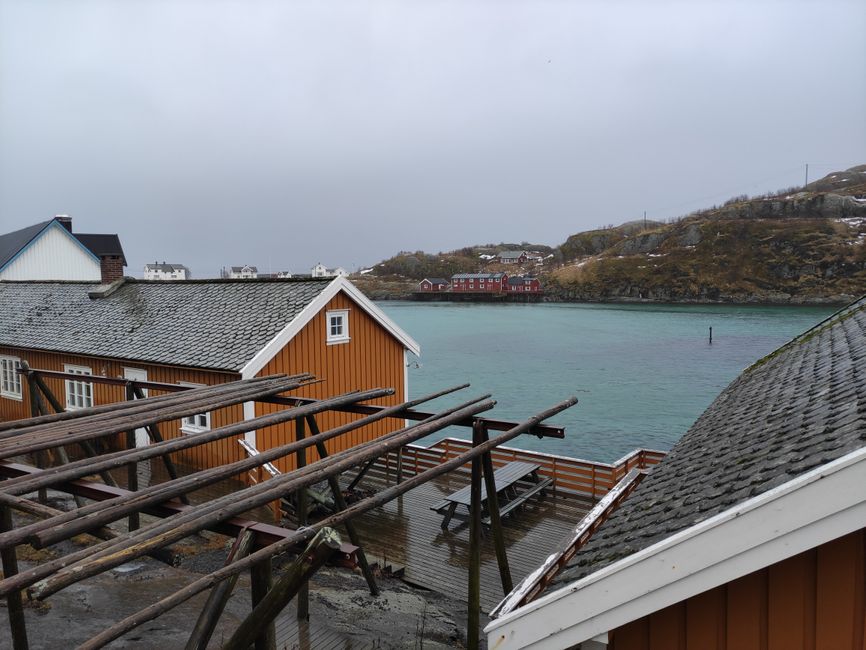
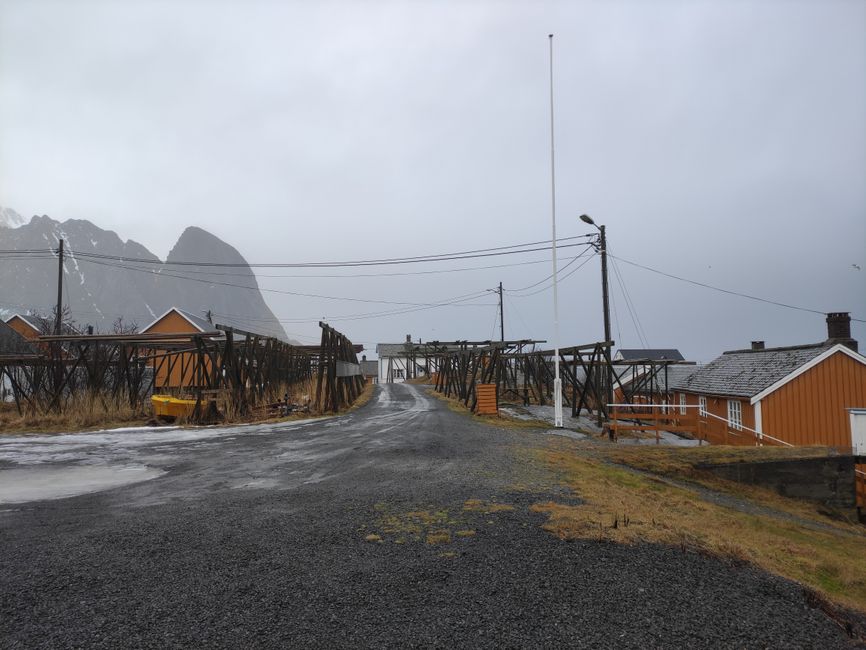
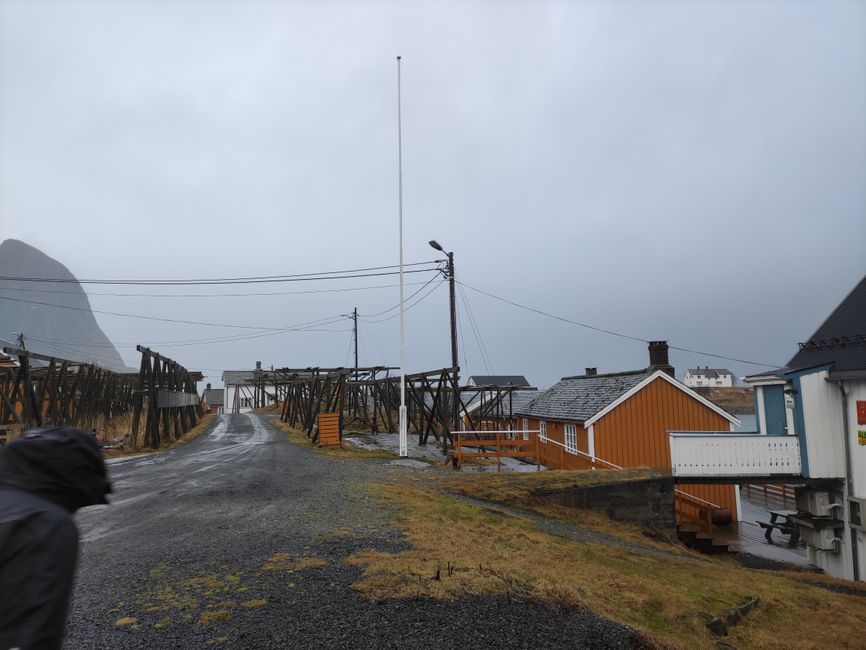
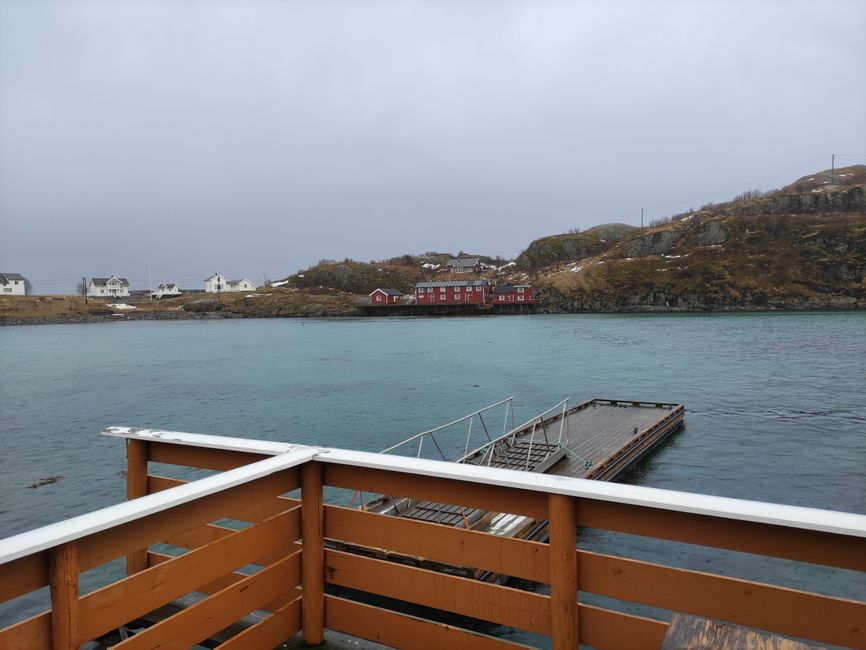
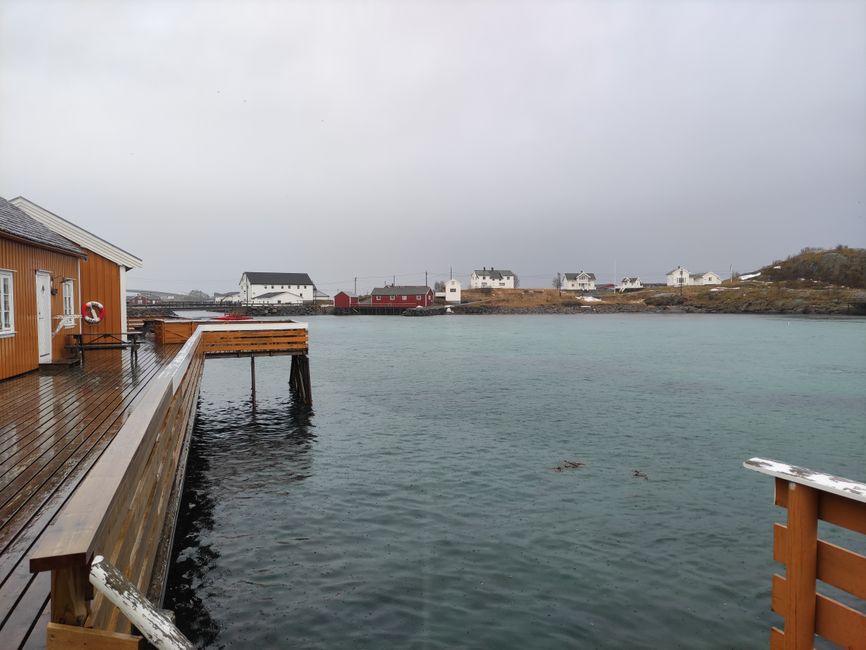
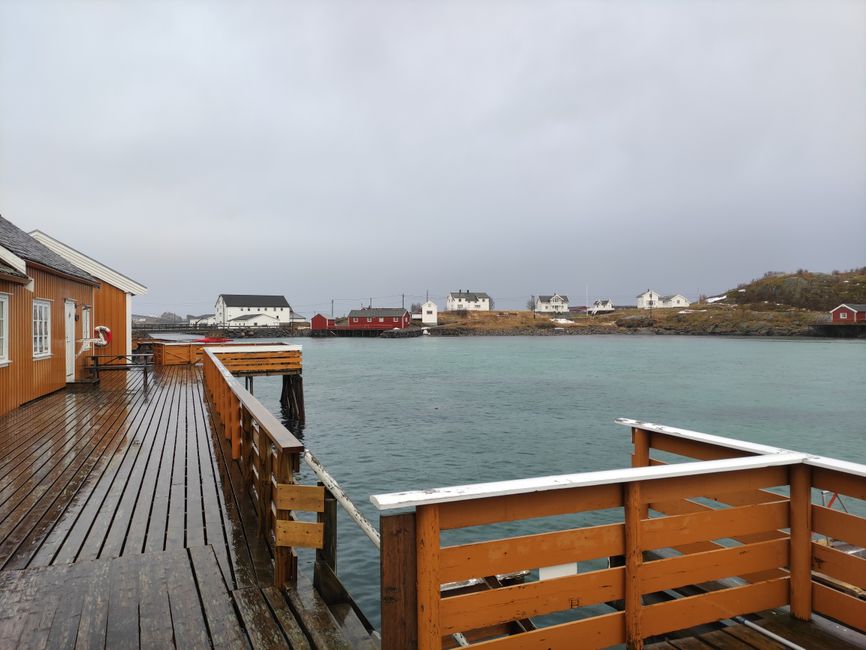
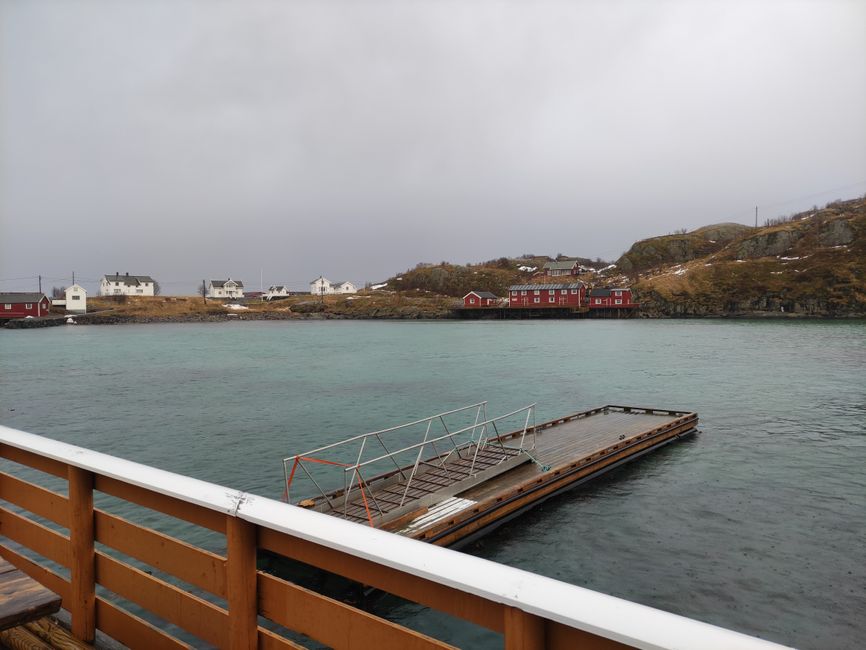
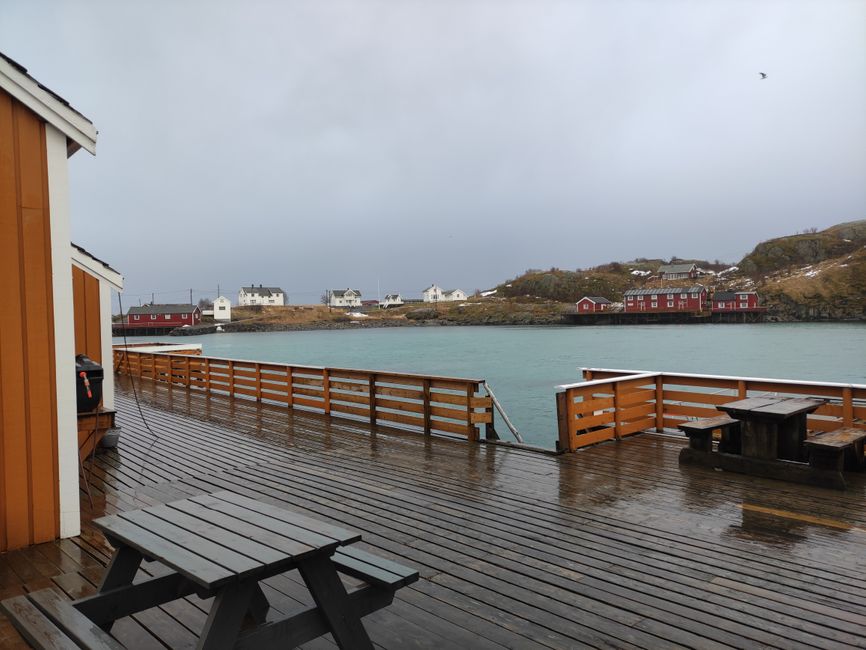
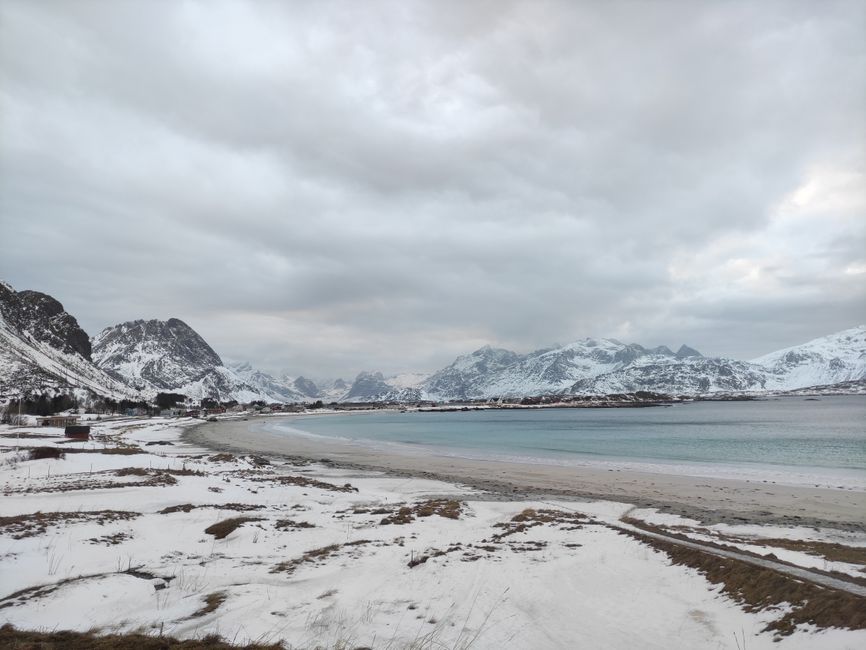
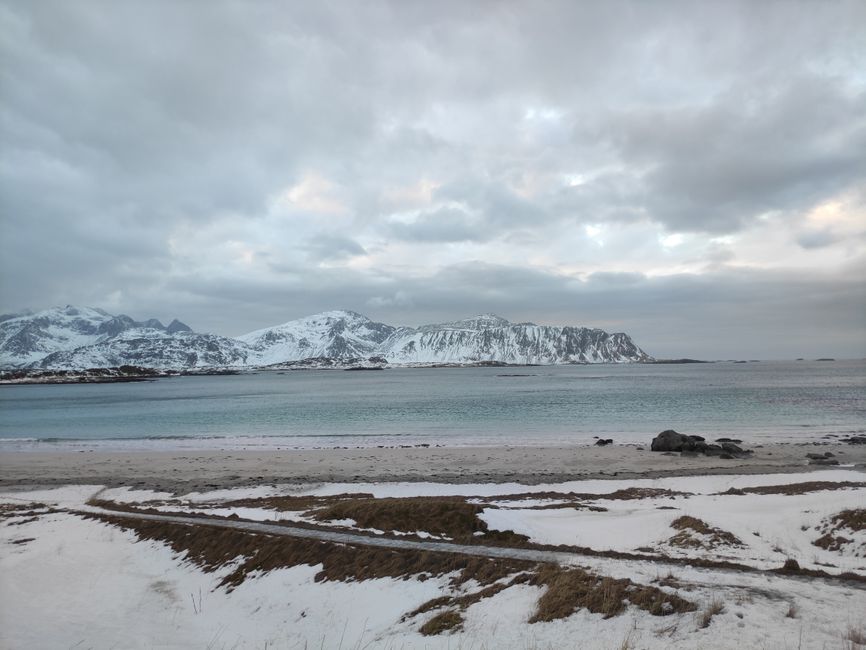
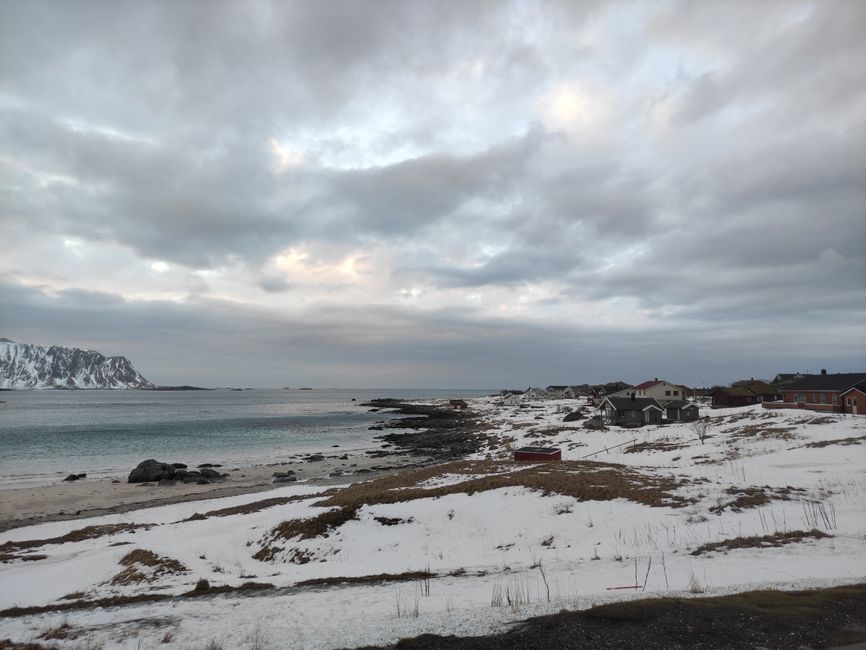
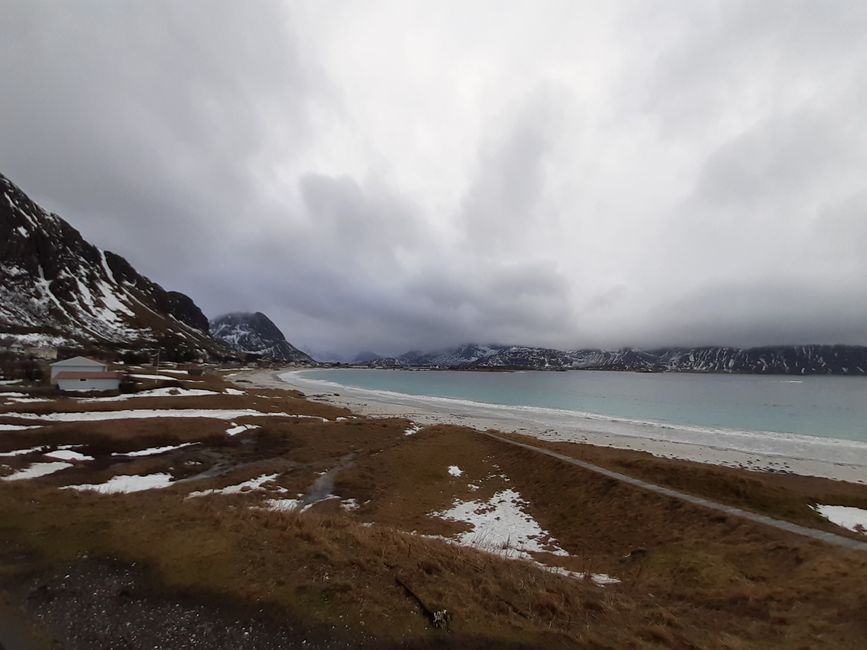
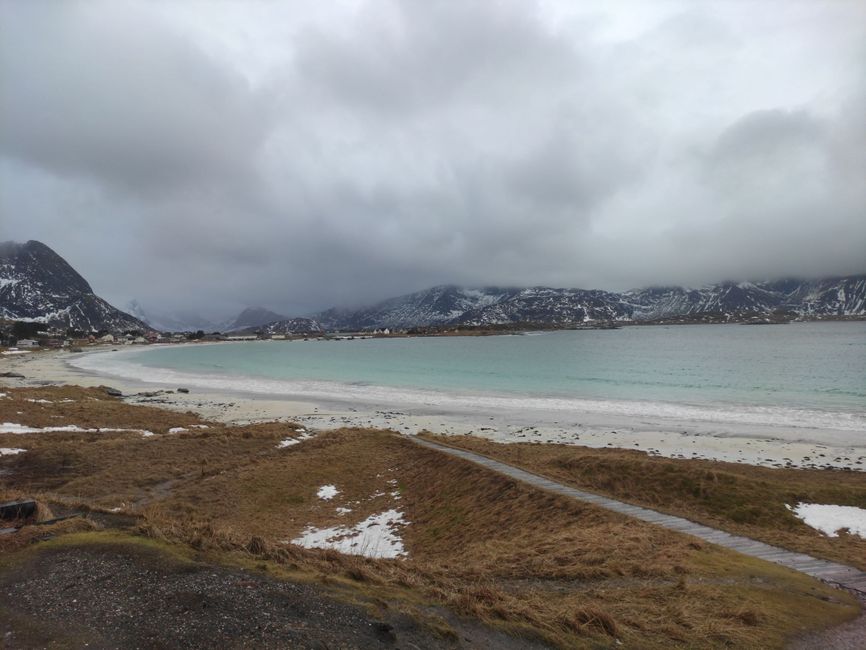
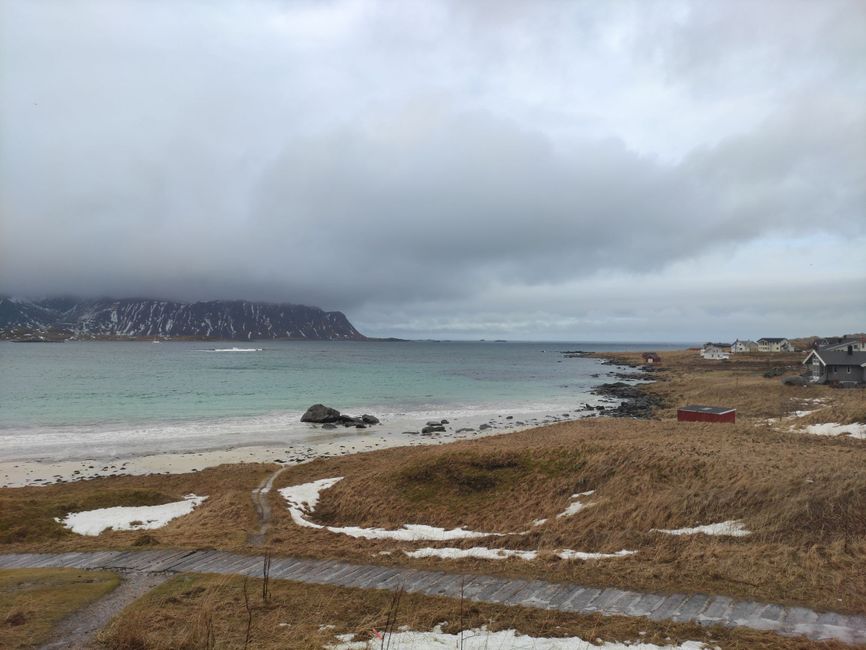
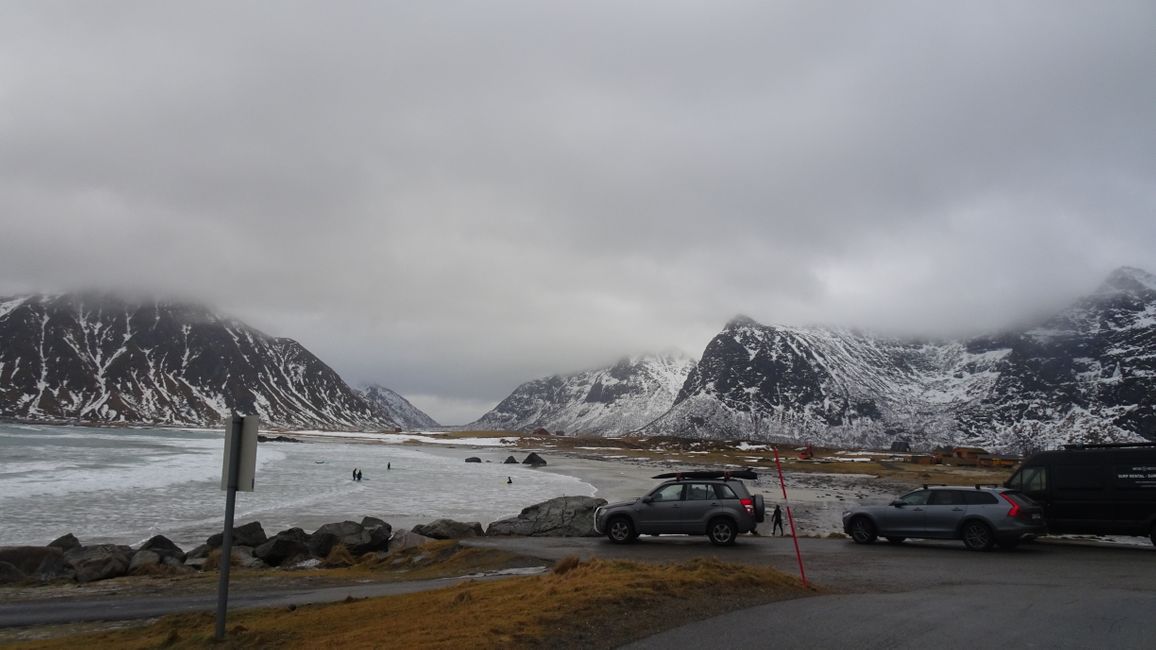
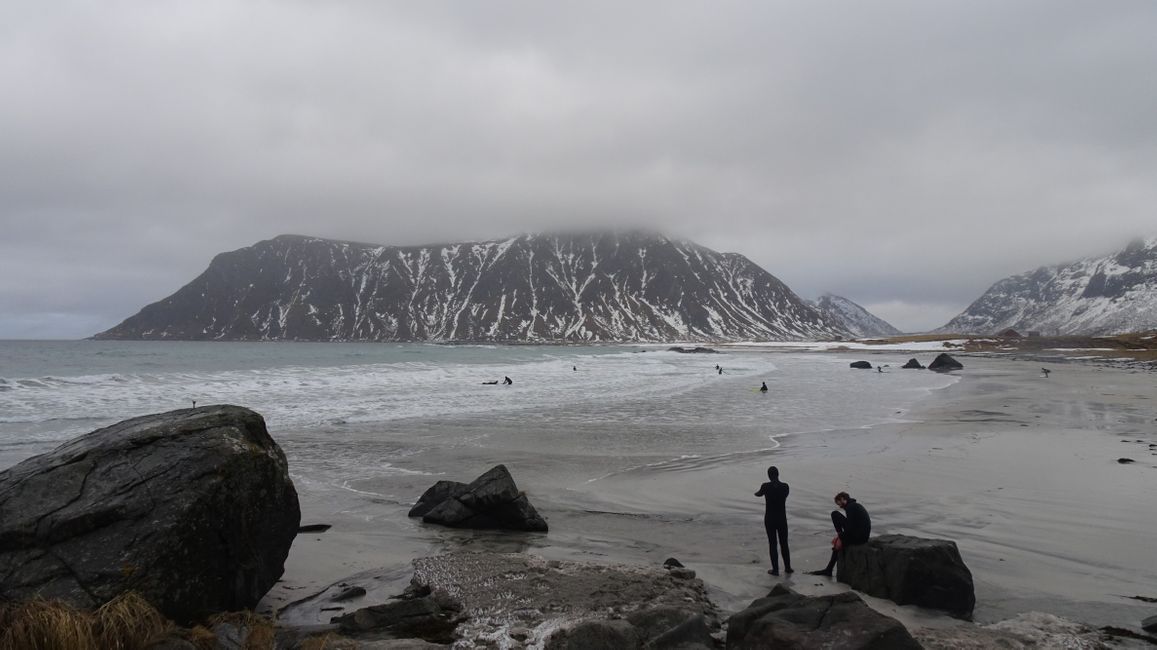
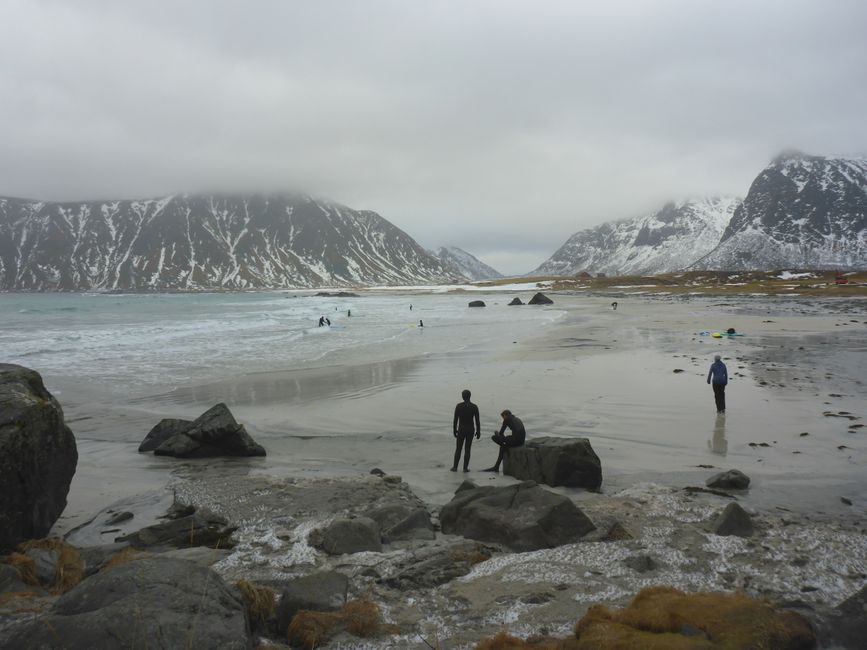
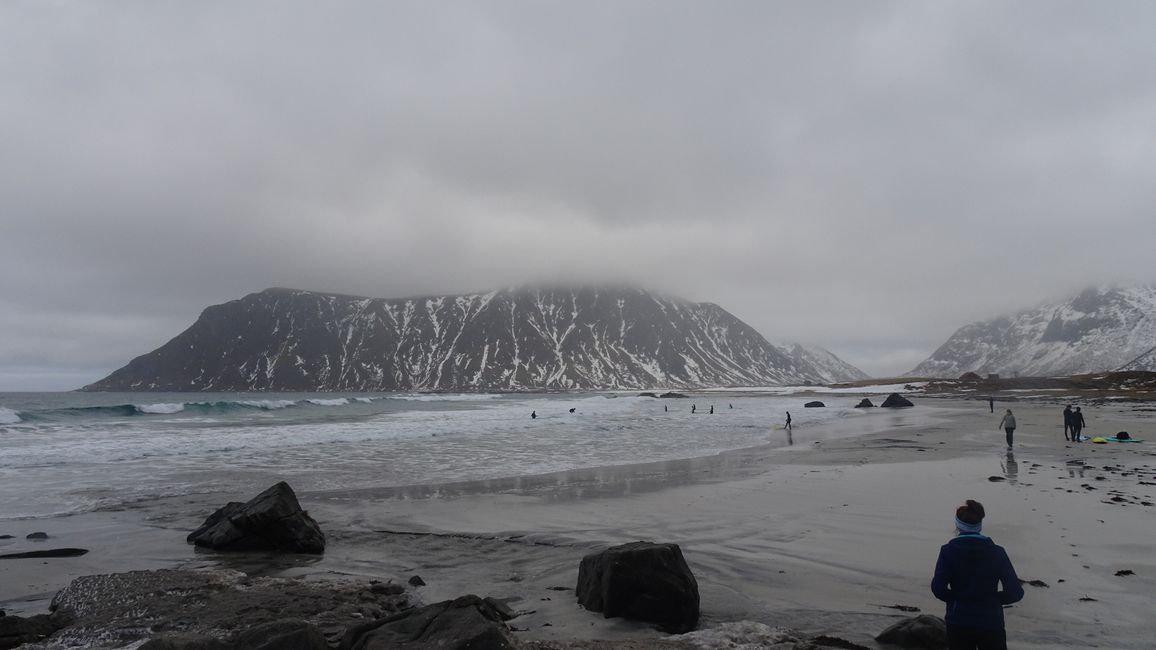
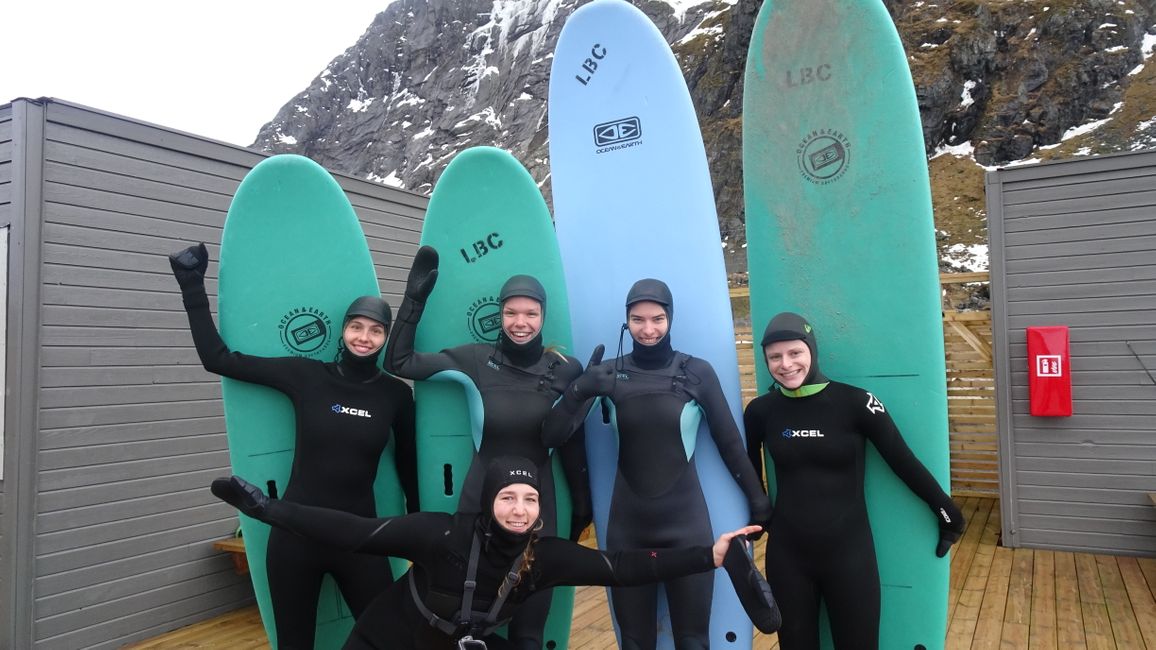
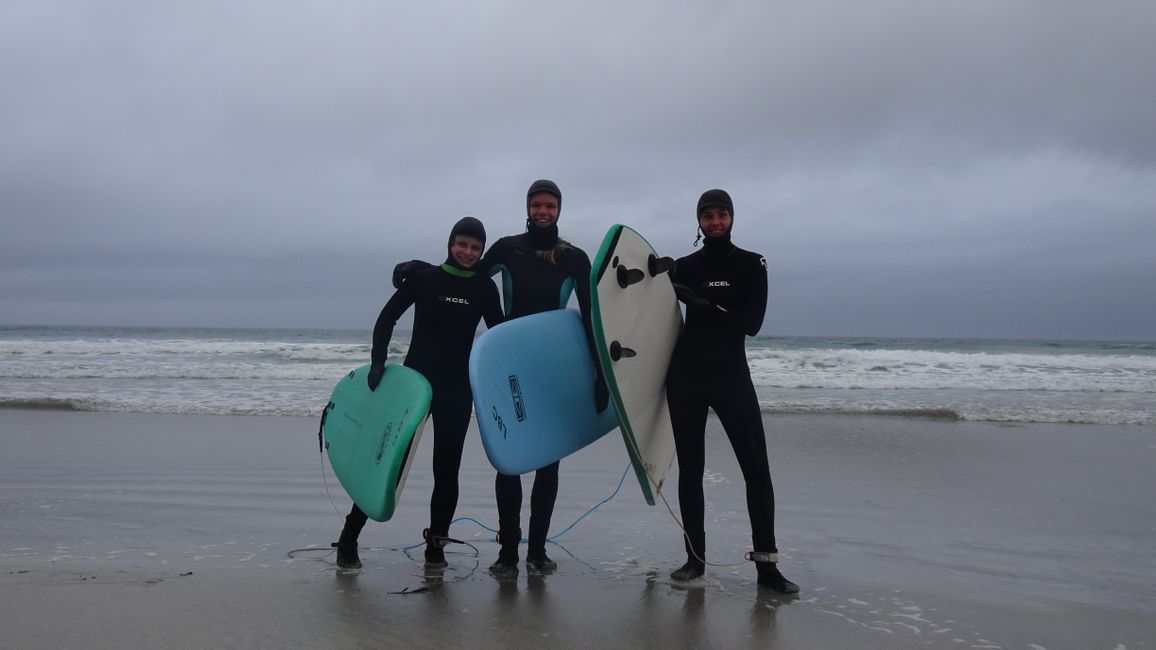
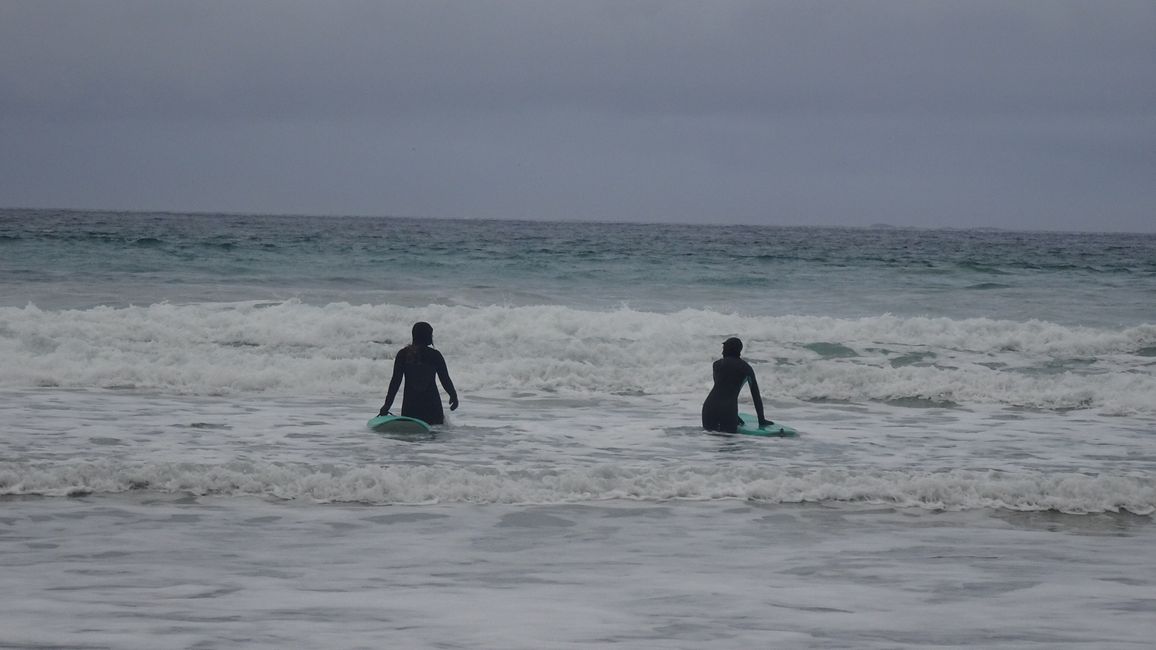
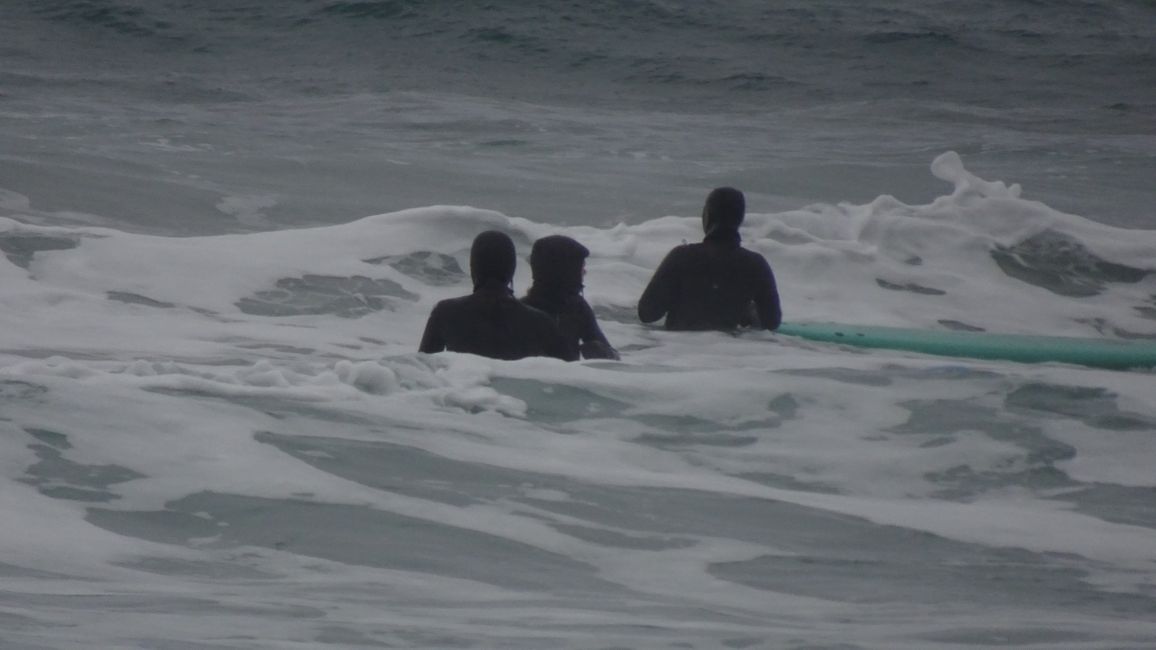
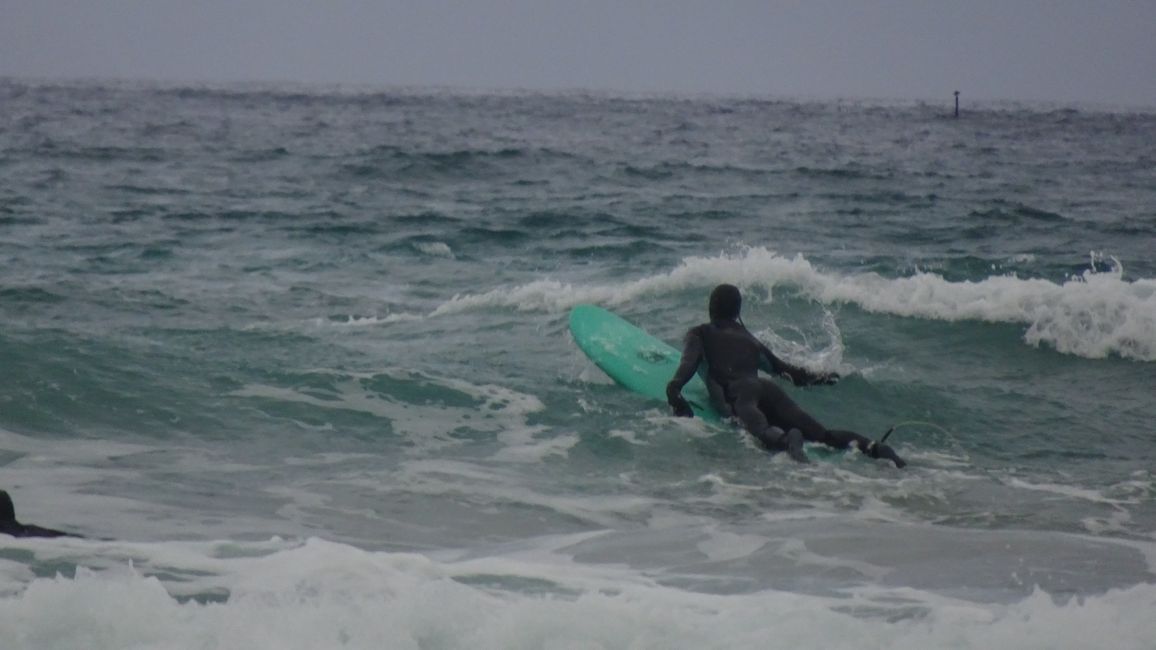
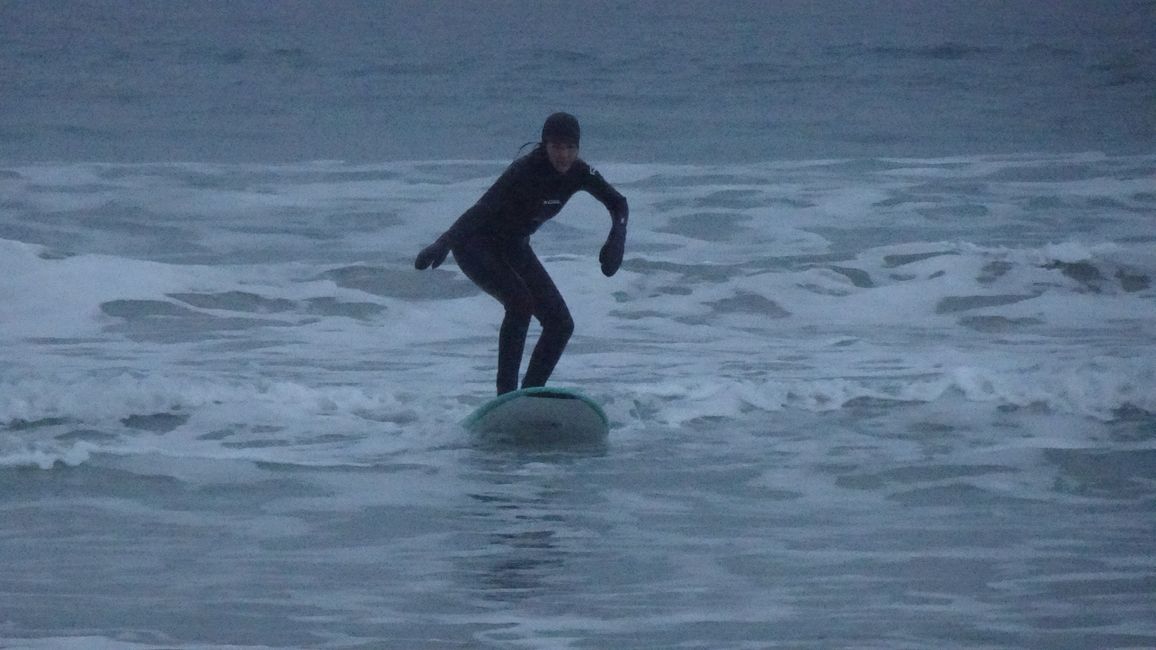
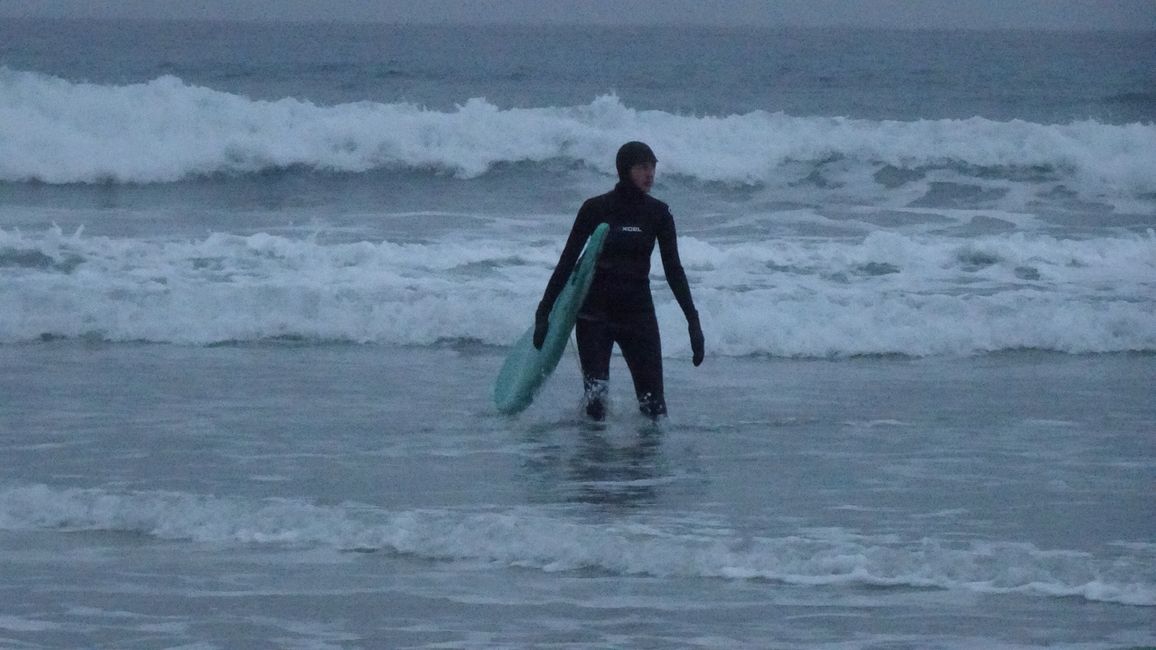
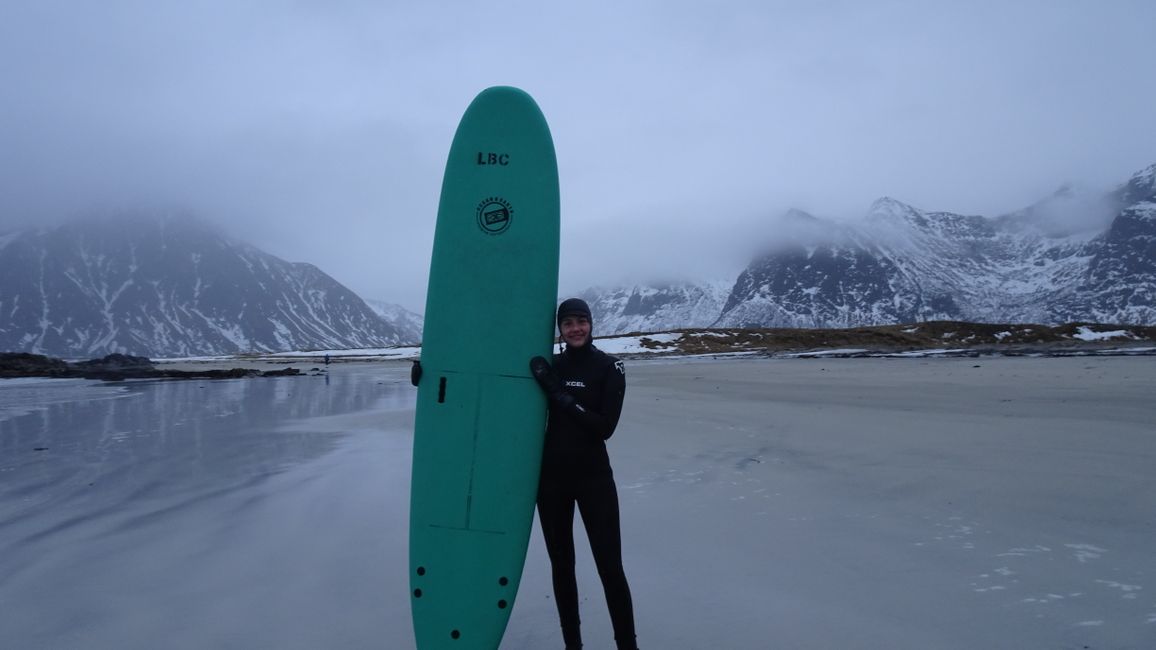
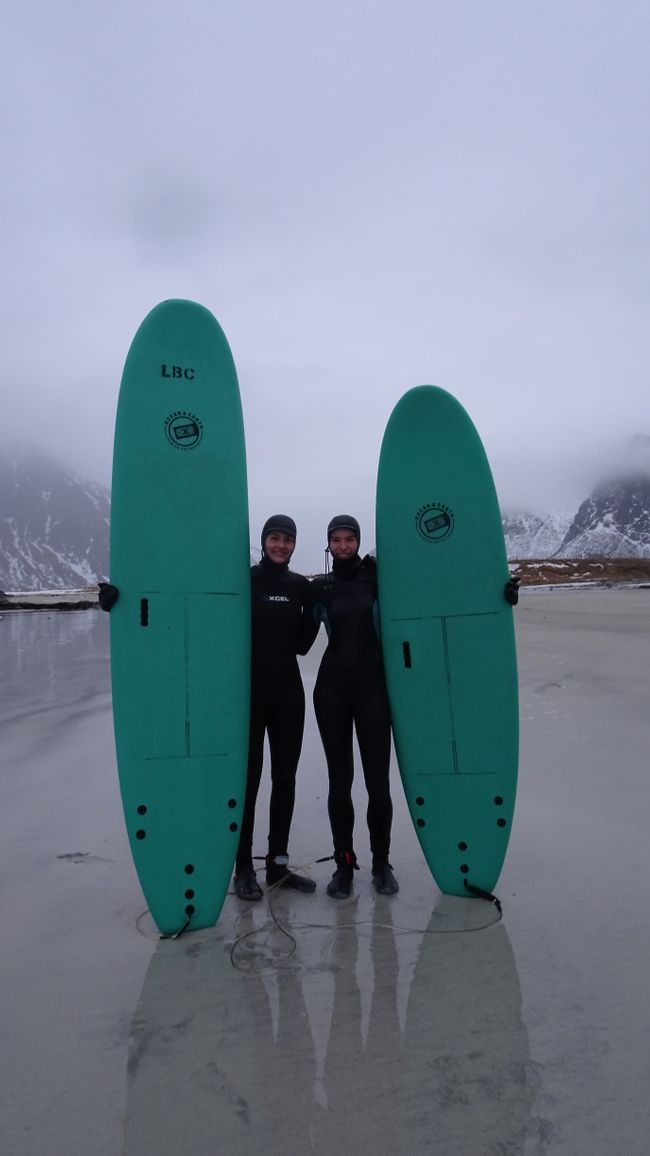
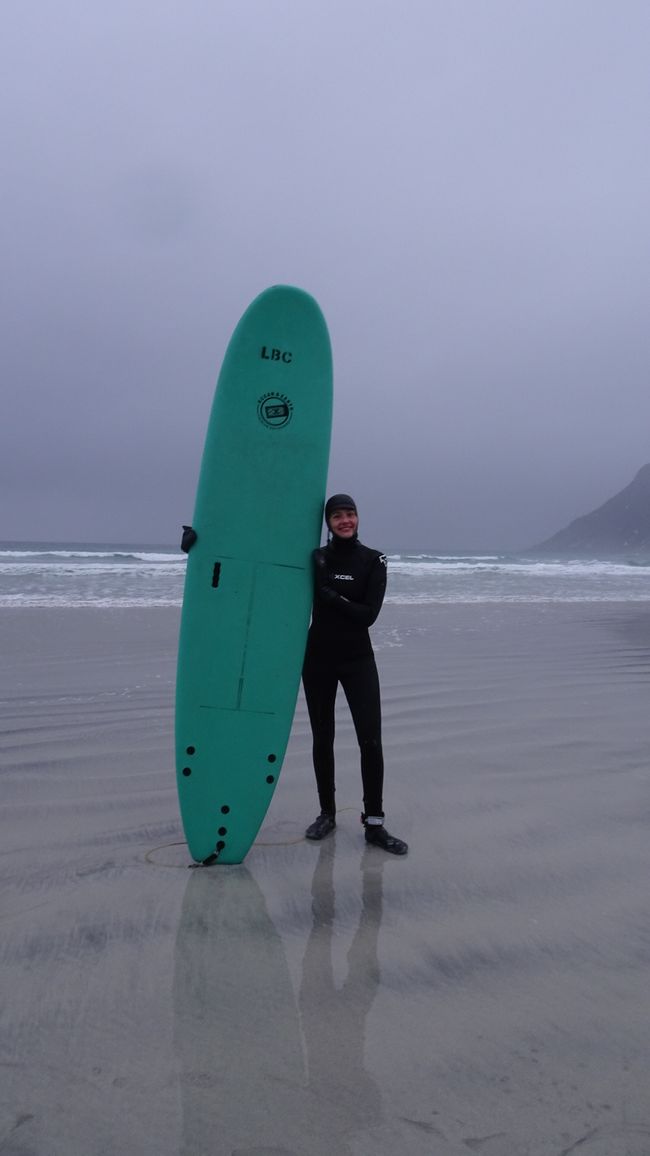
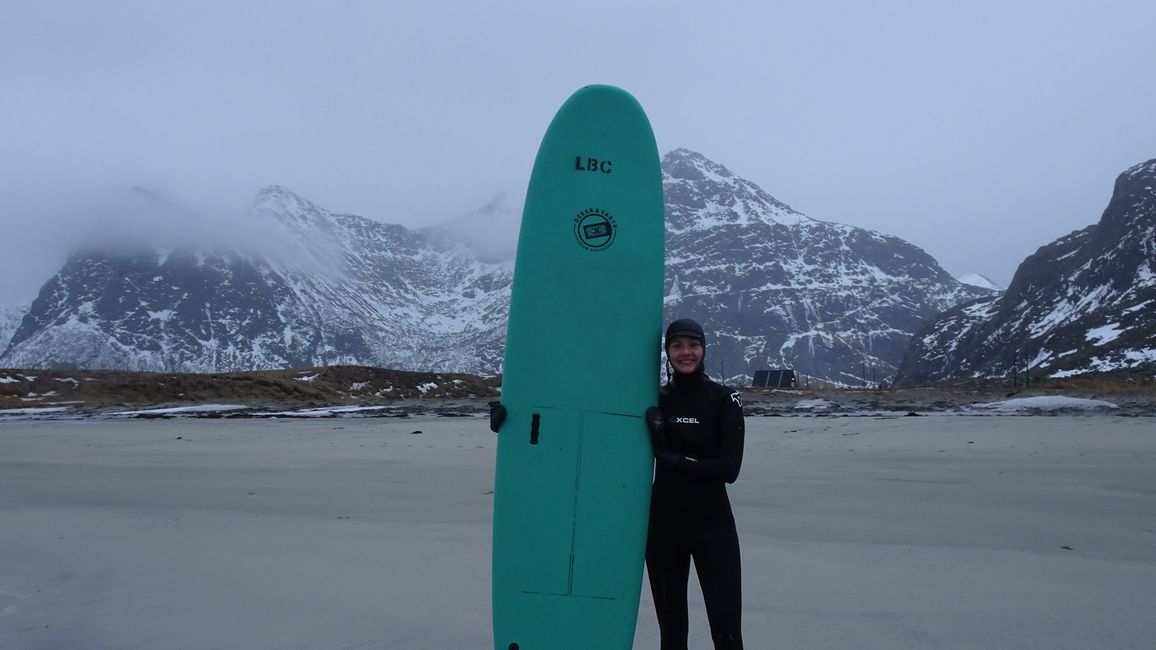
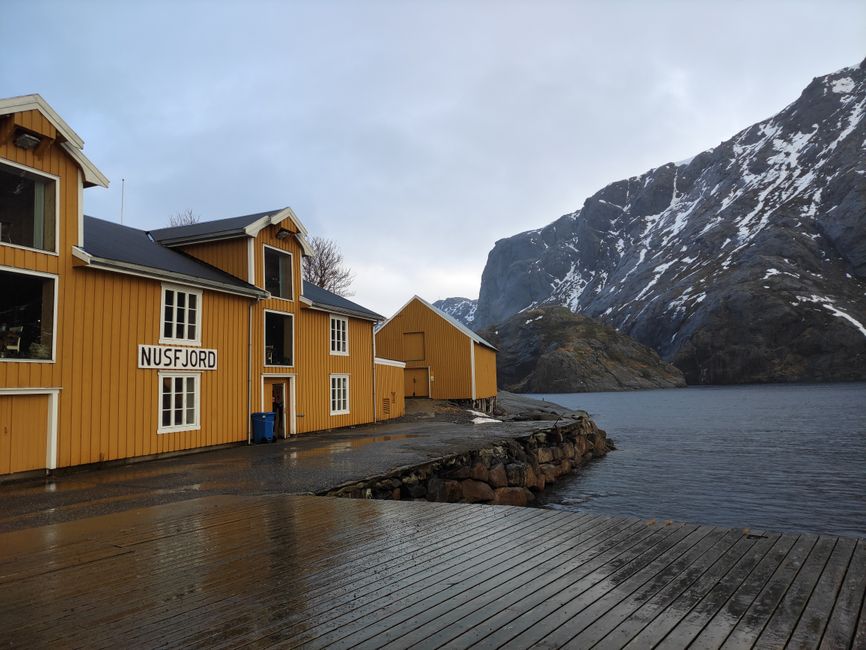
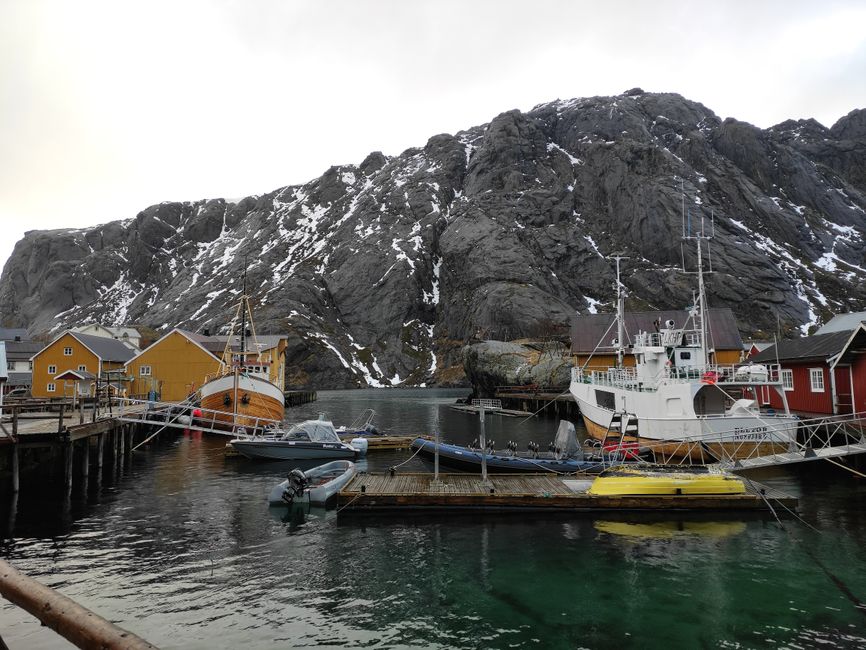
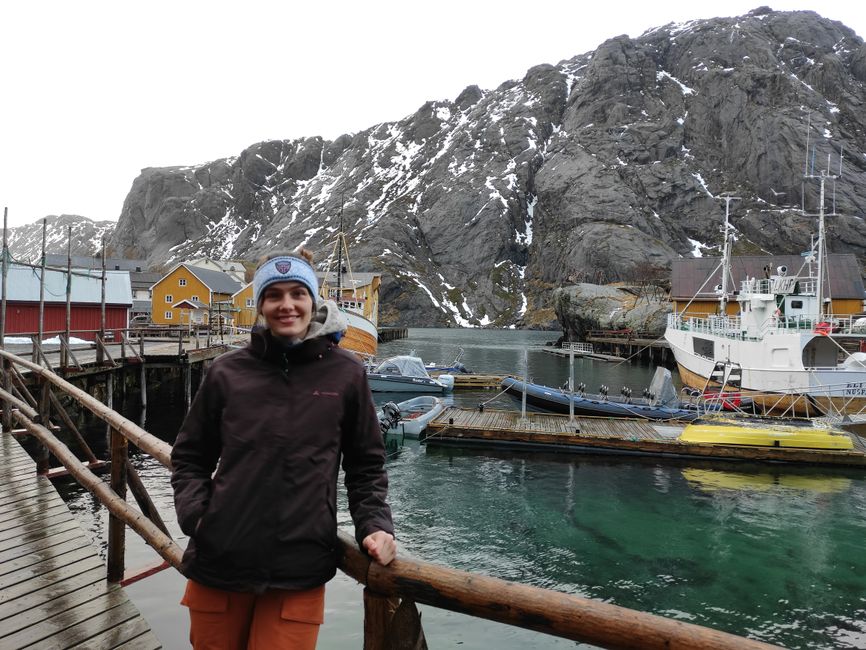
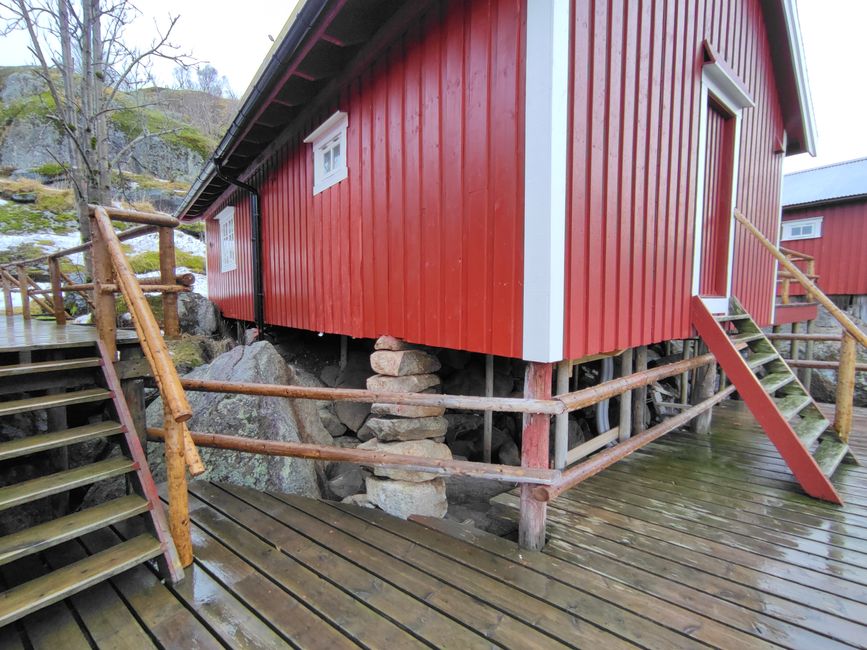
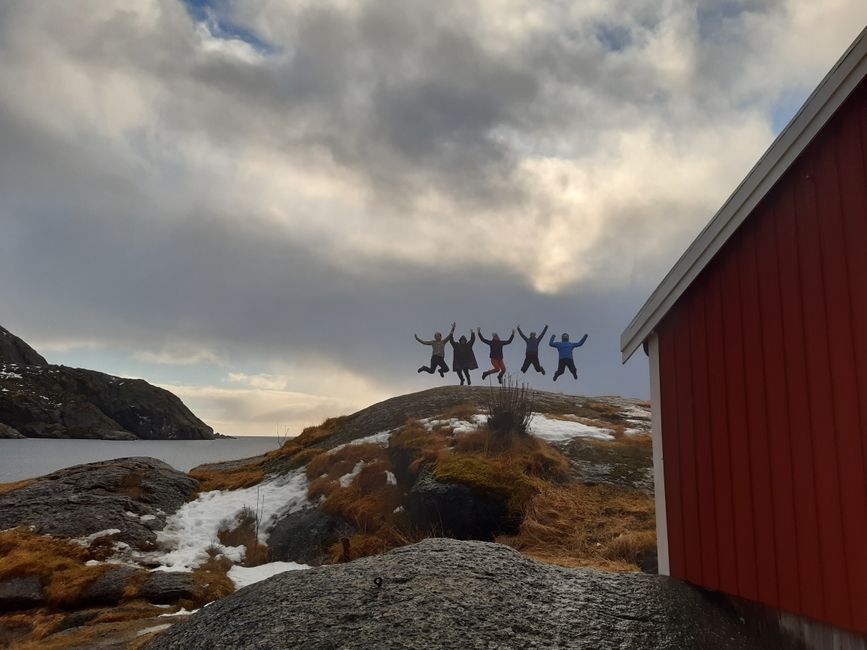
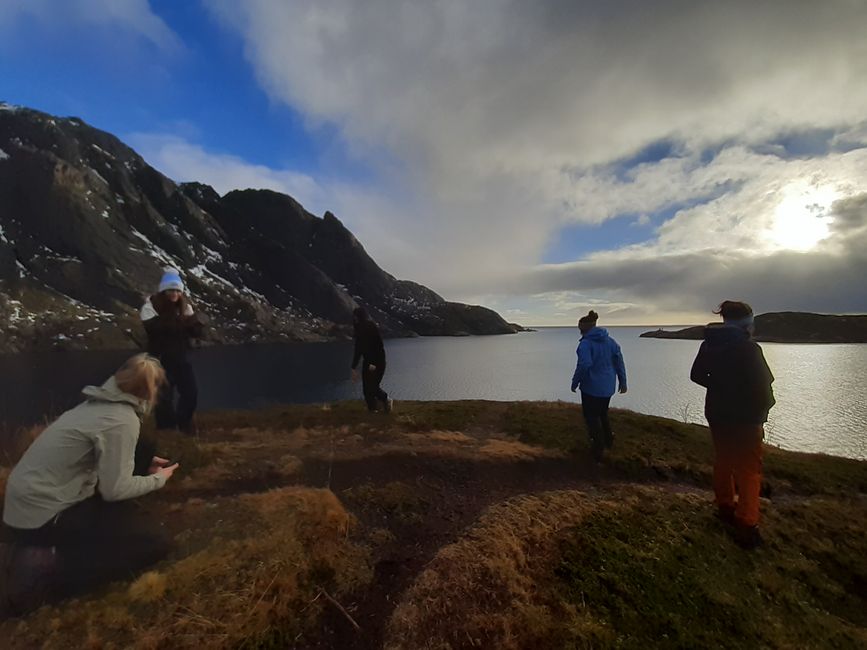
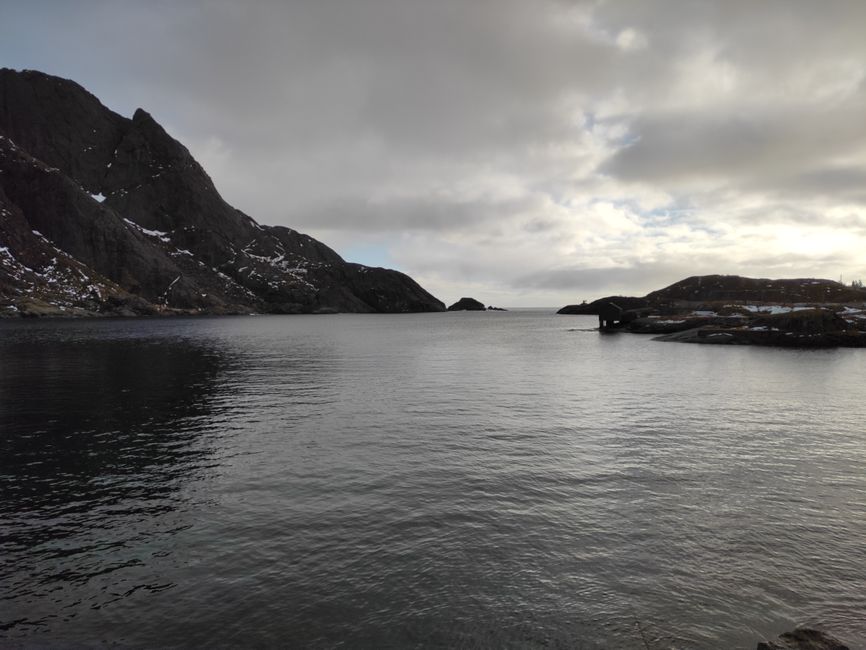
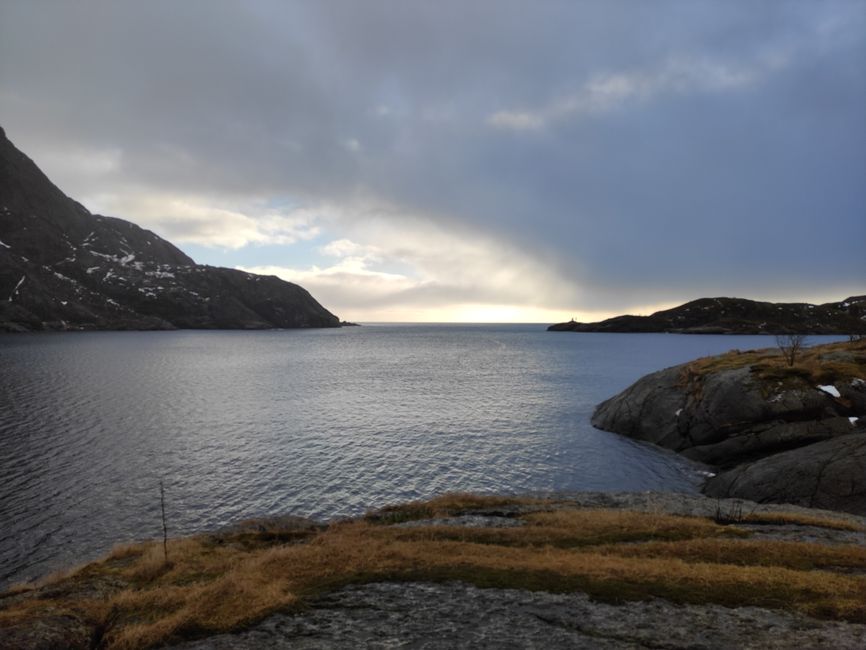
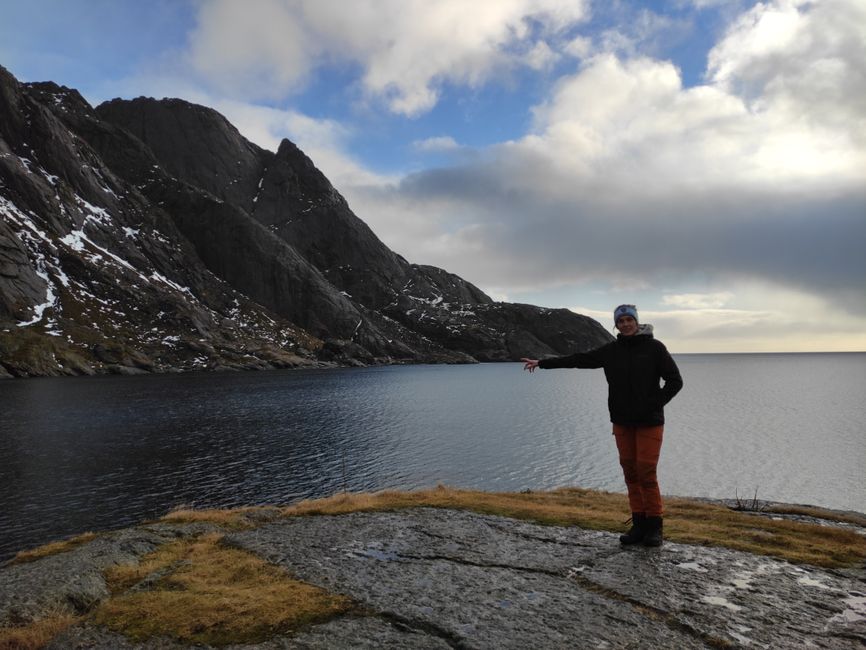
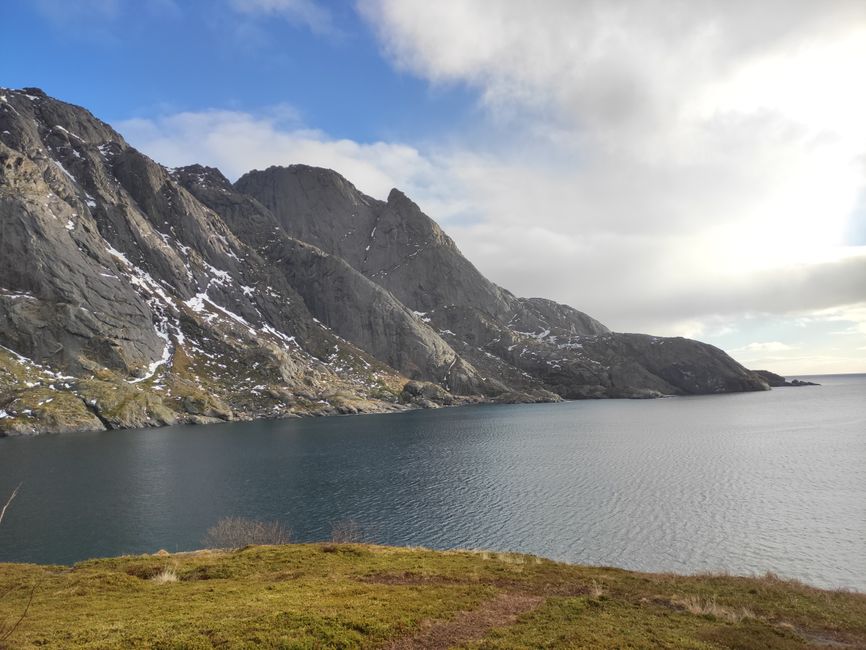
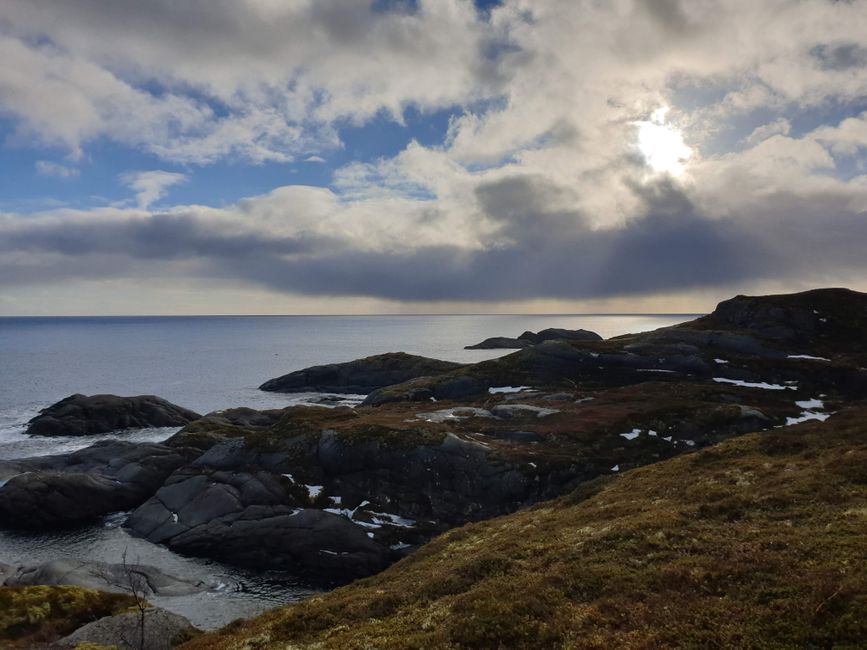
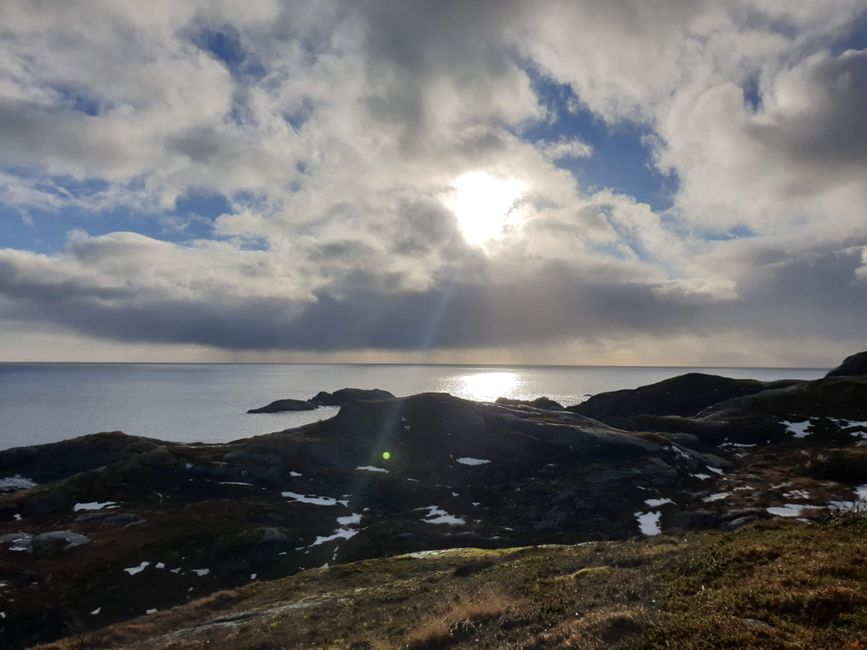
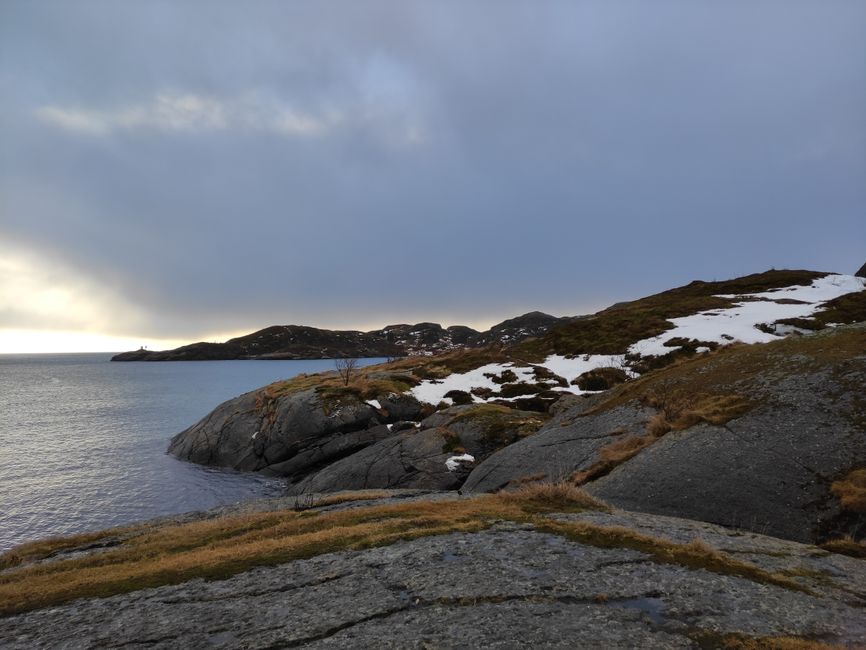
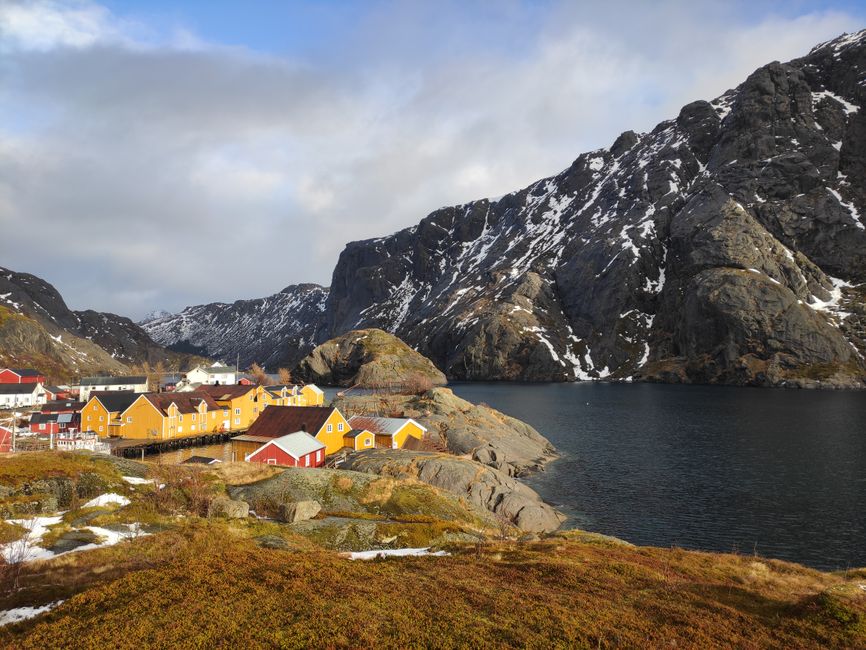
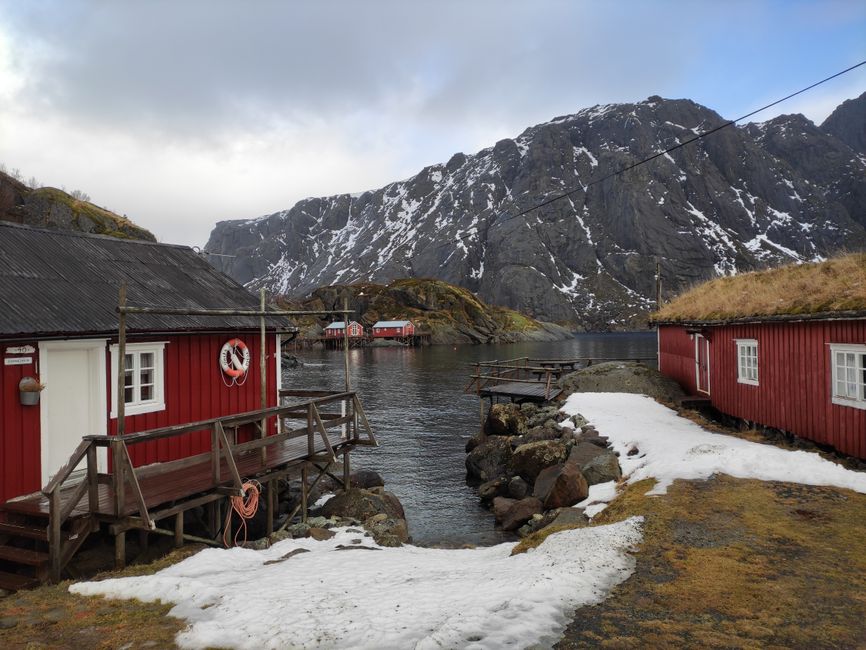
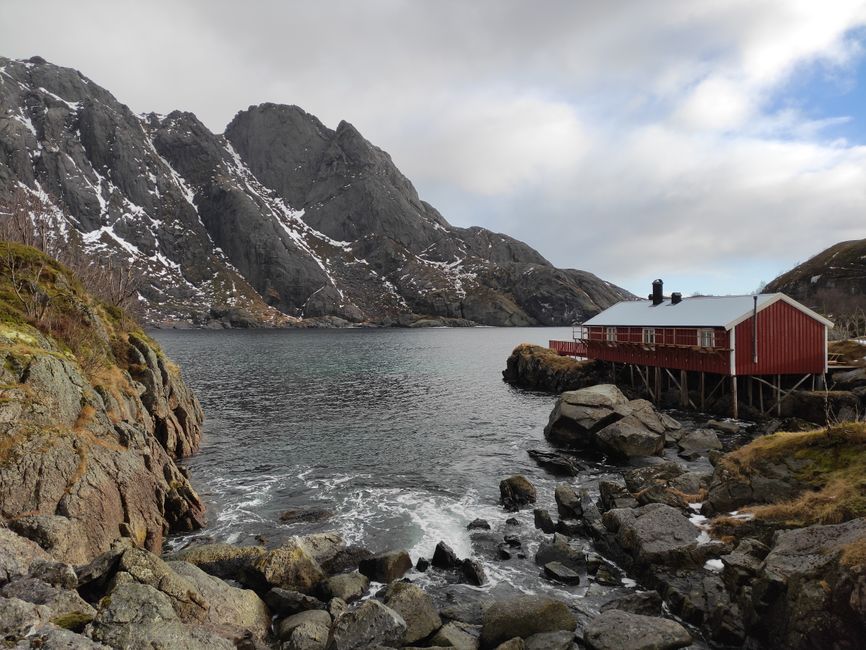
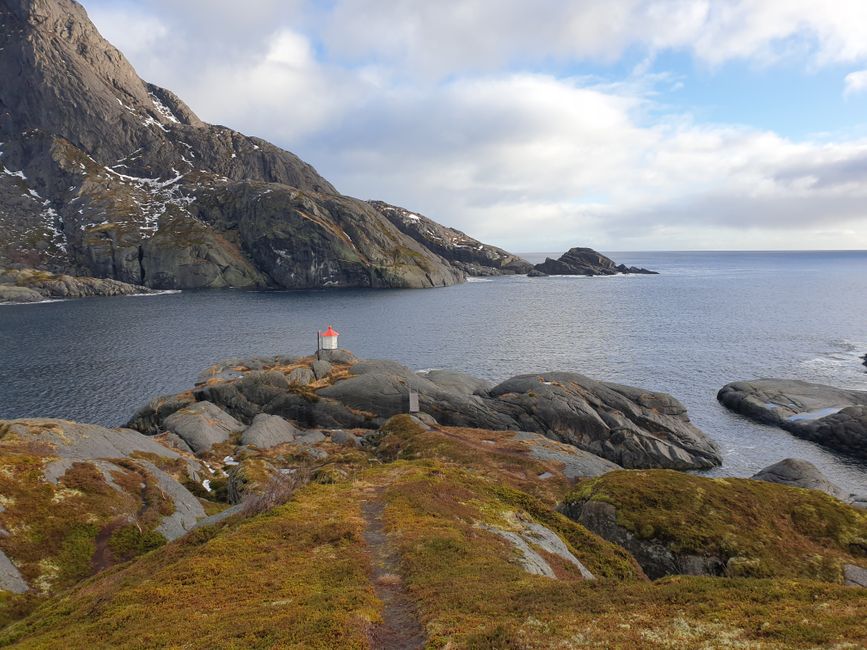
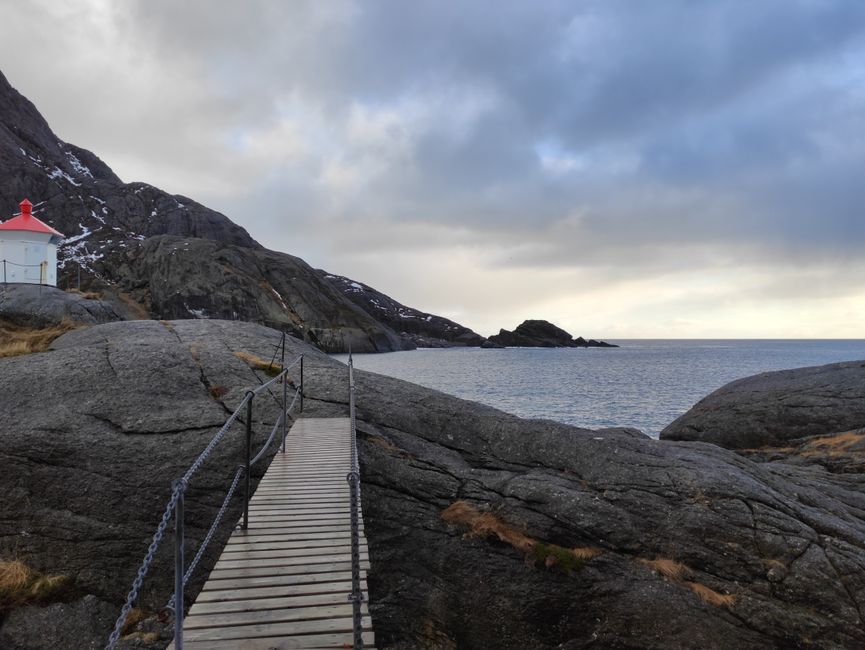
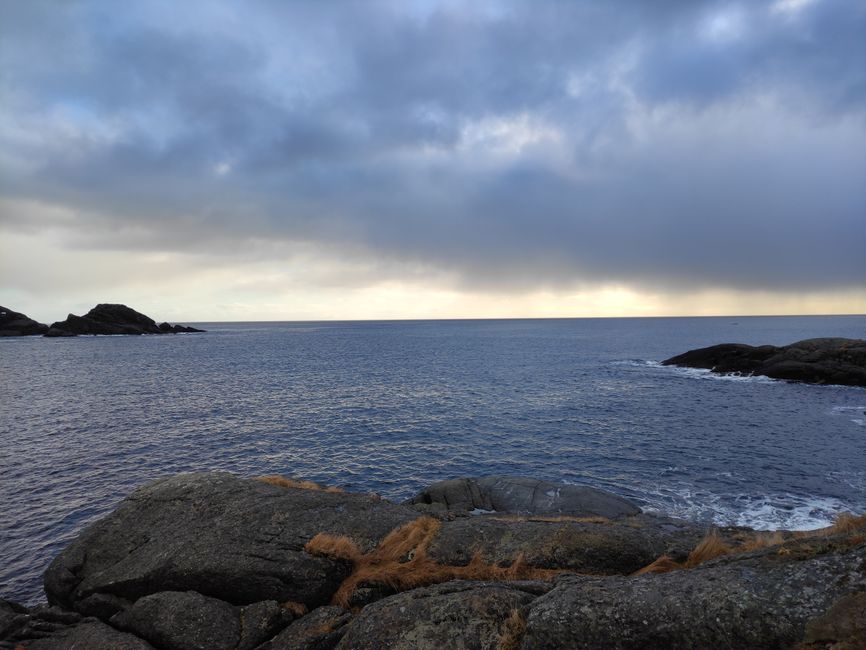
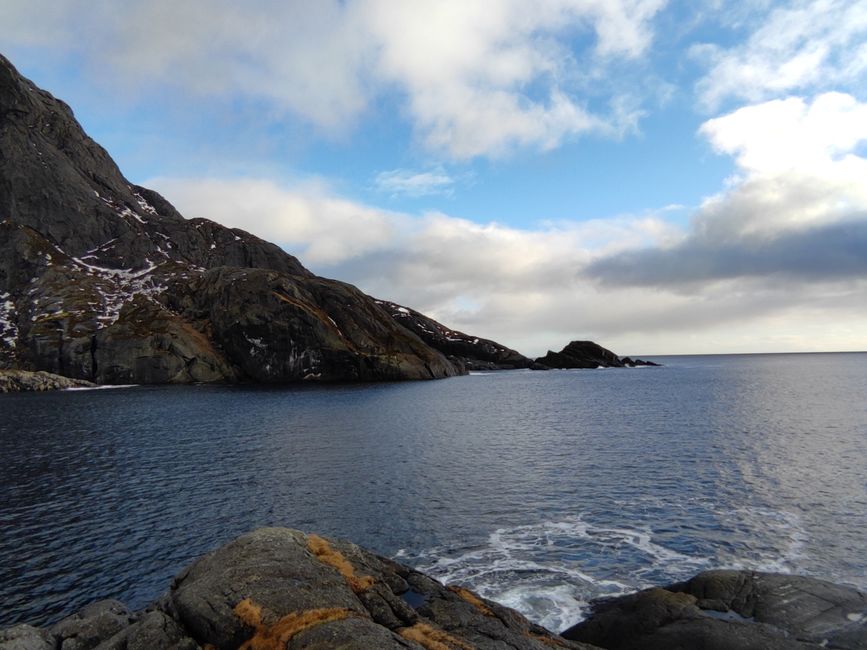
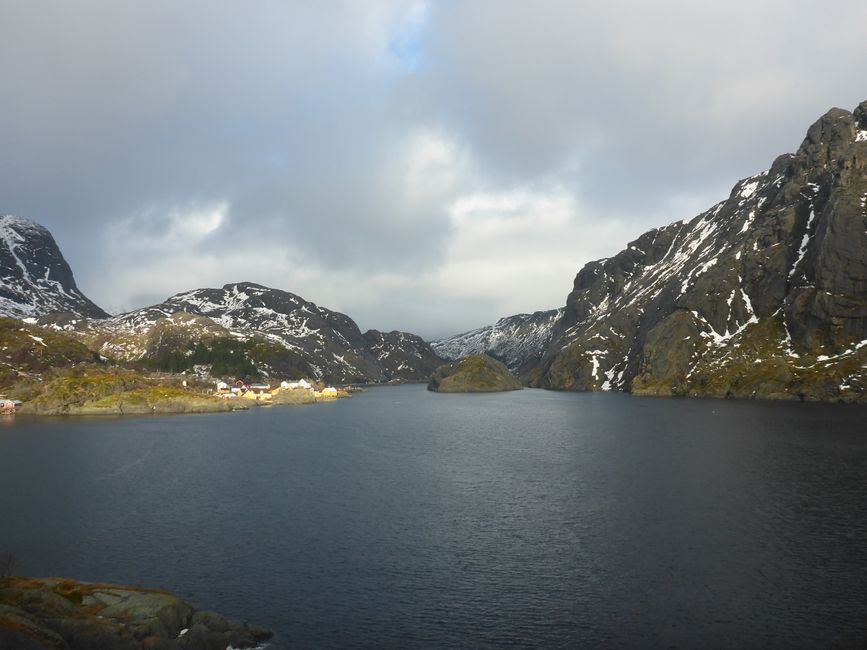
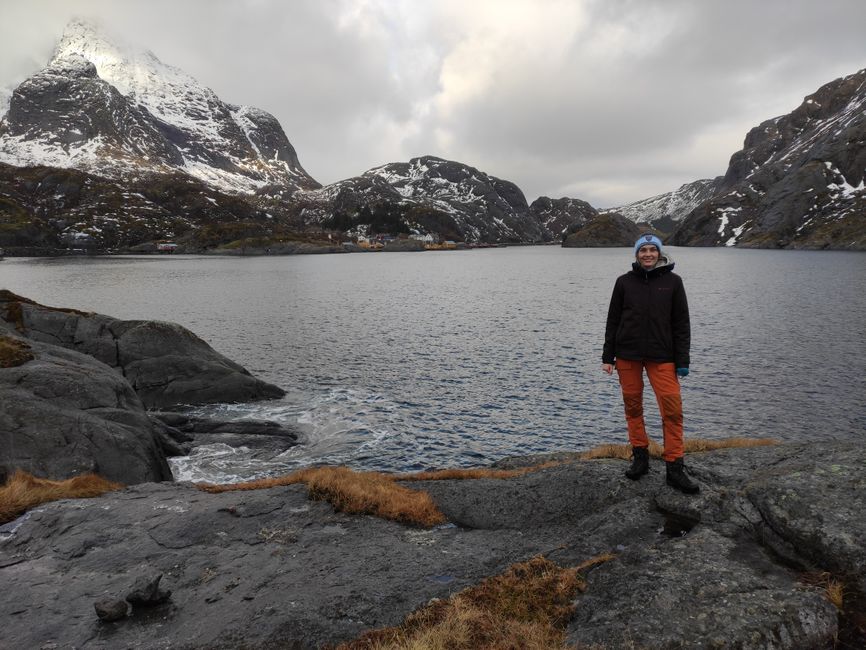
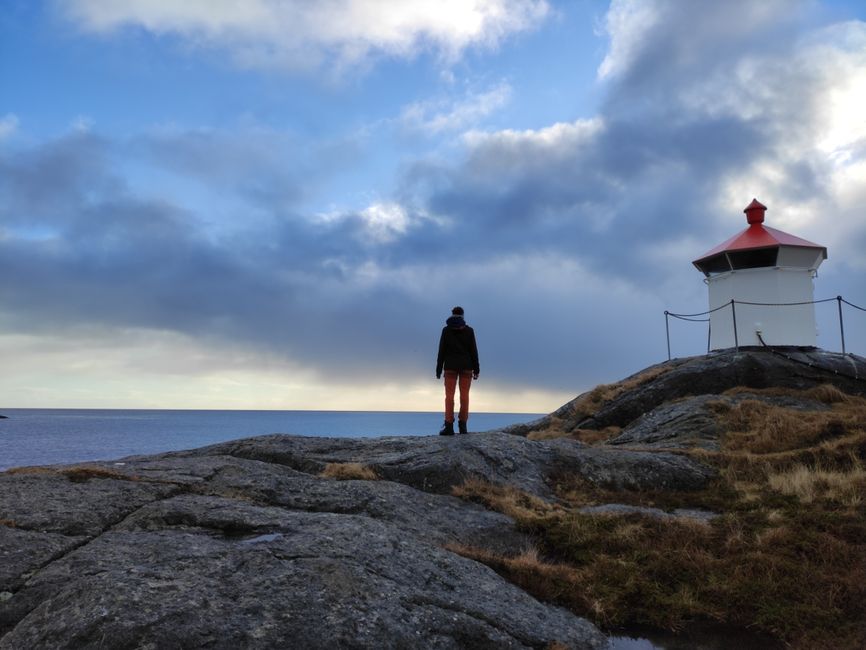
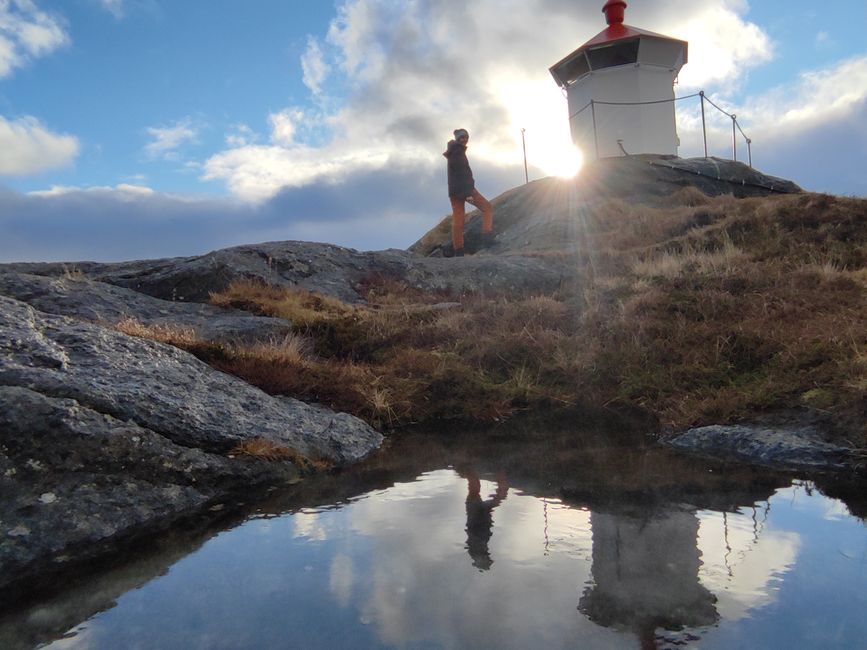
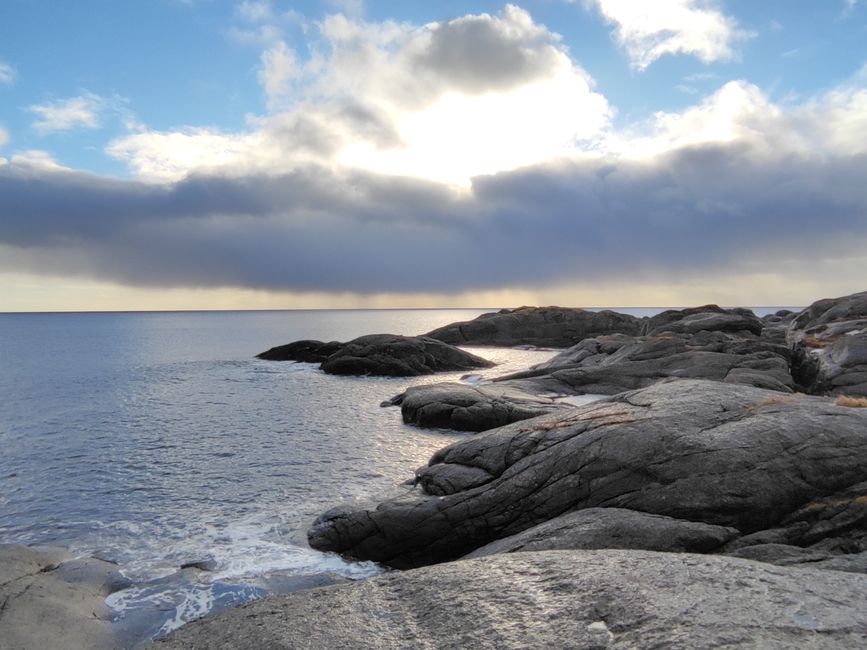
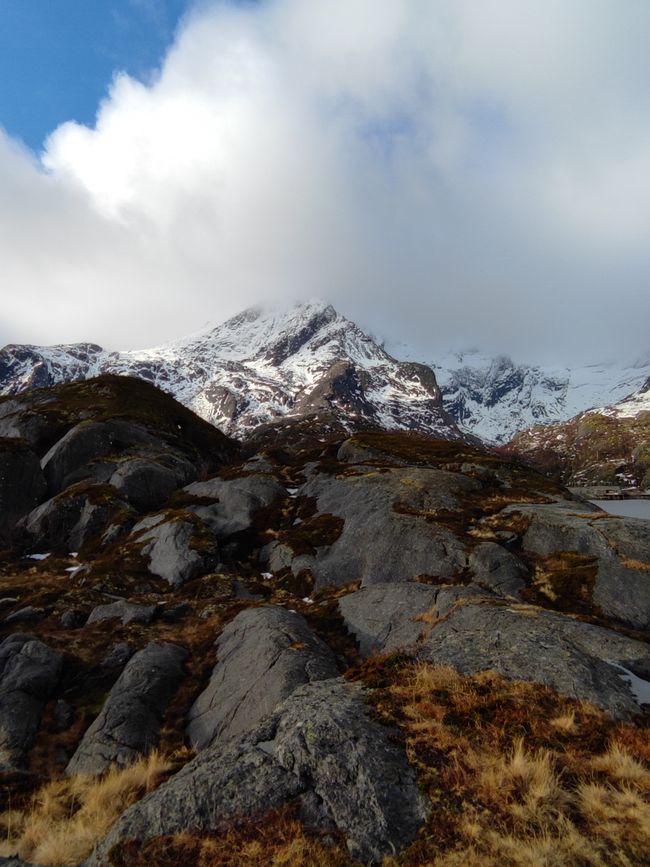
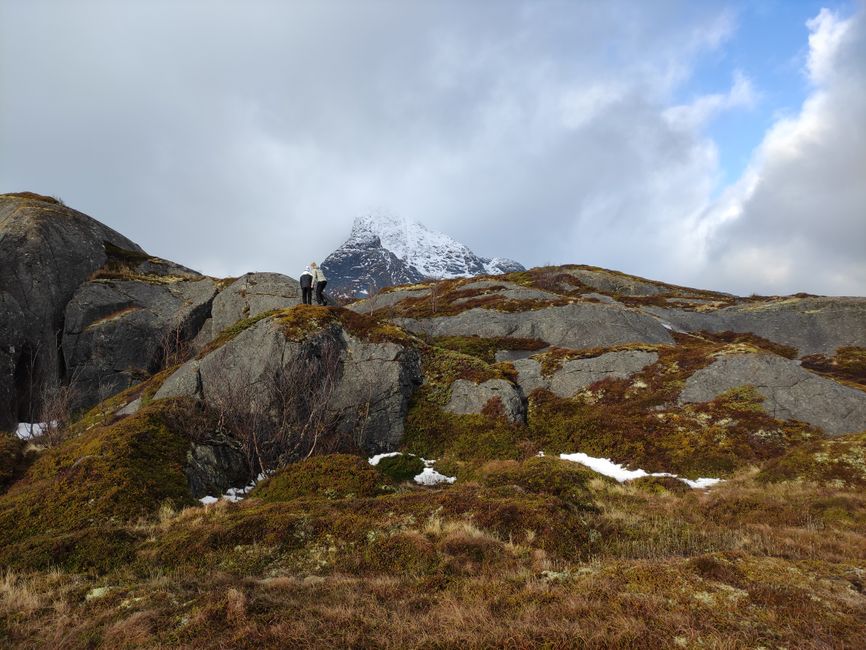
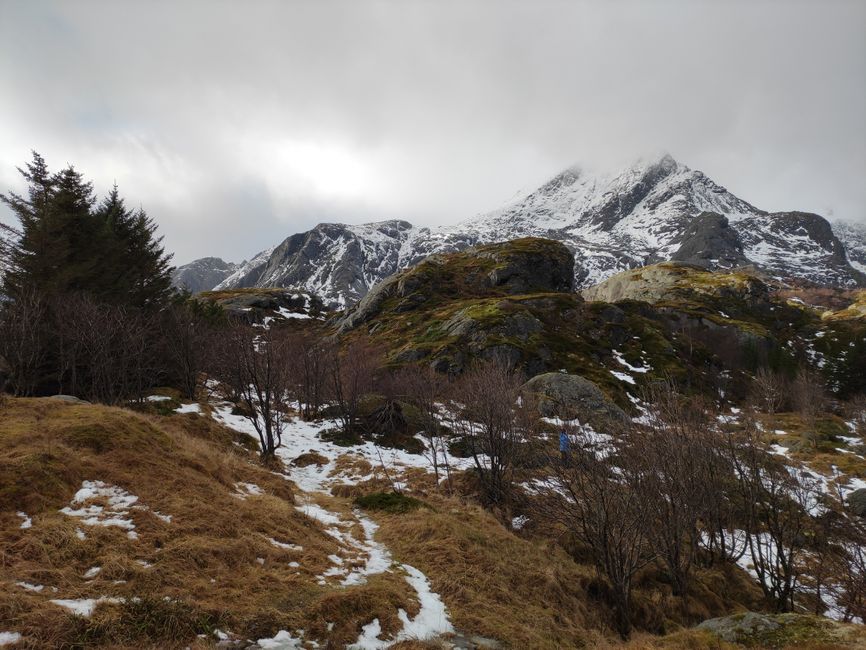
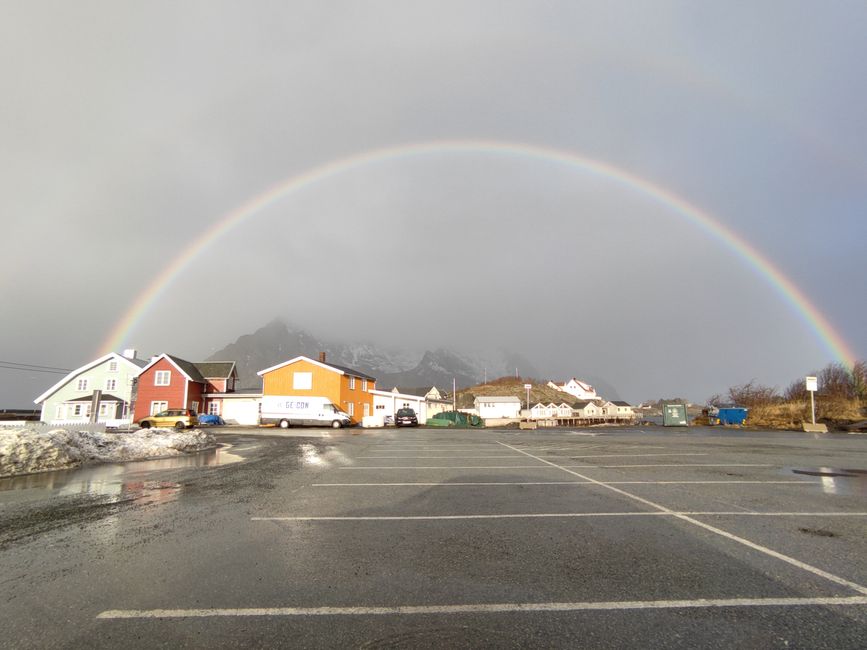
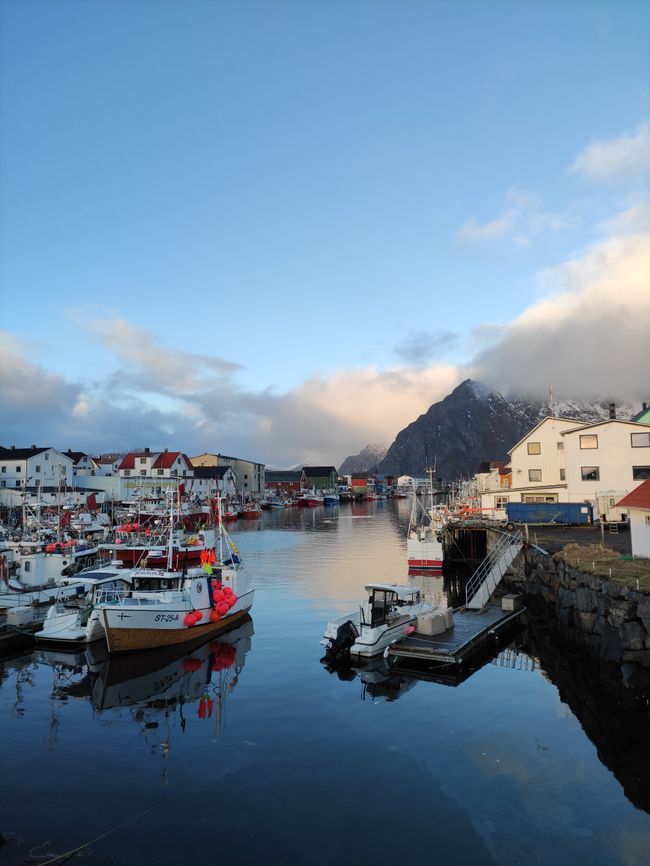
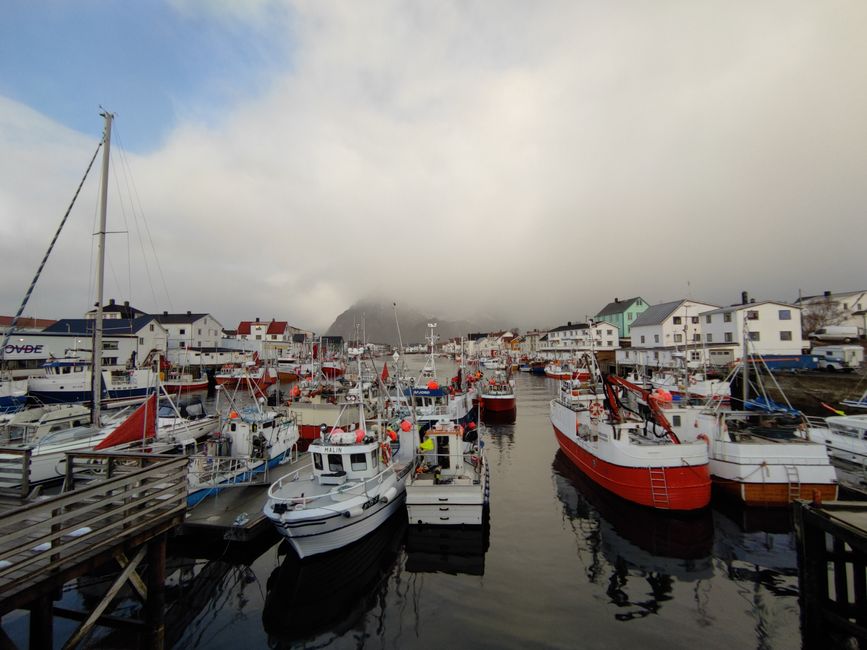
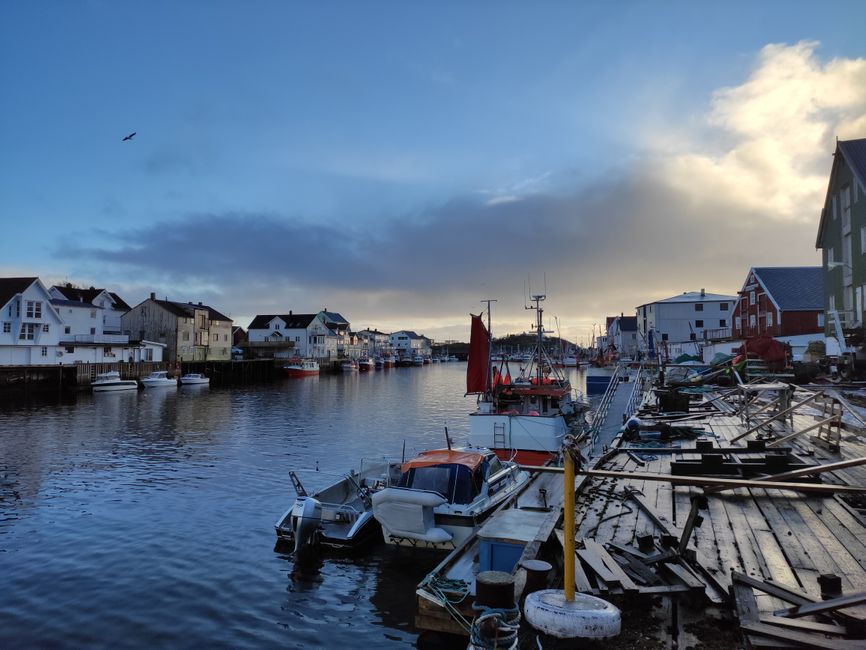
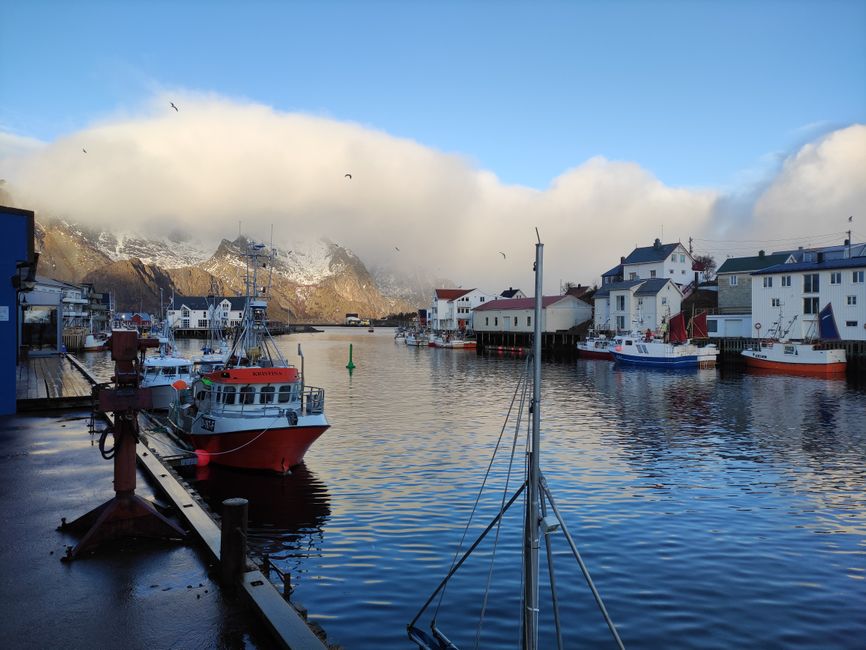
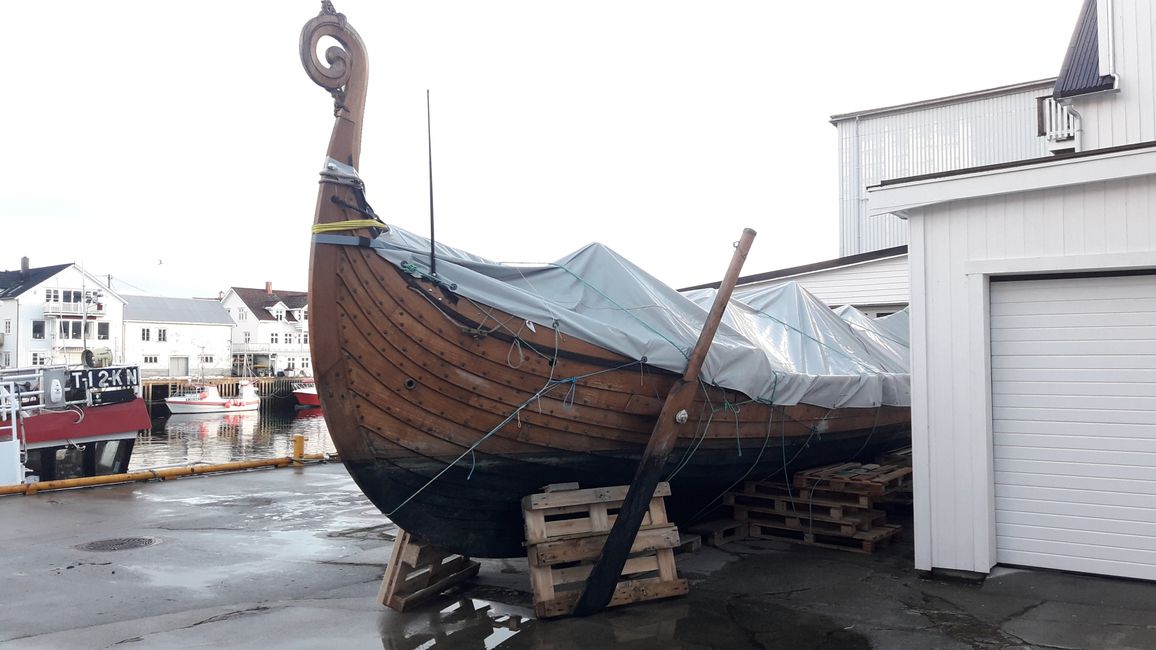
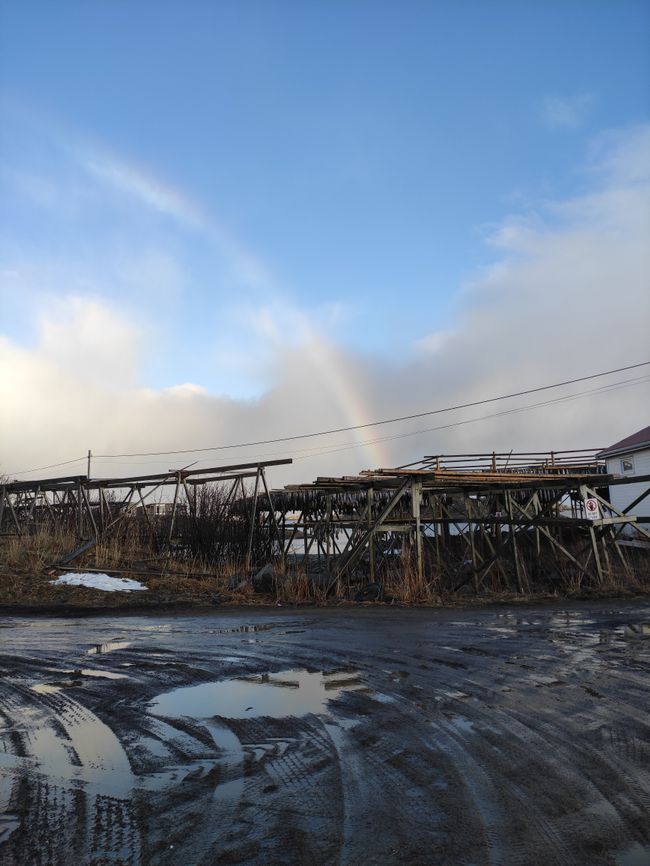
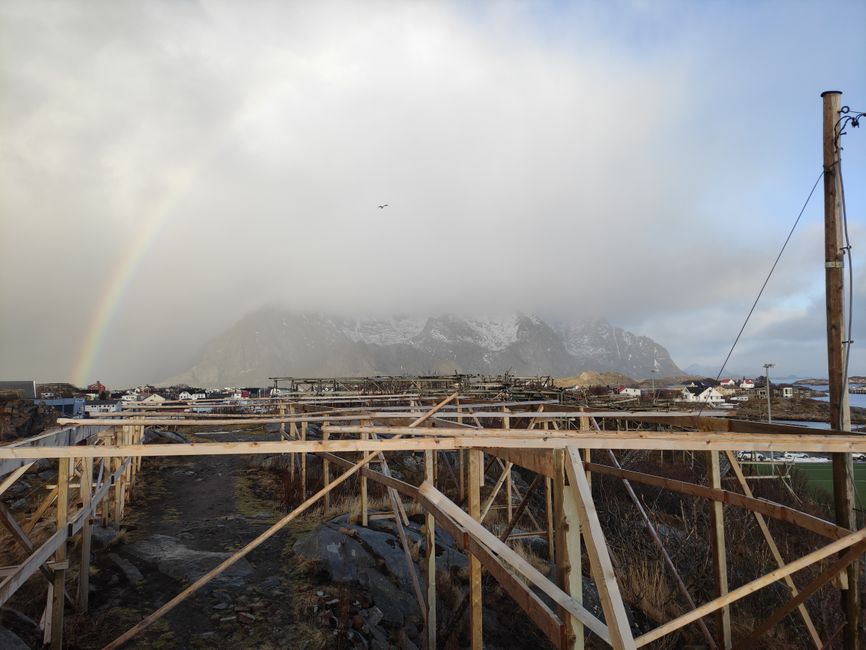
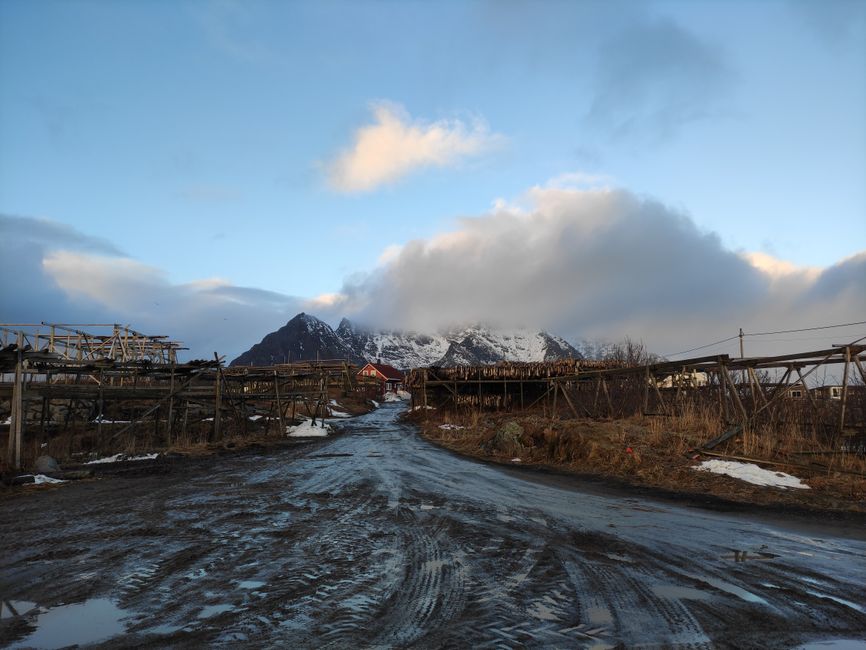
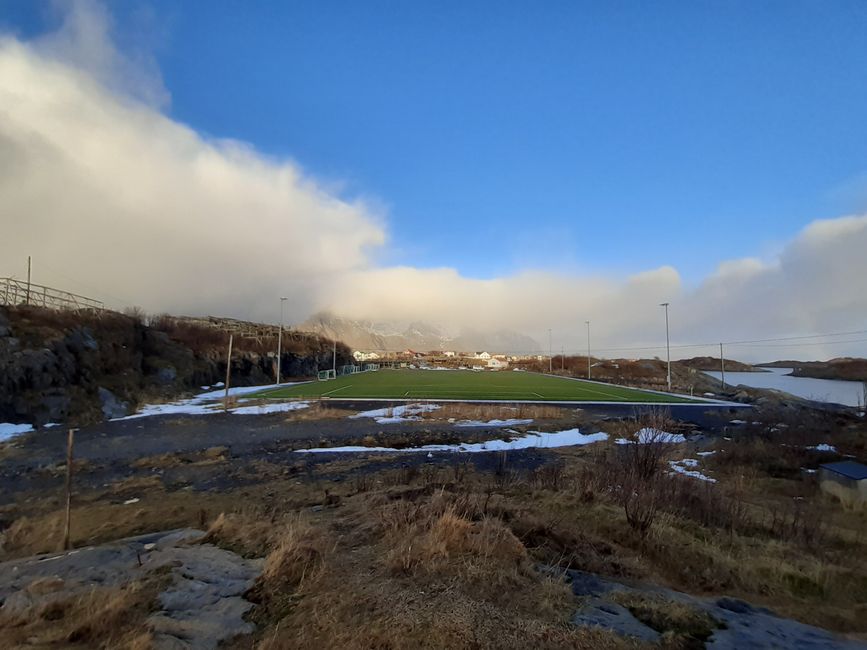
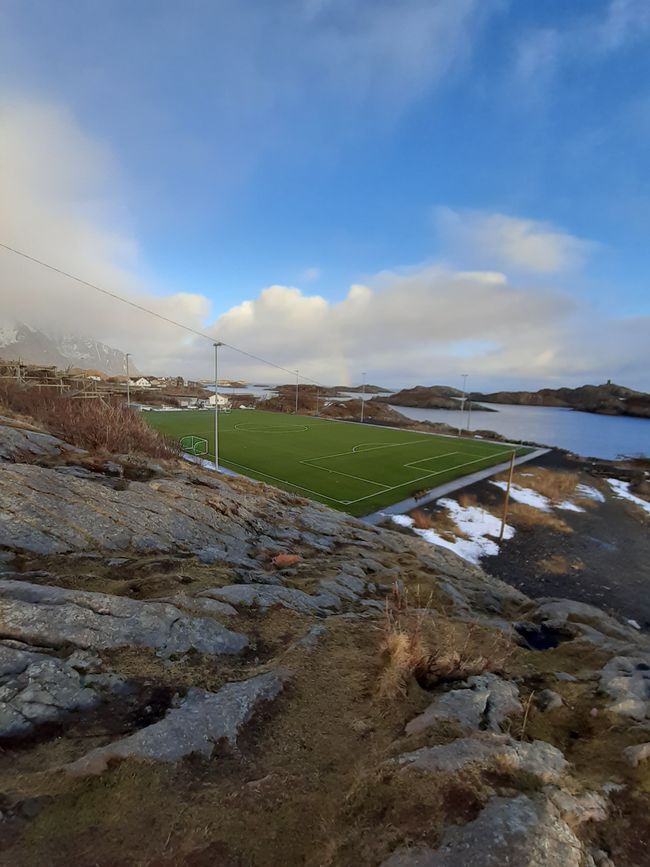
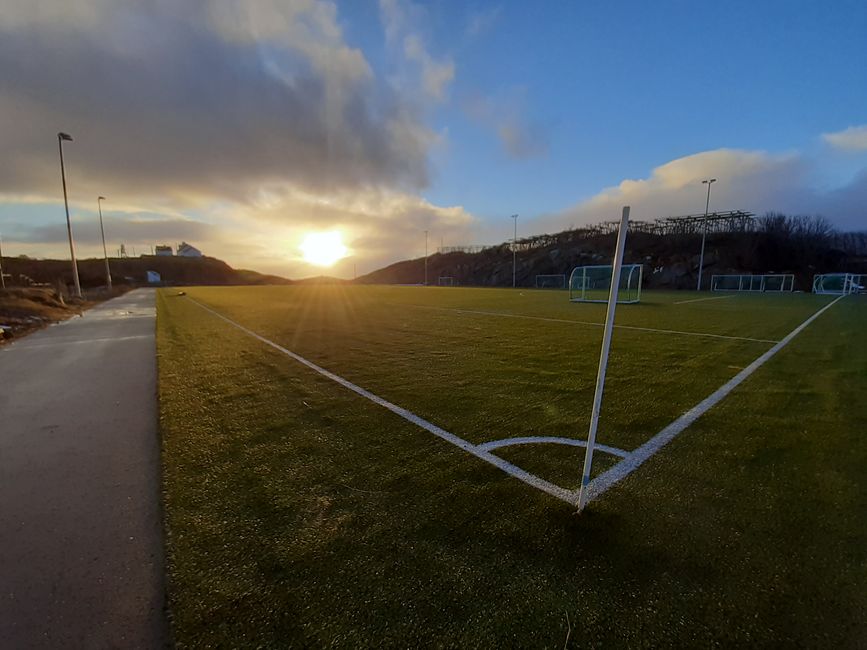
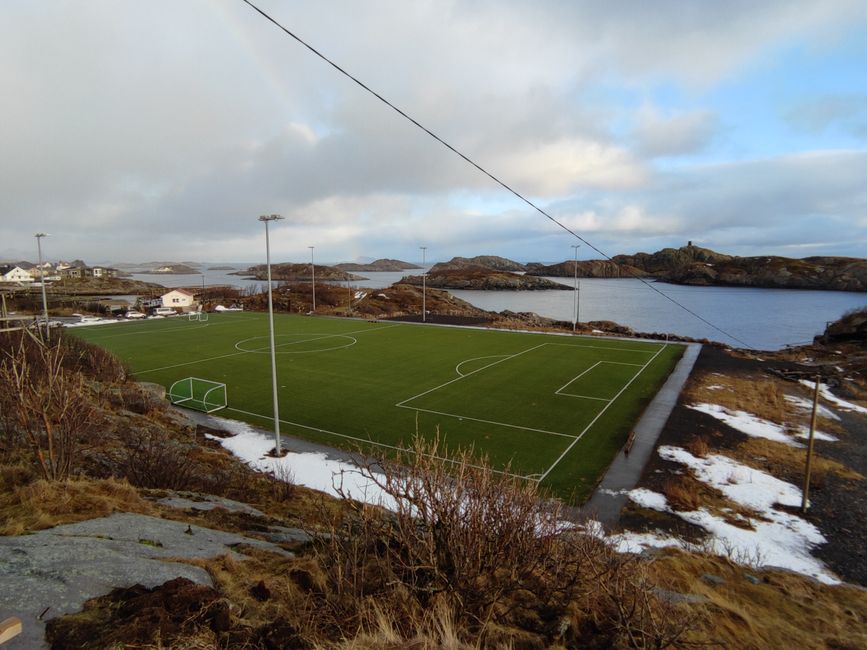
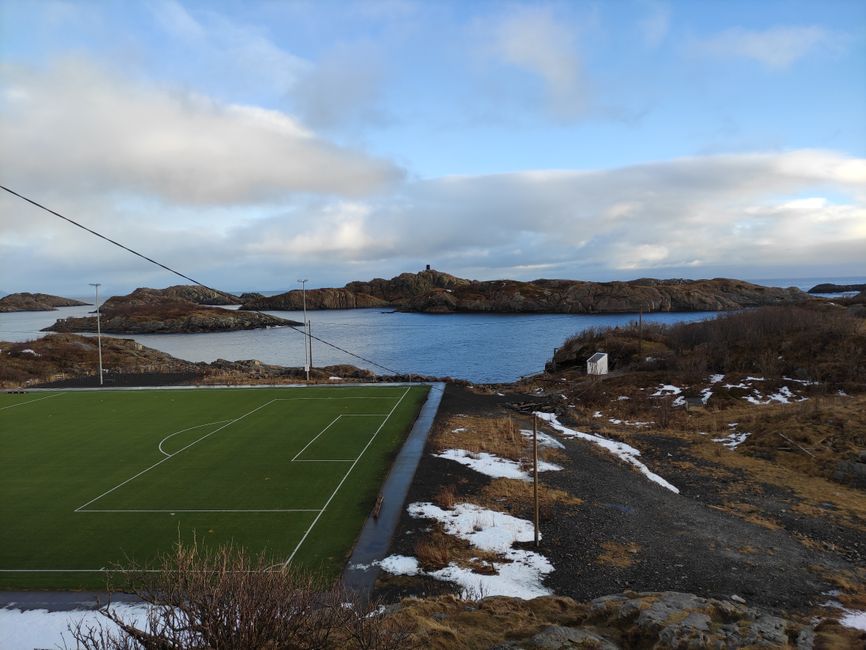
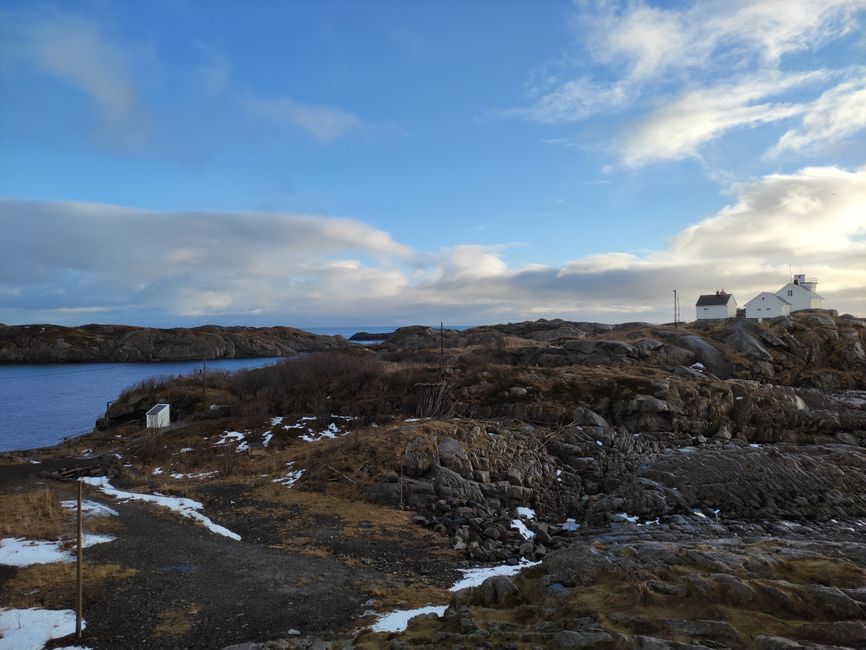
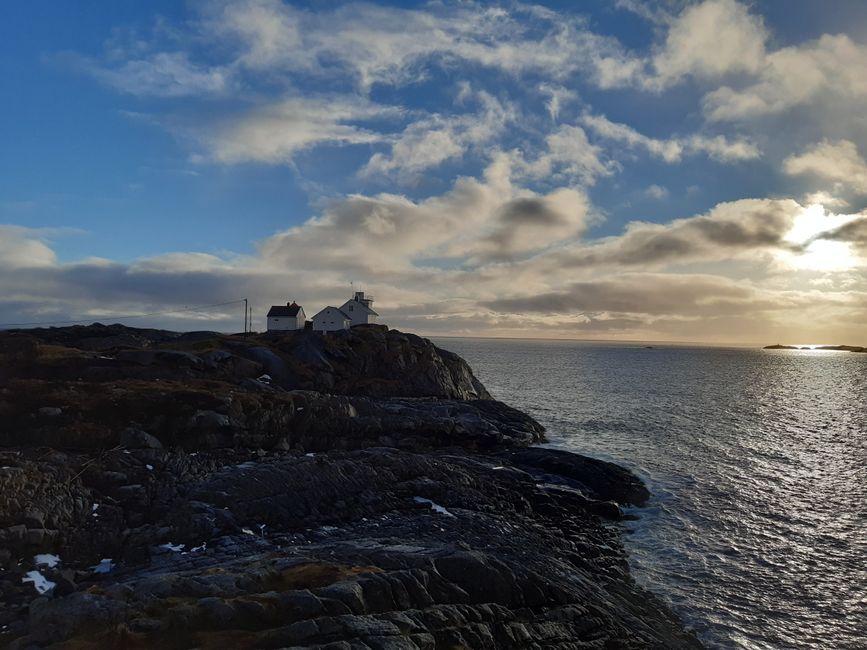
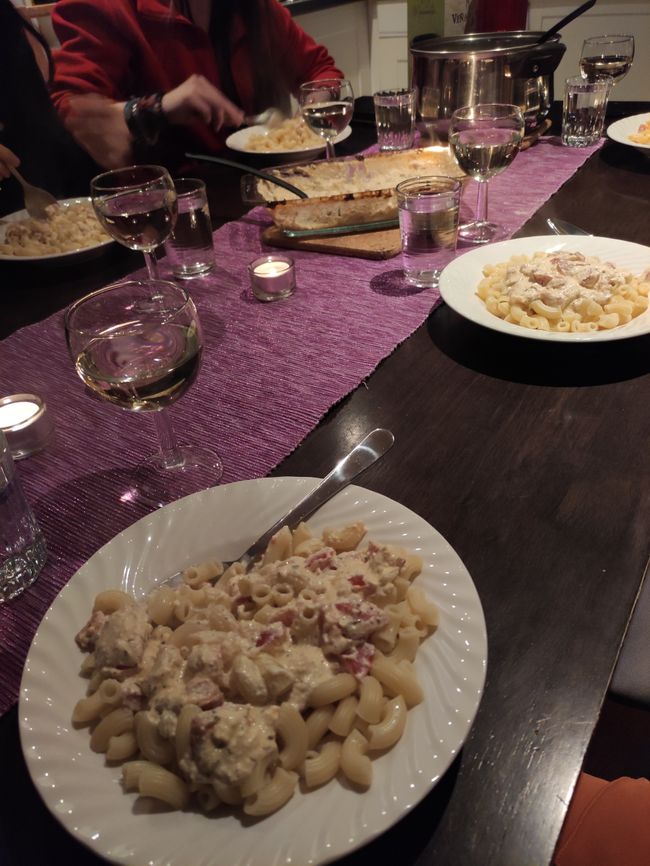
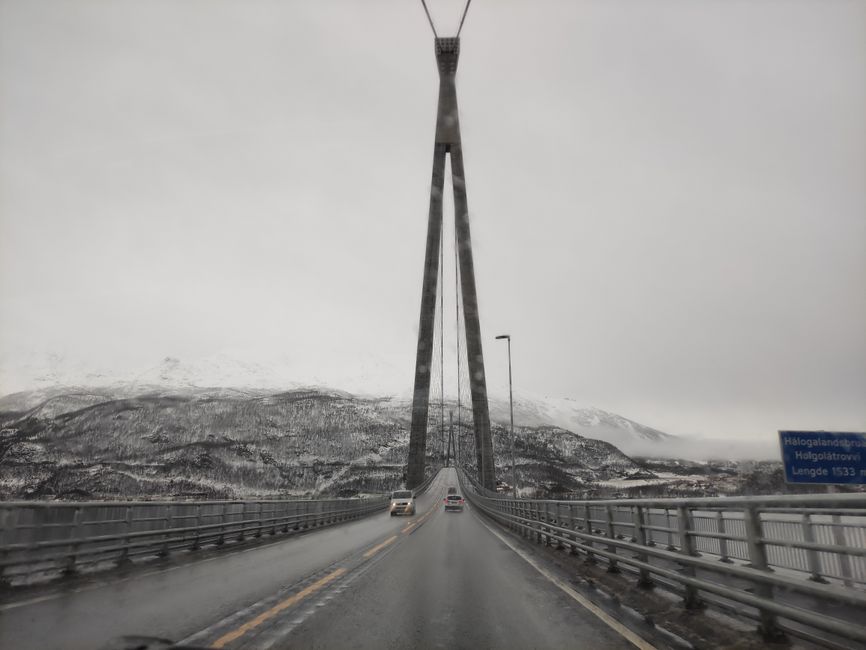
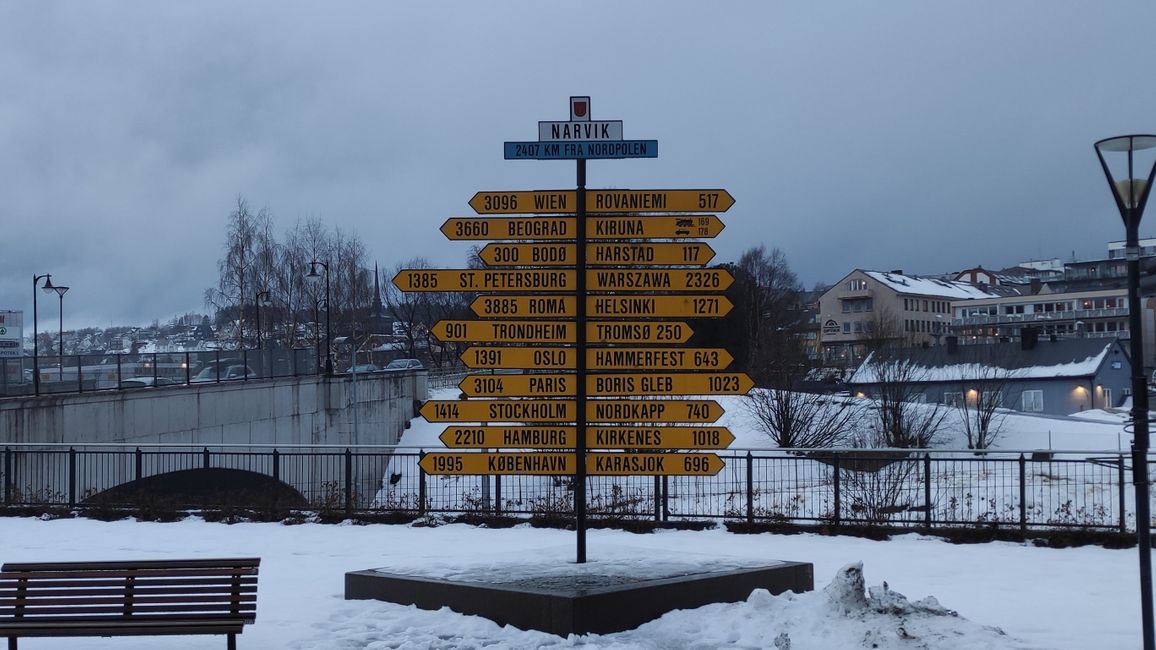
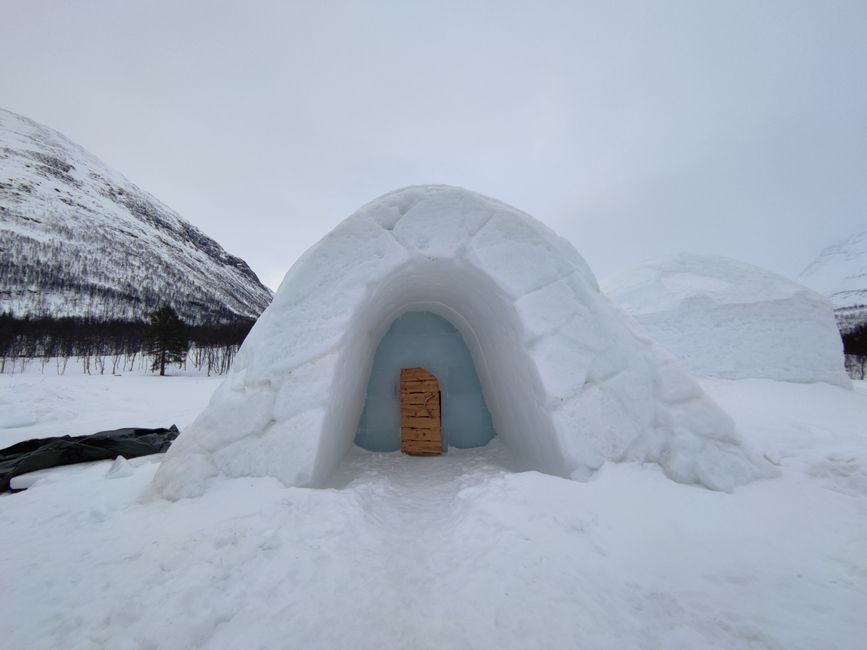
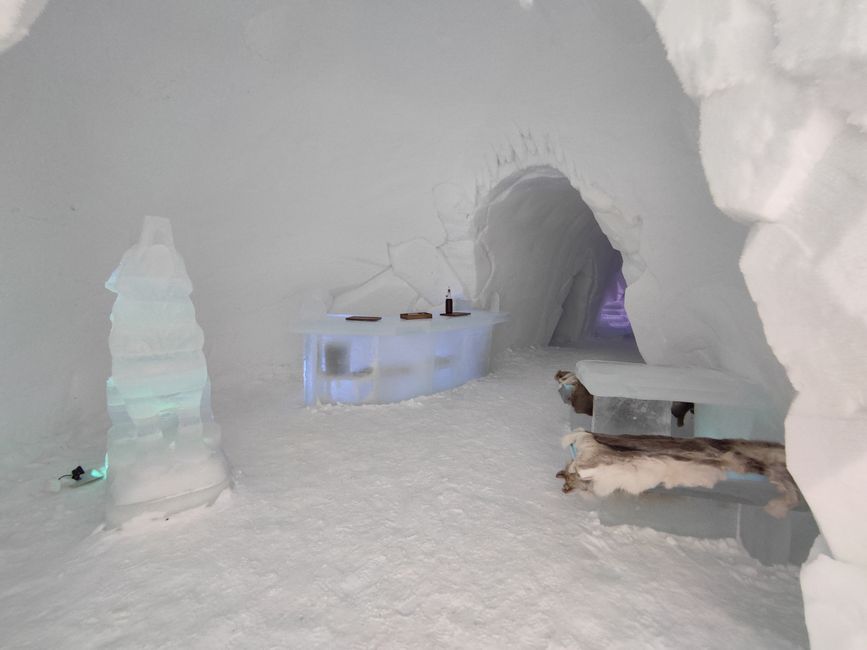
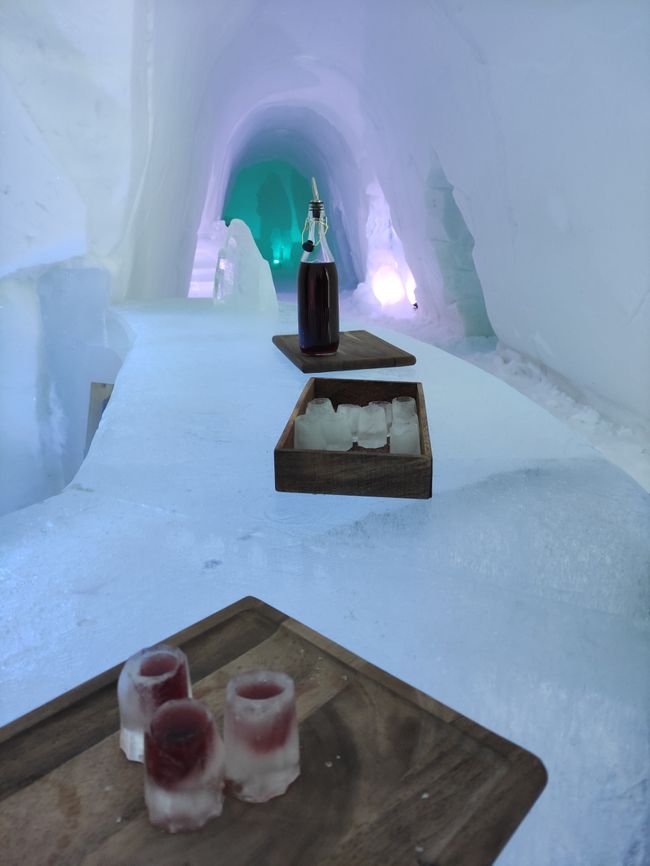
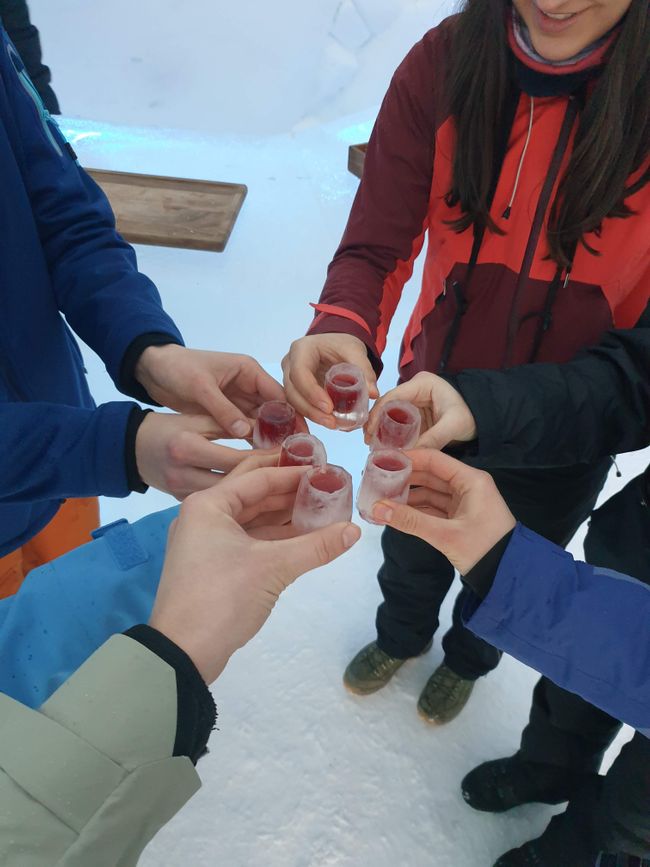
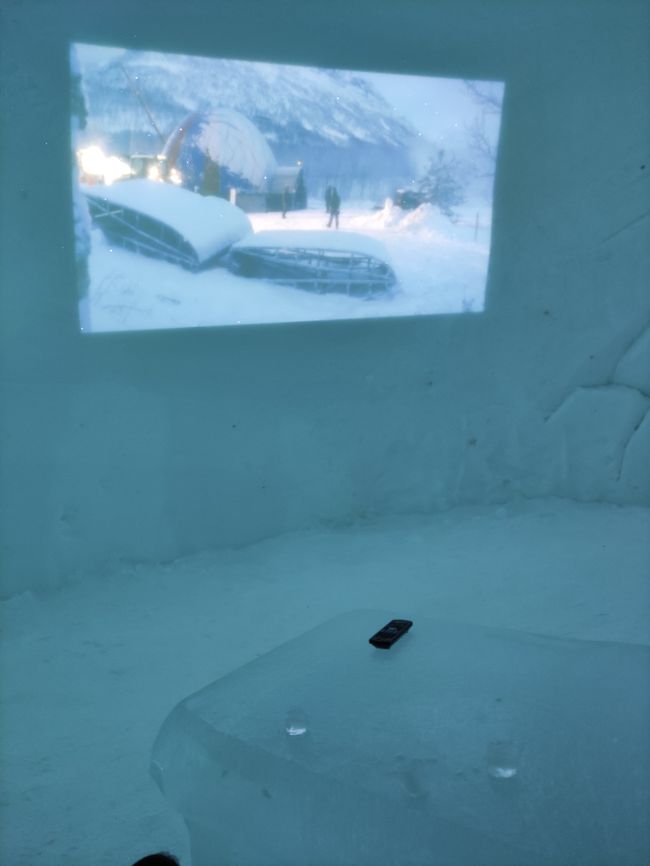
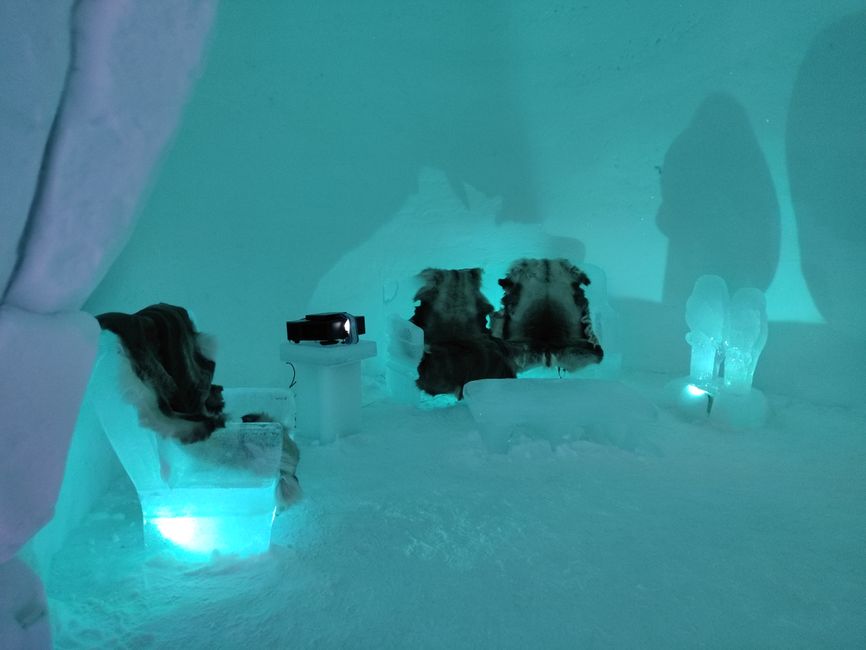
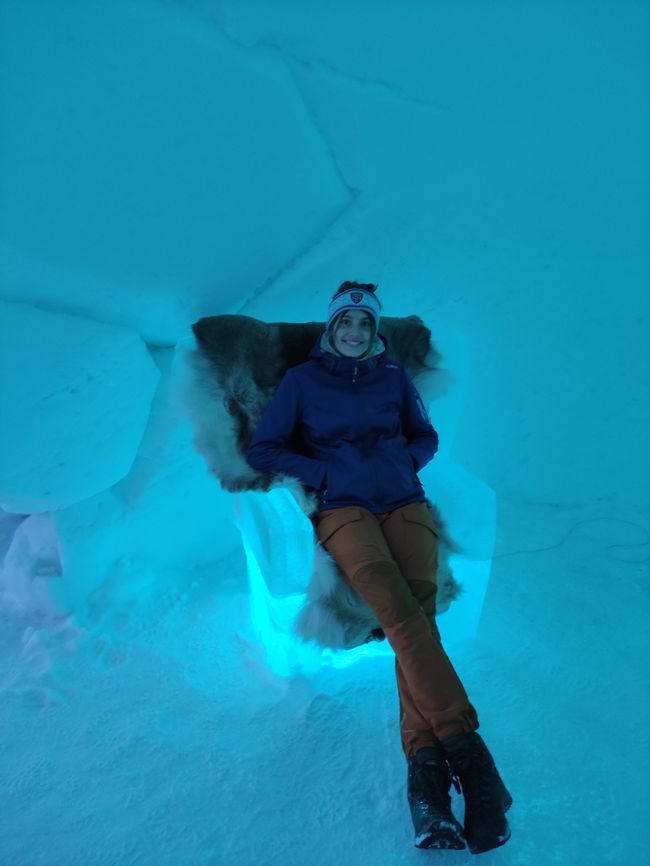
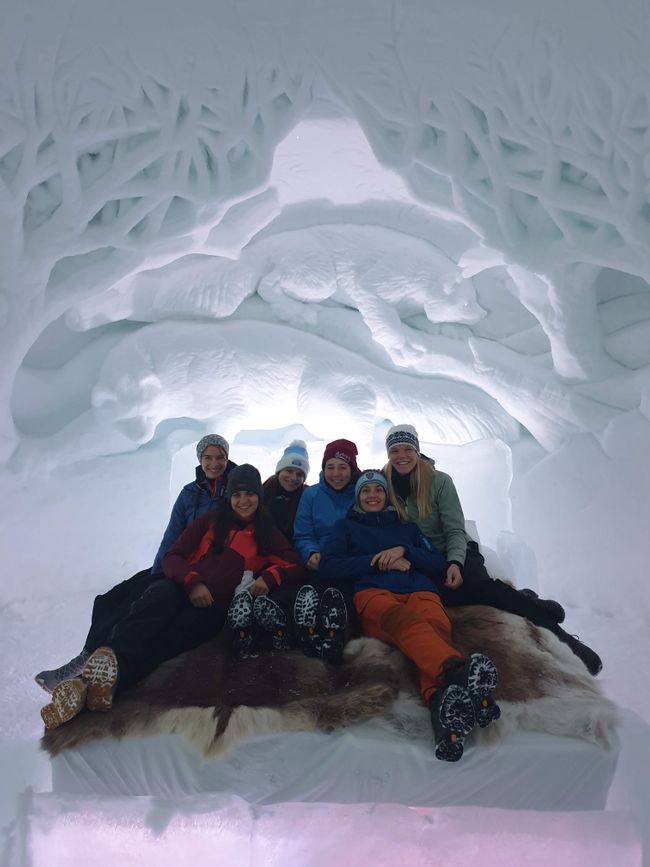
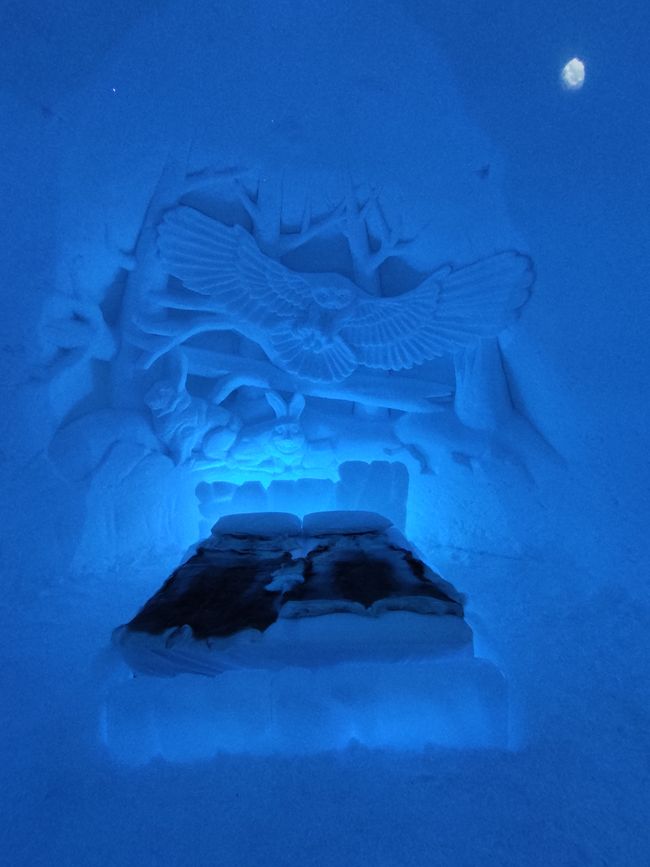
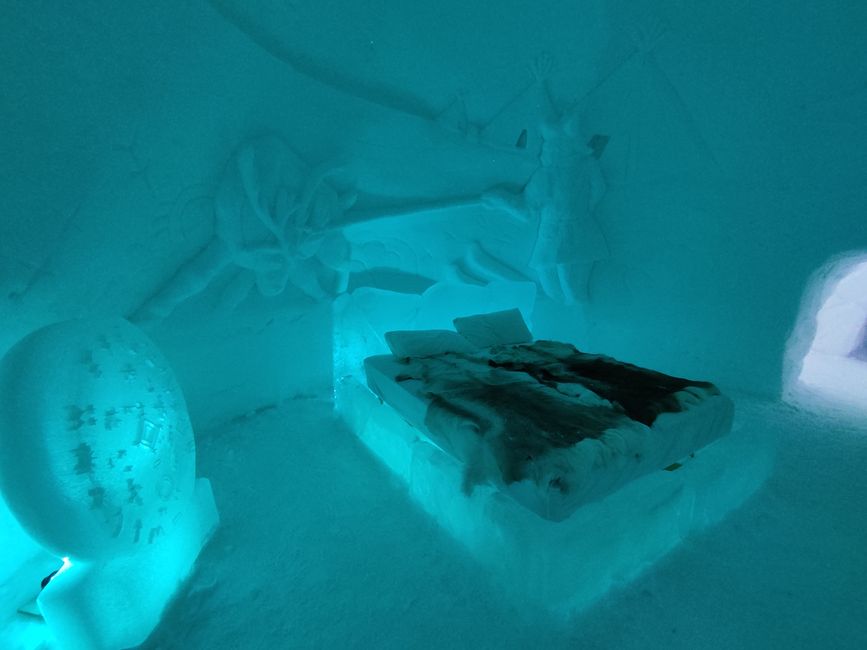
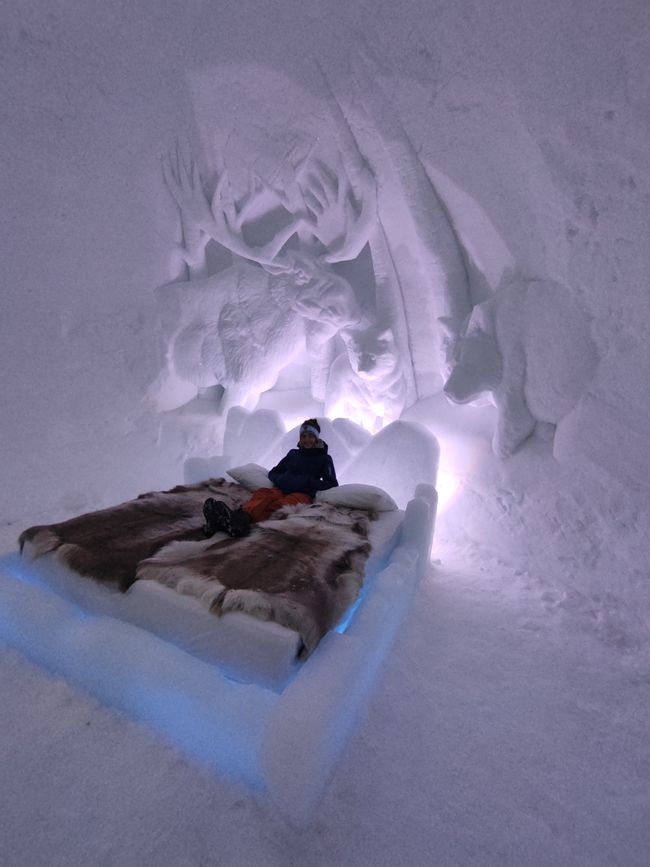
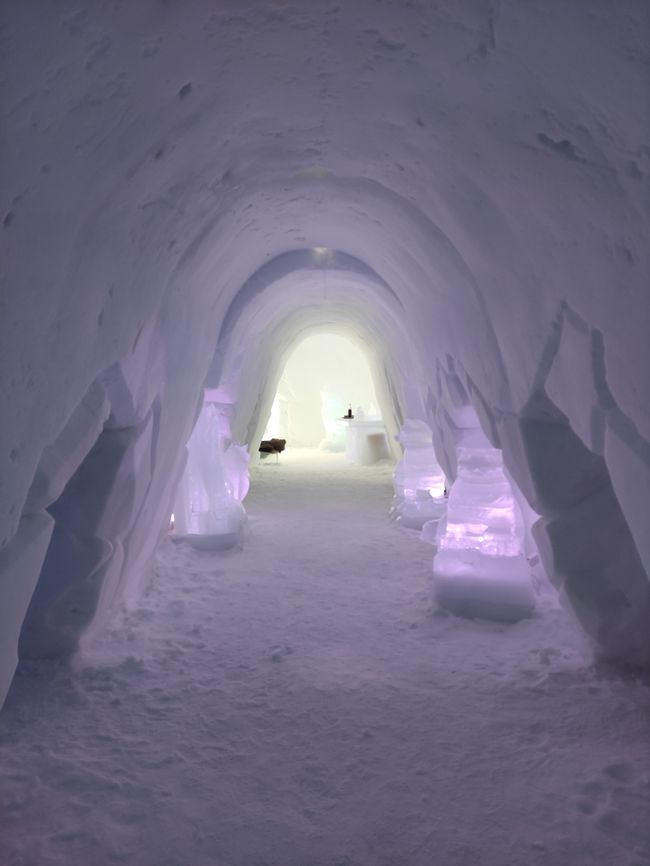
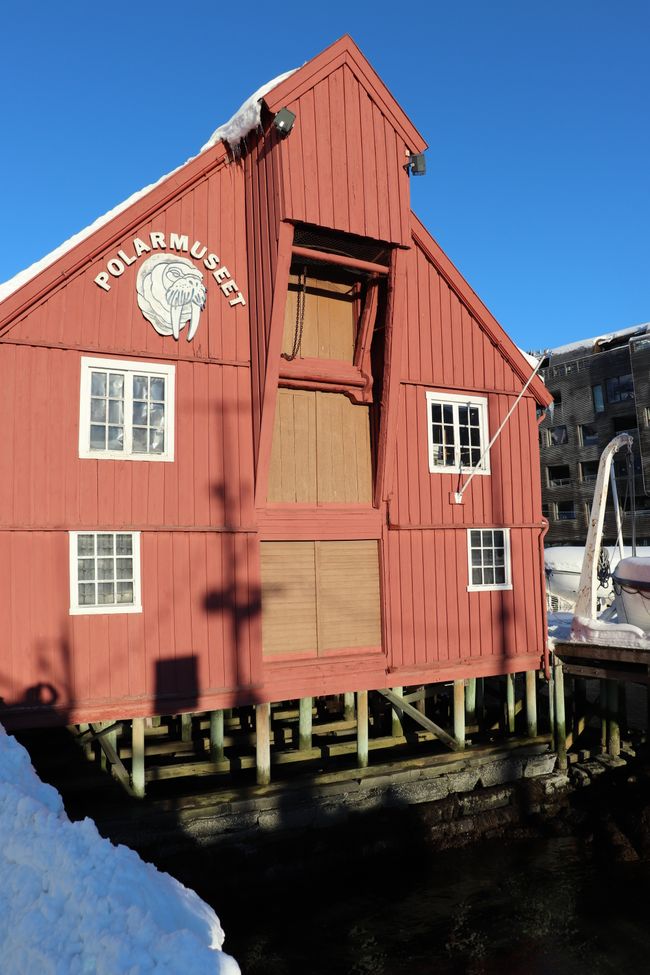
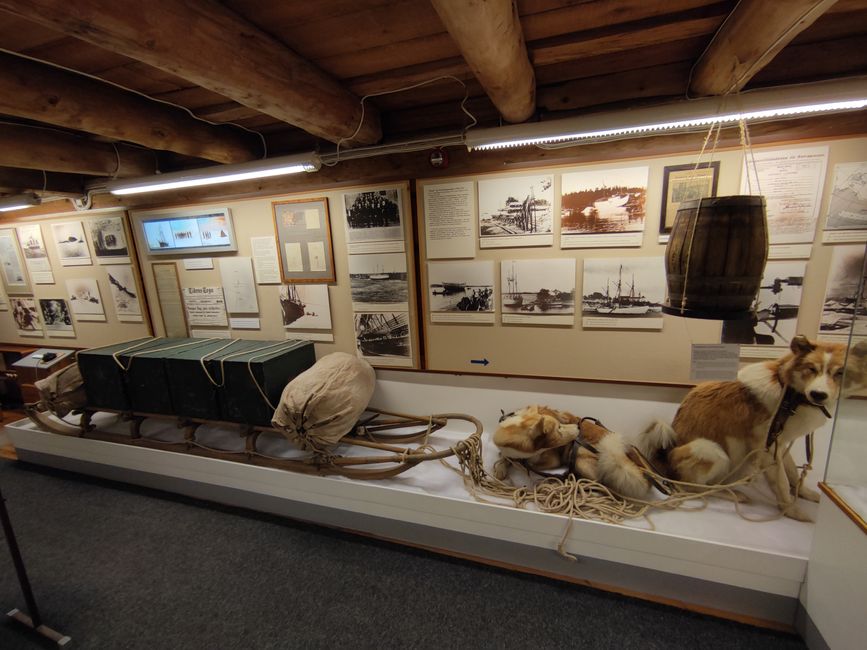
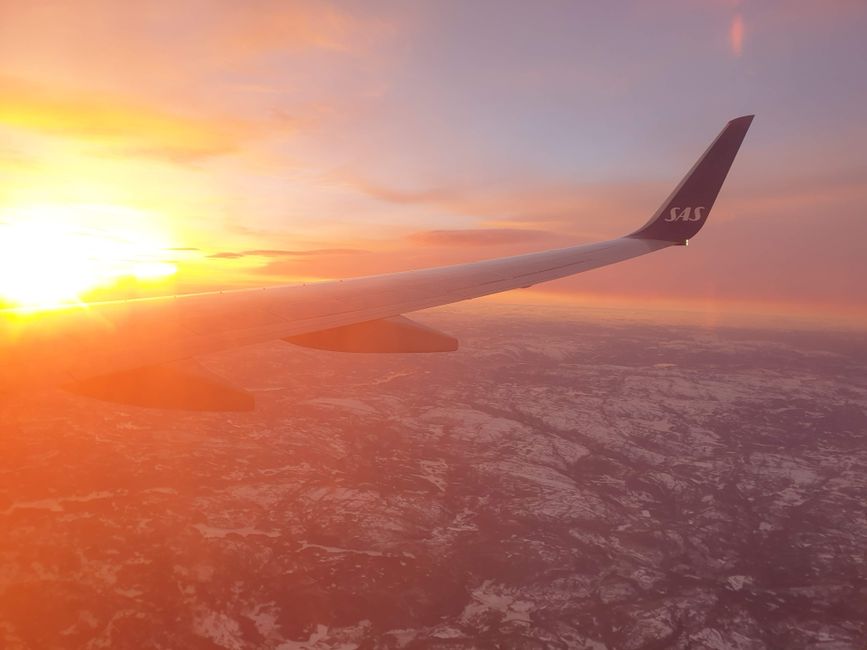
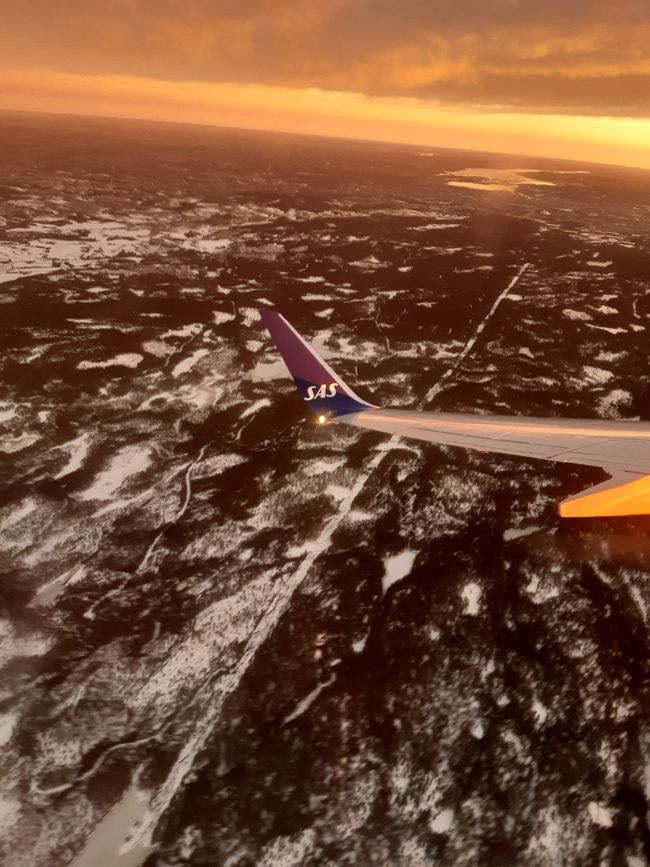
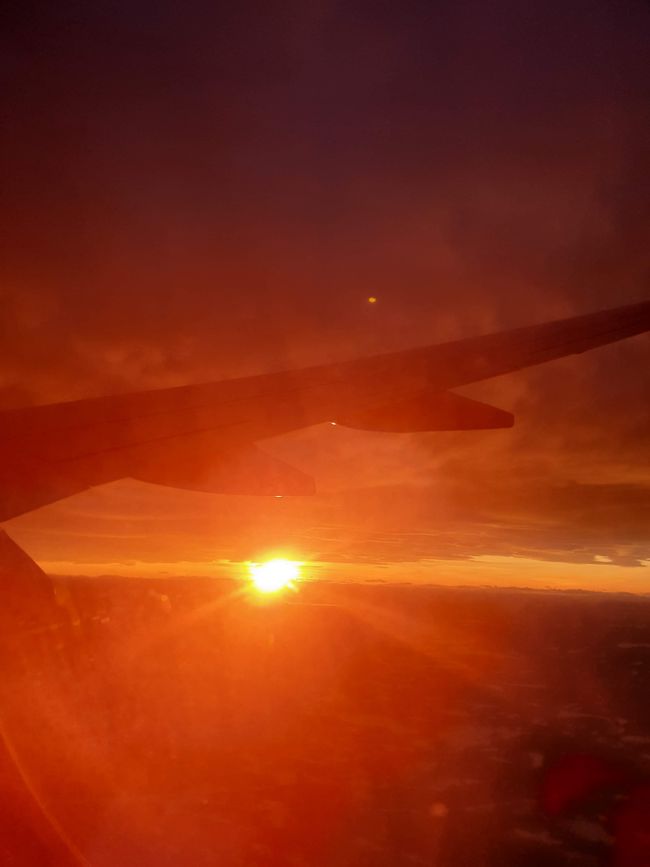
Tilaa uutiskirje
Reine, Ramberg Beach, Flakstad Beach, and Surfing!?
It's Thursday, February 25th, and we didn't start our journey to Å until noon. This morning took a bit longer as we had spread out all our things such as clothes and tent to dry in our accommodation the day before and had to pack everything back up this morning.
Our sightseeing starts with the picturesque fishing village of Reine, which is only a fifteen-minute drive north of Å, still relatively far south in the Lofoten Islands. Reine is surrounded by majestic mountain peaks and located right on the Norwegian Sea. We spend about two hours in Reine. In winter, it's quiet here and there are hardly any people in town, but we still walk around and enjoy the view of the high mountains that are partially hidden in the fog from the harbor. It's very quiet here, the only thing you hear is the screeching of seagulls.
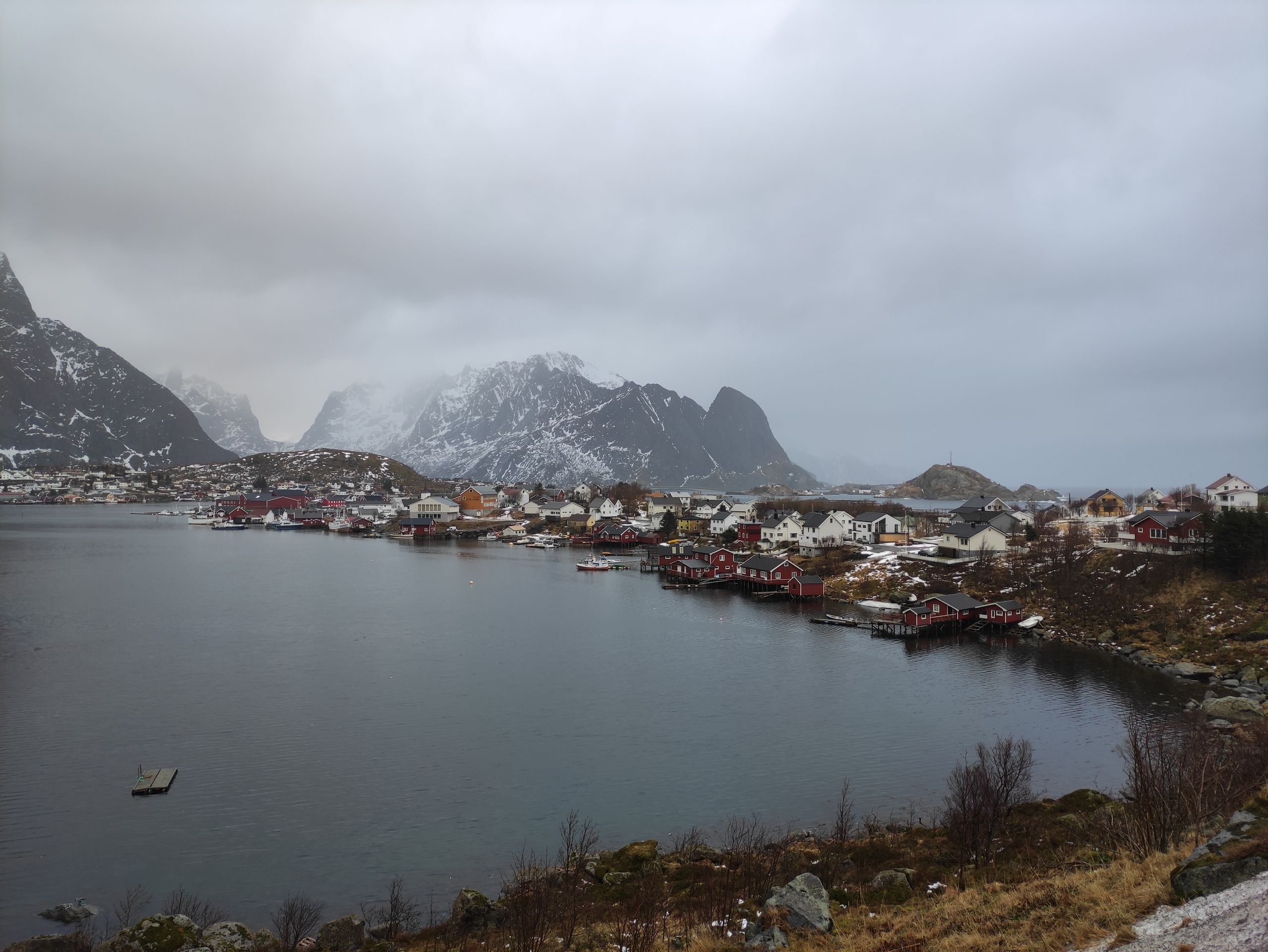
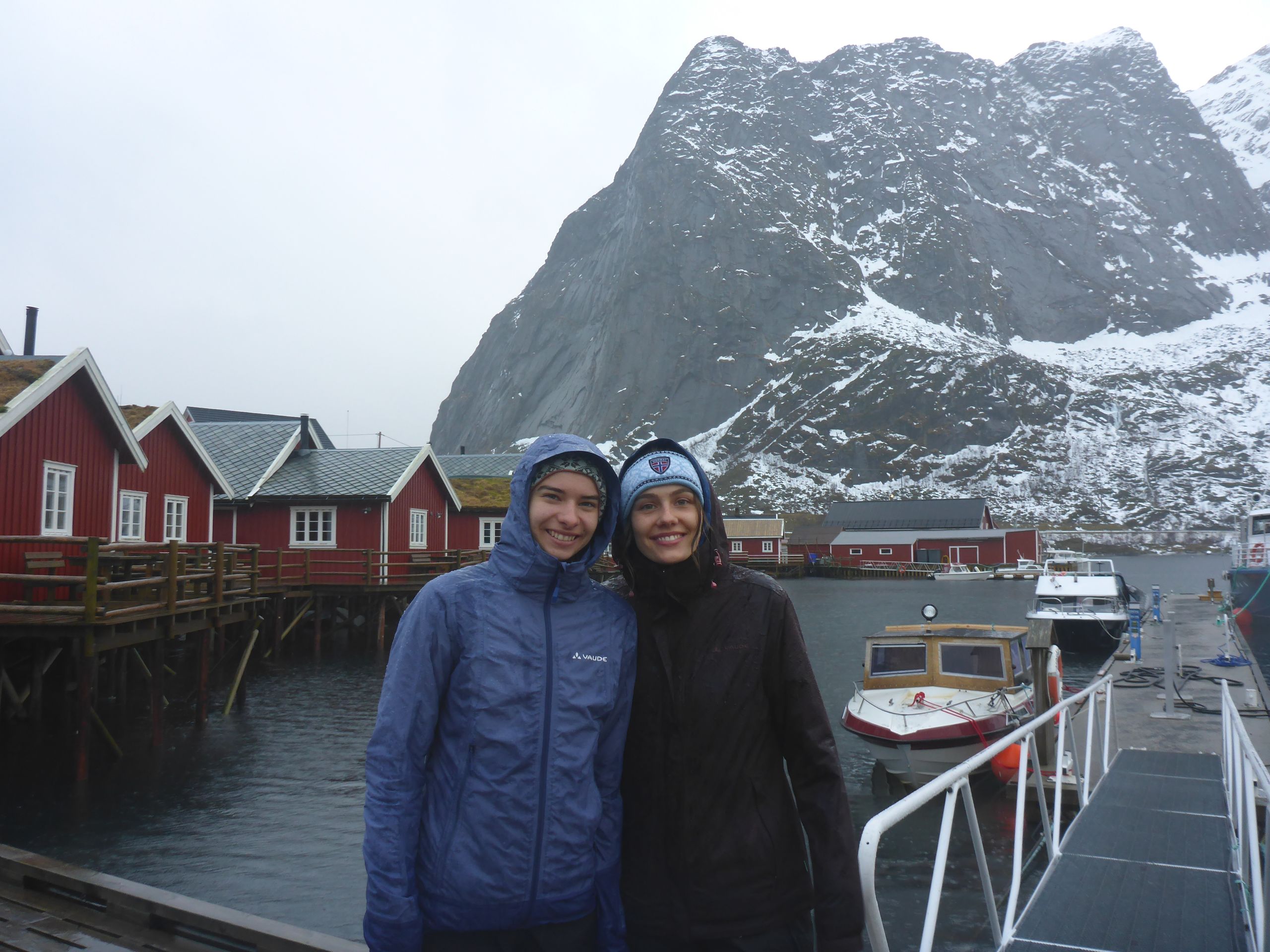
We also see large quantities of the famous stockfish hanging to dry on wooden racks (stokk) in Reine.

Finally, we stroll through the famous row of houses, with exclusively yellow houses right by the water. The water here is turquoise blue, and apart from the bad weather, you could almost think you're in the Caribbean.

After the beautiful town of Reine, we continue our journey, and since there is only one main road in the Lofoten Islands, we pass by Ramberg again, where we spent the night before our hike to Fredvang. There, we discover a beautiful beach, Ramberg Beach. The water is turquoise blue again, and in the background, the mountains are still partially covered in snow. With this magnificent view, we have our lunch.
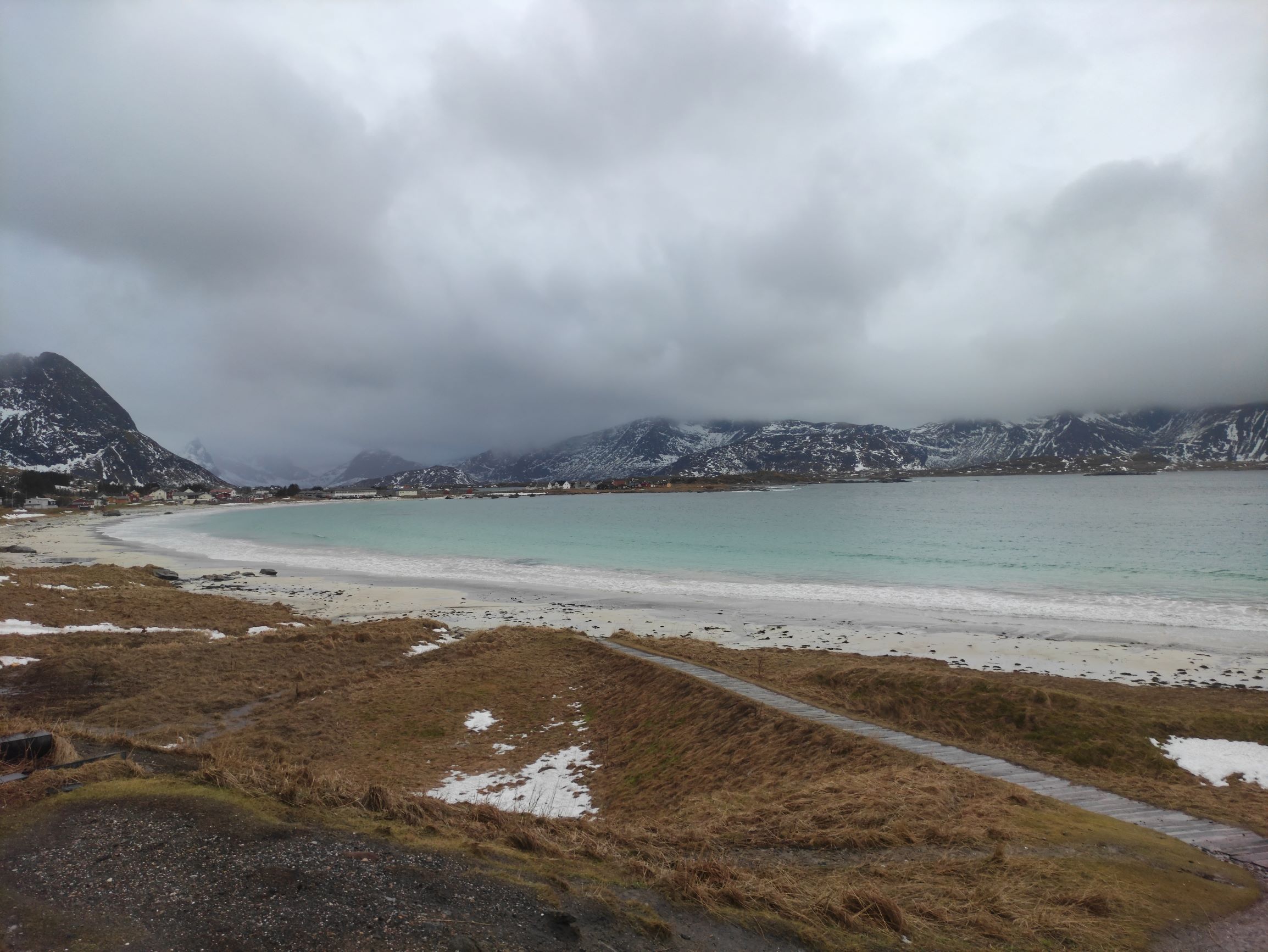
After the quick refreshment, we continue to the next beach, Flakstad Beach, which we actually just wanted to see. But when we arrive there, we see people surfing in the water. In my first comment about it, I declare the people crazy for surfing in winter in Norway above the Arctic Circle in the Norwegian Sea. However, an hour later, I find myself in a thick wetsuit with a surfboard in the water. The man who rents us the equipment gives me a brief introduction to wave surfing since it's my first time. And lo and behold, it works much better than I expected! Although I fall off the board a few times and feel like I'm in a washing machine underwater and even get hit by the board on my head once, overall, it's going quite well. I can even ride some waves all the way to the shore and surfing is so much fun! Especially in front of such an impressive backdrop with high snow-covered mountains! Thanks to the 8 mm thick wetsuit, I hardly feel cold despite the 3°C air and water temperature, and we surf until it gets dark.

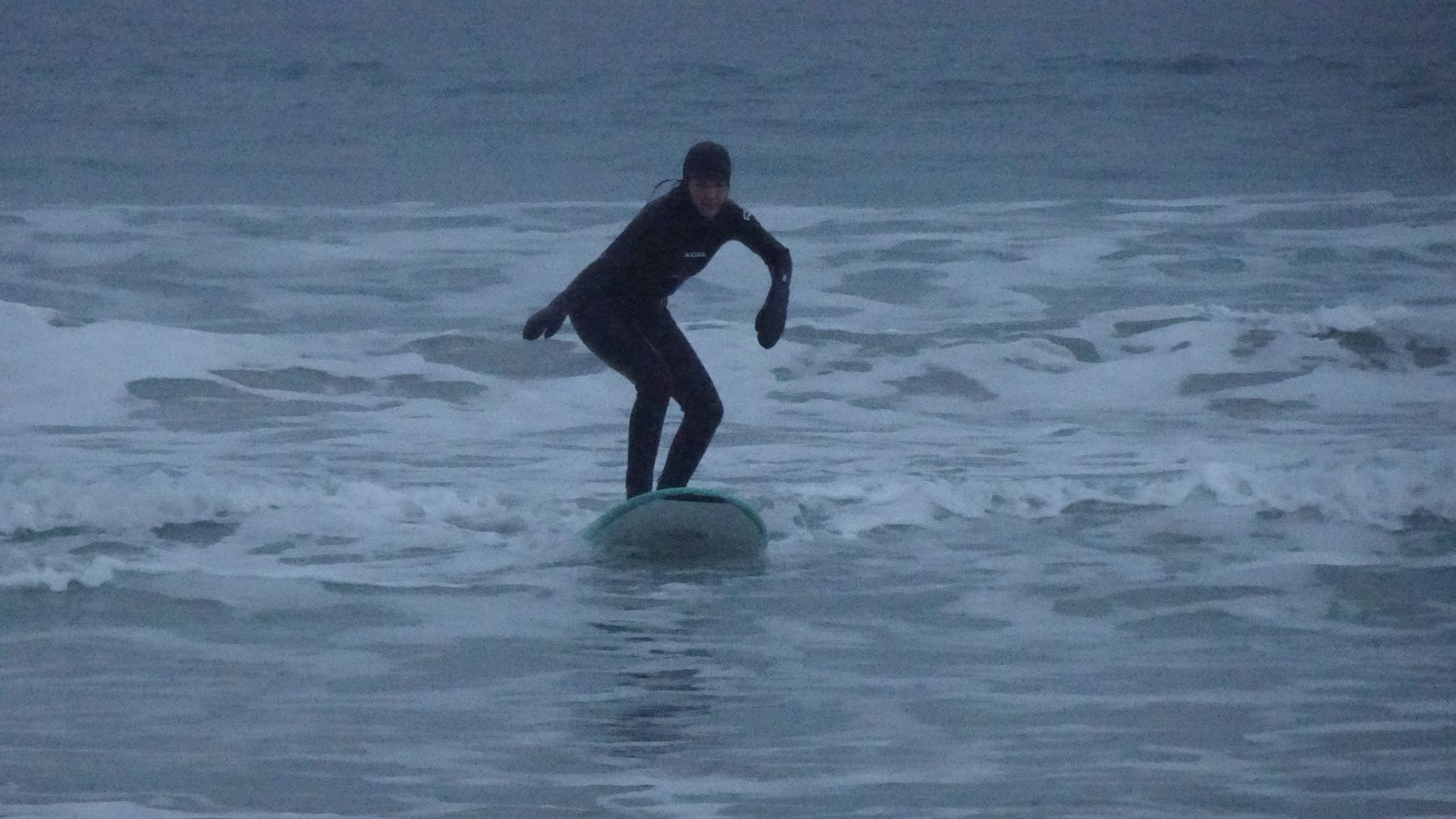
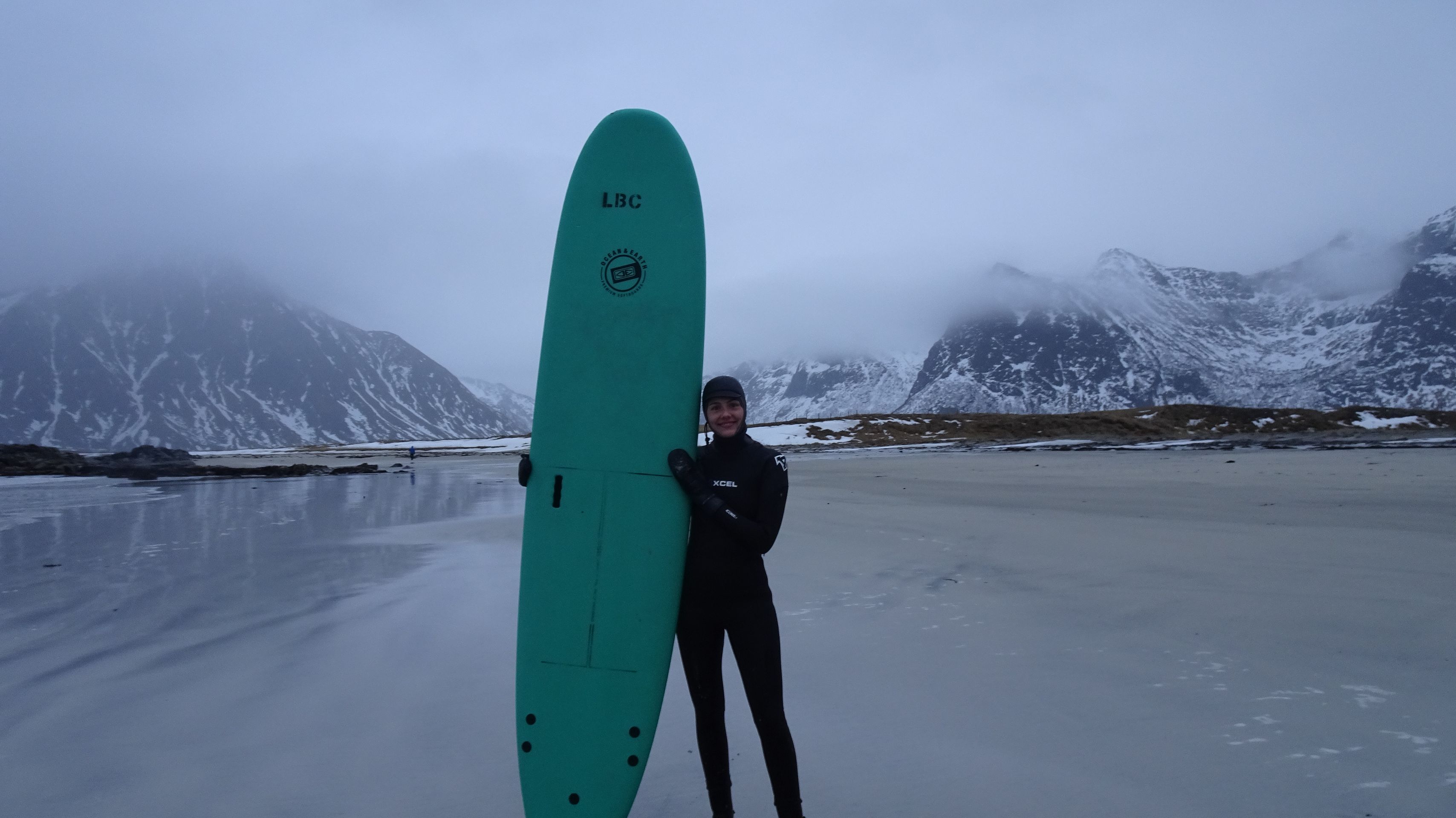
Initially, we had planned to visit Nusfjord today, an old fishing village located directly on a fjord, which is considered one of the oldest and best-preserved fishing villages. However, since we spontaneously went surfing in the afternoon and it's already dark now, we decided to postpone it until tomorrow. In the late afternoon/evening, we only drive to our accommodation, which is about 1.5 hours further north on the Lofoten Islands.
Nusfjord, Henningsvær, and Svolvær
It's Friday morning, and we drive back south a bit to visit Nusfjord, which we didn't manage to see yesterday afternoon.
At the end of the road, directly located on the fjord, is the fishing village Nusfjord, which is now a museum village. In summer, you even have to pay admission here. However, now, outside the season, there is no one here, and we can simply walk along the place.
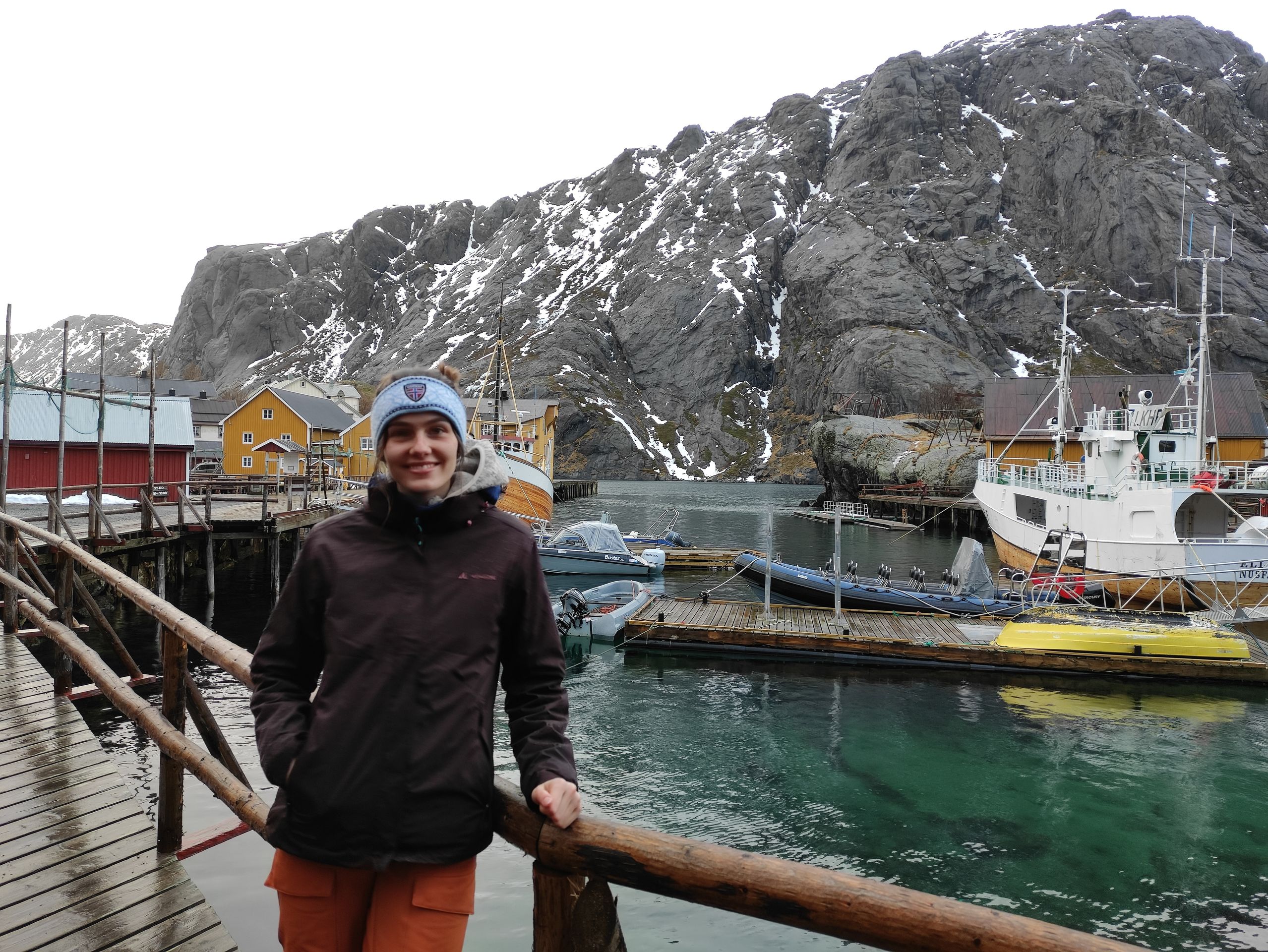
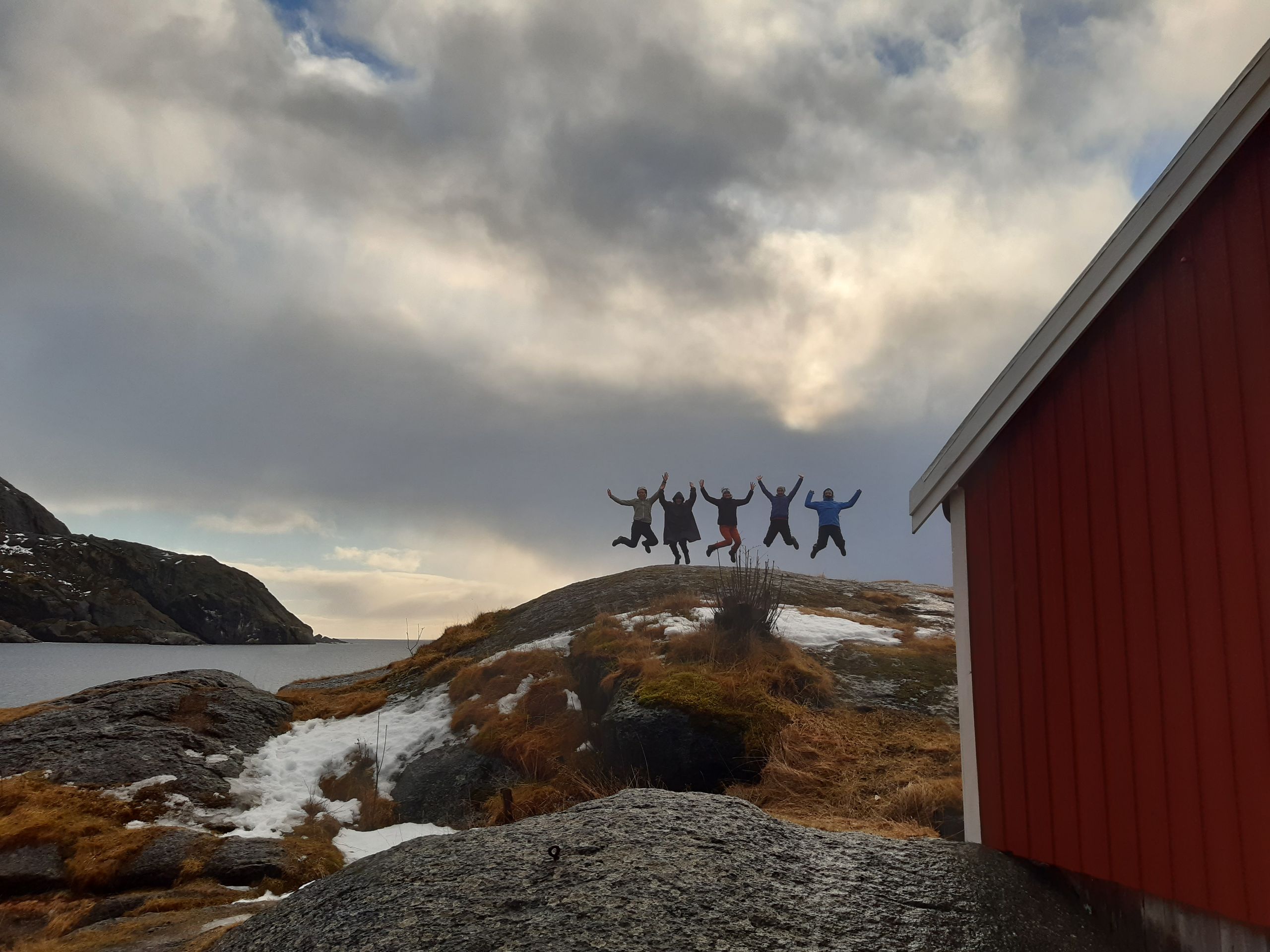
The fishing village consists of yellow and red houses, all built on stilts in the water, and many, many nesting seagulls. They nest on the roofs of the harbor buildings and even on the house lights. We walk out on the other side of the village to the tip of the land, where a small lighthouse stands. From there, we have a great view of the fjord and the open sea. Even the sun appears occasionally.

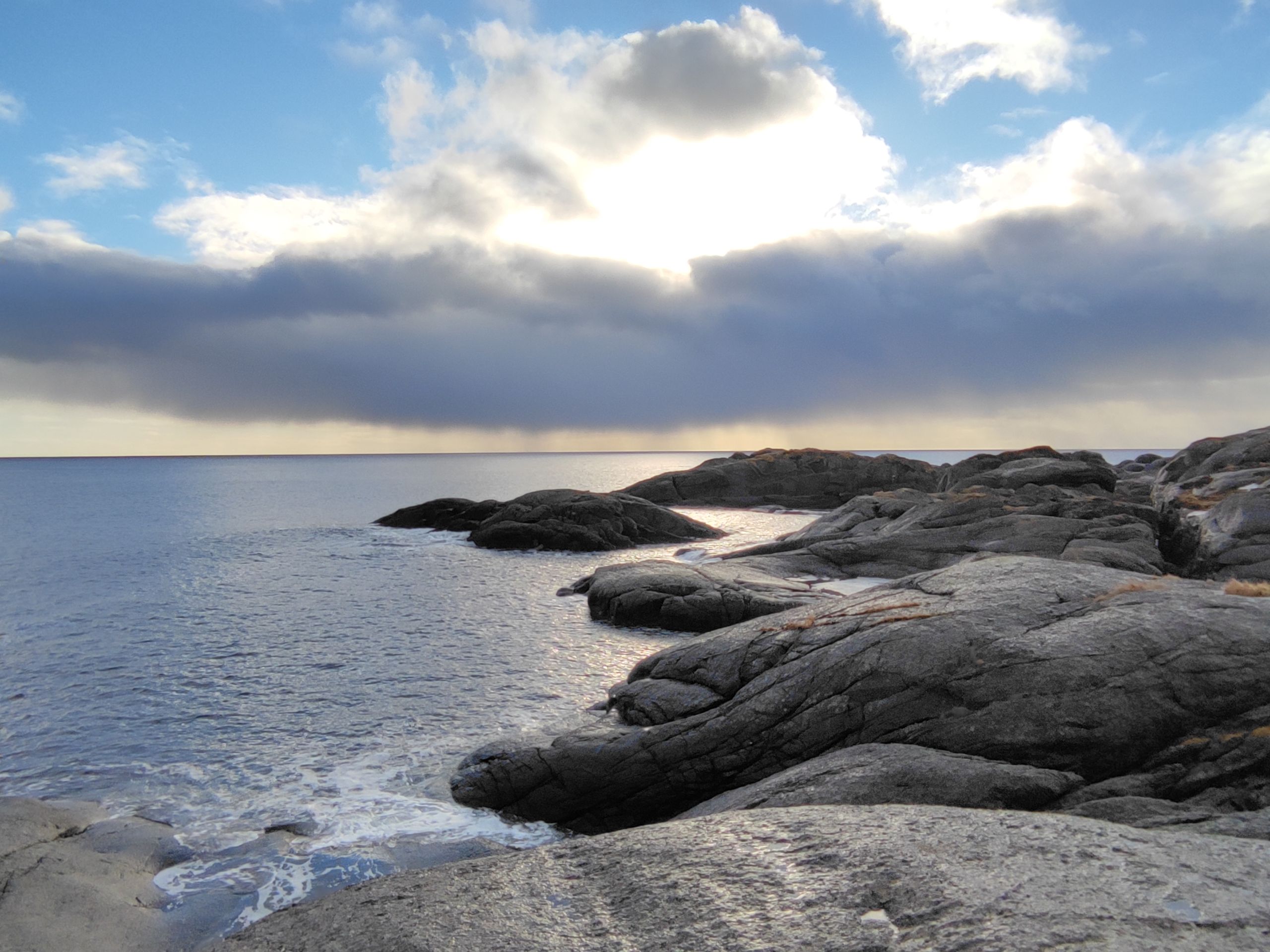
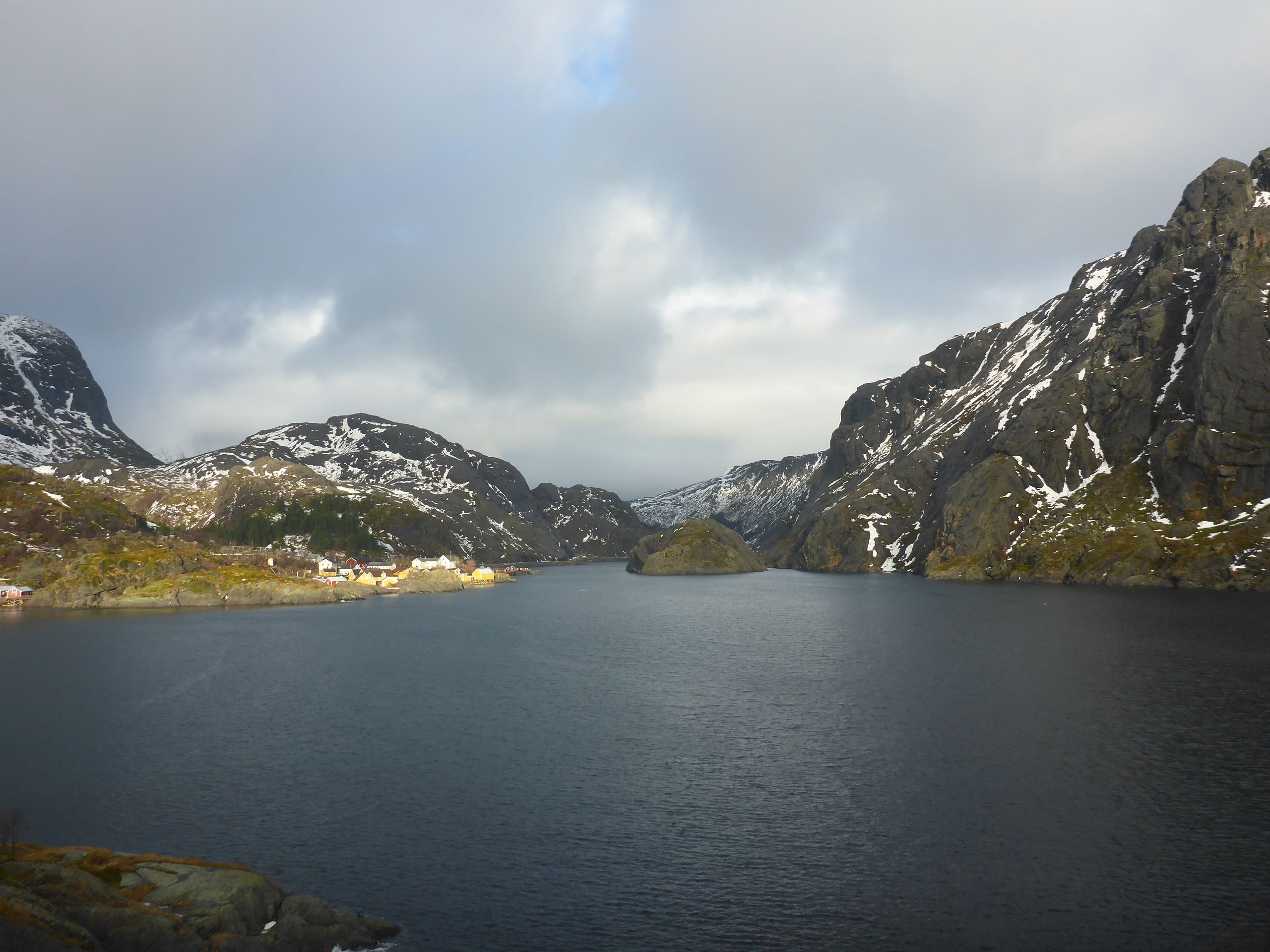
After the extensive walk, we continue - again heading north - to Henningsvær, another, slightly larger fishing village. The small road leading to Henningsvær is so narrow that you can only pass or let oncoming traffic through if there is a lay-by nearby. Here, you have to drive even more carefully than usual. Henningsvær is known for the football field on the island. In reality, and without the perspective from a drone, the football field doesn't look half as spectacular as in the famous drone pictures on the internet. Nevertheless, it's a special place with a beautiful and spectacular backdrop.
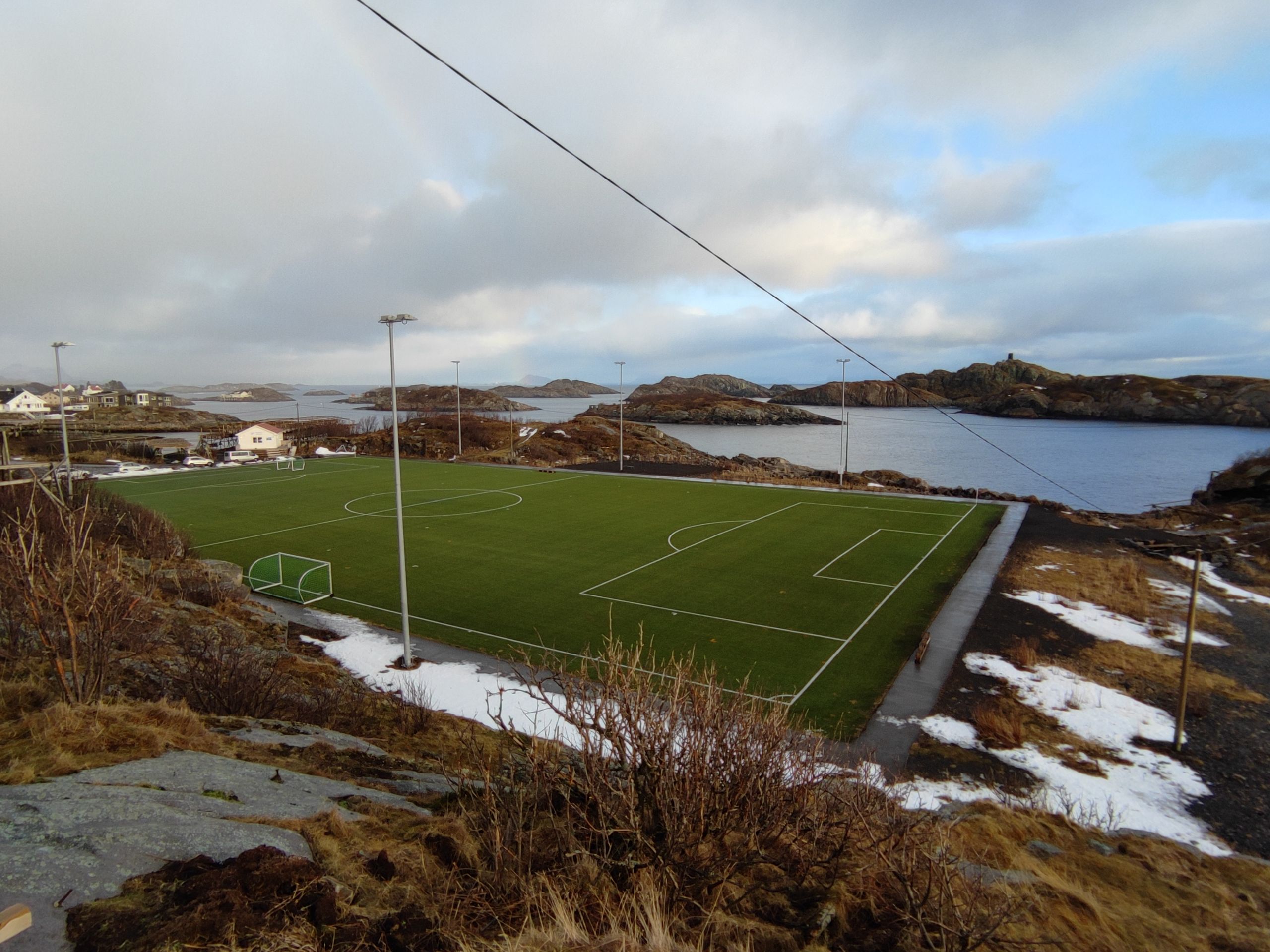
We also take a look at the harbor of Henningsvær. It's really big compared to the previous ones, and there are many boats there.
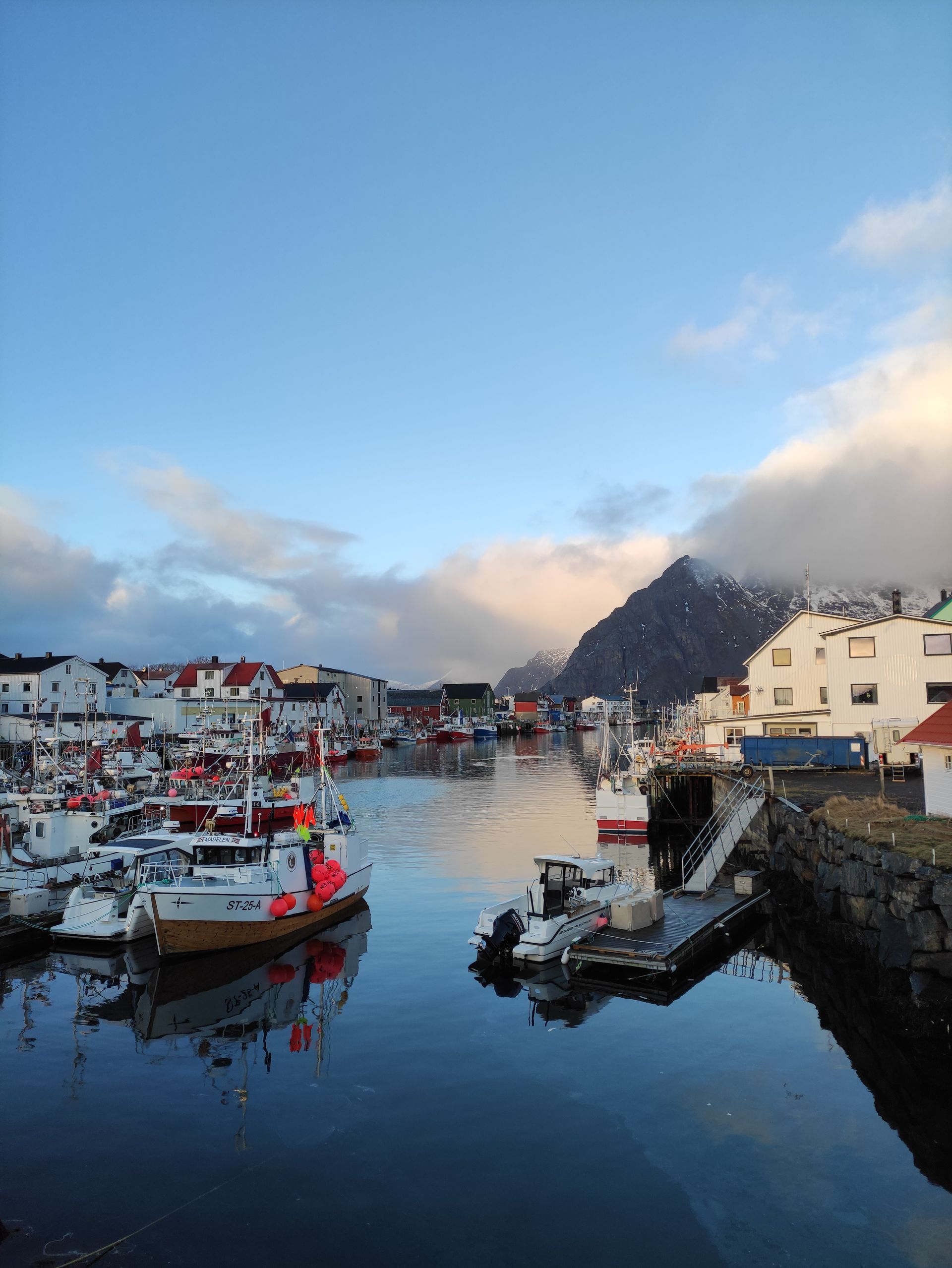
In general, there is much more activity and life on the streets here in winter than in Å, Reine, and Nusfjord. After having a piece of cake in one of the cafés here, we continue our journey because it's already afternoon.
We want to drive to our accommodation, which is near Narvik, and on the way, we pass by Svolvær. Svolvær is the largest city and therefore the most important place in the Lofoten Islands. However, since Svolvær is already very urban and industrial, we don't stay here long and continue our way towards Narvik. When we arrive at the accommodation, it's already quite dark. Tonight, we treat ourselves to wine and play some games for dinner.
Narvik
It's Saturday morning, and we want to drive from our accommodation near Narvik into Narvik itself. Narvik is a large city that is no longer in the Lofoten Islands but is located just before them on the mainland. The Swedish border is only about 40 km away from Narvik, as Norway is very narrow up here. Since some others from our "Outdoor Education" course are nearby on a campsite, which is on our way to Narvik, we decide to visit them. We have a little chat and they show us the many, many tracks of moose scattered in the deep snow on the campsite. After an hour, we continue our journey. Once we arrive in Narvik - unfortunately, unknowingly, we took the road across the big, impressive Narvik Bridge ('Hålogaland Bridge'), which will cost us about €11 or €12 - we first go to the war museum. It was very interesting to learn about the role Norway, and especially Narvik, played in World War II, including for the Germans, and everything that happened here at this location. Afterwards, we walk around the city a bit, and among other things, a ski slope becomes visible on the mountains above the city. We drive to our next accommodation on the E6 heading north, experiencing a lot of aquaplaning as it has been raining all day.
Back in Tromsø: Ice Hotel and Polar Museum
Today is Sunday, and we drive the last stretch from Narvik back to Tromsø as our return flight is the next day. On the way to Tromsø, we stop at an ice hotel. We take a look inside, and it's fascinating how well the furniture is replicated in ice and how well you can actually sleep in it. In such ice structures like the ice hotel, it's always between 0°C and -4°C, regardless of how warm or cold it is outside - a physical law, after all. The way an igloo is built is also impressive: the snow is shoveled or thrown onto a sheet of plastic, which represents the future shape of the igloo, and the snow compresses and solidifies by its own weight, without needing to press it.
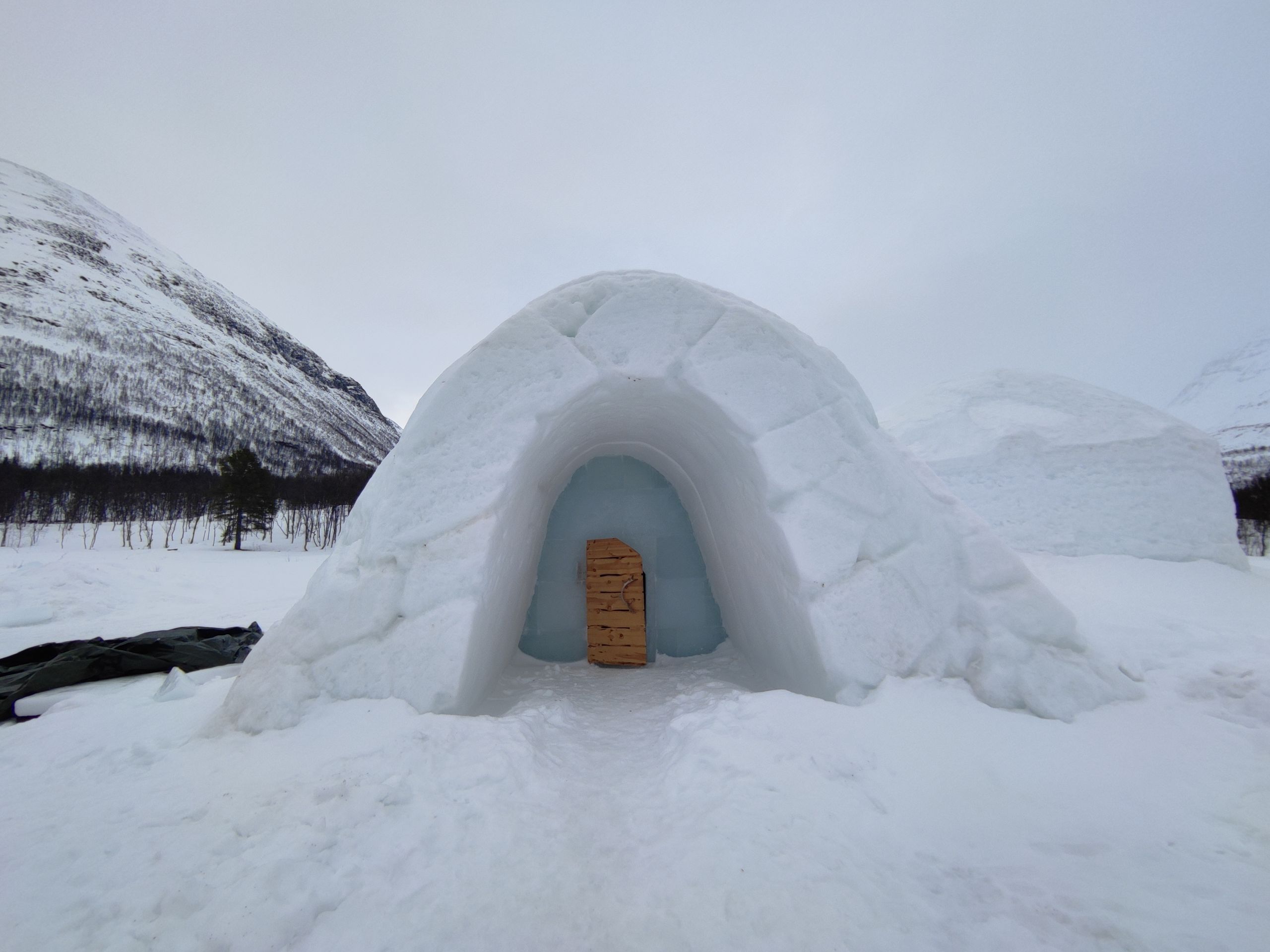

After this experience at the ice hotel, we continue to Tromsø. We spend our last afternoon at the Polar Museum in Tromsø. There is a lot of information about the life in the region in the past, such as the hunting traditions in the polar regions and the significance of seal hunting, the first Norwegian polar expeditions, and the important explorers Fridtjof Nansen and Roald Amundsen, and more.

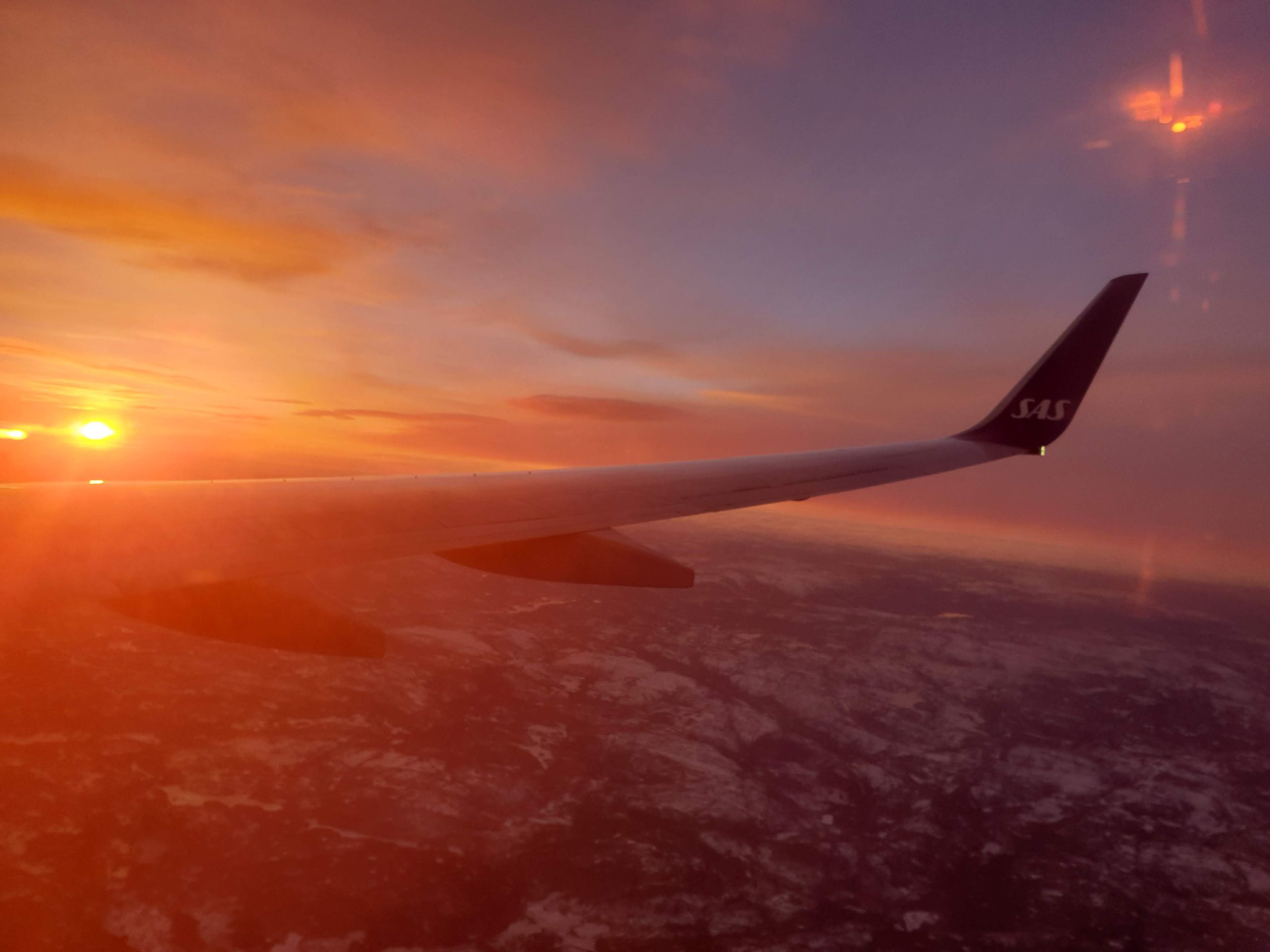
After the museum visit, we drive to our accommodation, which we booked through Airbnb and which is not far from the city center.
Hello Kristiansand, hello spring!
It's Monday, March 1st, and we fly back to Kristiansand. Our flight from Tromsø to Oslo doesn't depart until 2:25 PM (2:25 PM to 4:25 PM), but we have to return the rental cars at 10 AM. Therefore, we leave for the airport at 9:30 AM and return the cars to the rental agency. I pass the time until the flight by eating and listening to music. Our plane is delayed, just like on the outbound flight. But once again, we're lucky, and the connecting flight in Oslo is waiting for us. Since Oslo is even further north than Kristiansand, and the sun sets earlier there, we fly the entire route from Oslo to Kristiansand into the sunset (flight time: 5:05 PM to 5:55 PM).

When we land, I notice that a lot has changed here in the south during the twelve days we were in Northern Norway. Spring has arrived here. It's already significantly brighter than it was two weeks ago, it's not as cold anymore, suddenly it's 7°C, crocuses are blooming, and I see my home for the first time without ice and snow!
Stay tuned for the next update on what happens here now without the snow and winter activities!
Until then, Sara
Tilaa uutiskirje
Vastaus
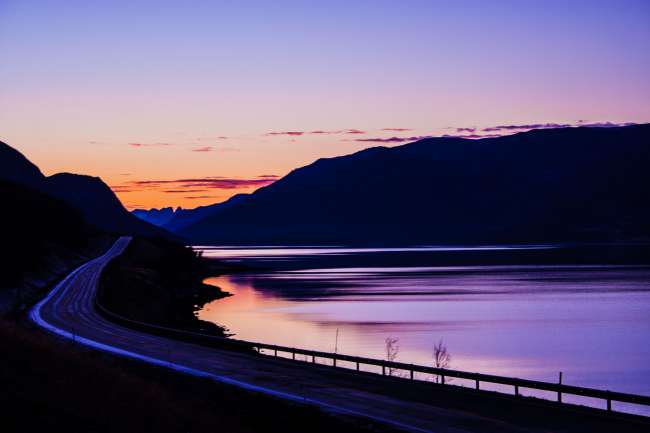
Matkaraportit Norja
